





 |
 |
 |
 |
 |
 |
|---|---|---|---|---|---|
 |
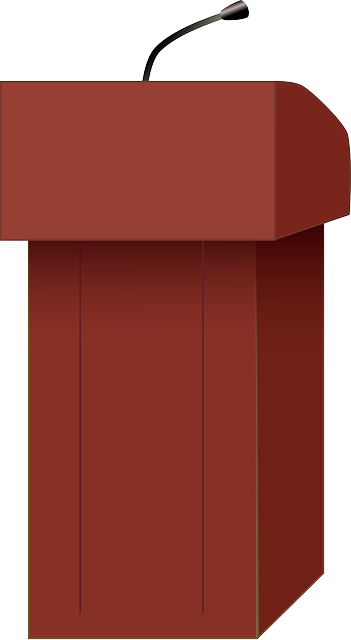 |
|
|---|---|---|
 |
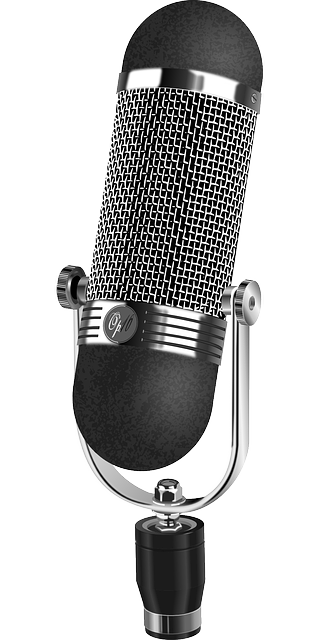 |
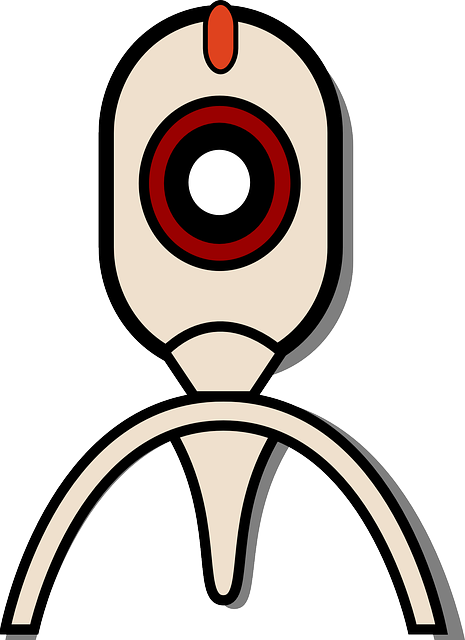 |
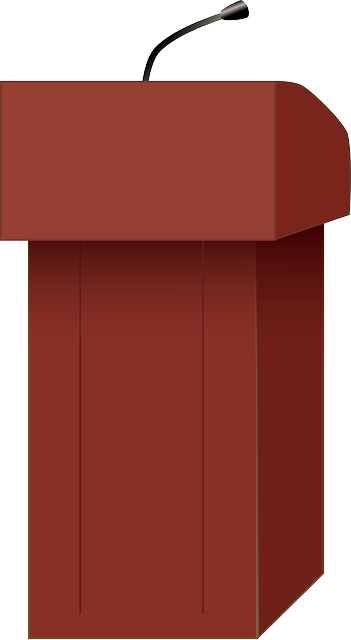 |
|---|---|---|---|
Use all channels of communication. Text, audio, video, and in-person.
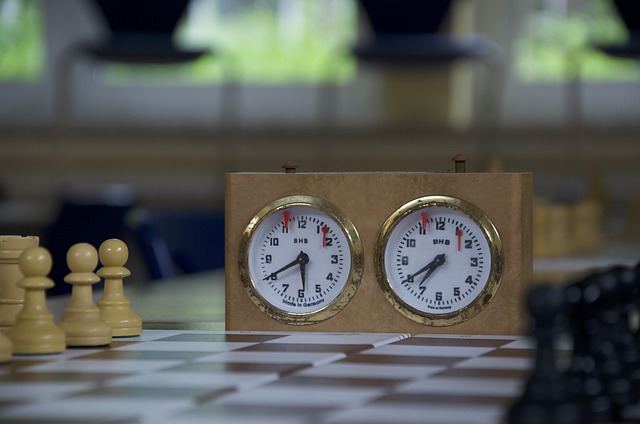 |
|---|
Teachers should post frequently, to encourage students to post frequently.
Post fast, to encourage students to post fast. You want real-time dialogue in the text forum. Speed chess is exciting.
Have alerts for posts that warrant fast attention.
Enable editing of posts after they've been written. It encourages people to post fast, since they can polish the post later. This cuts down on clutter.
The audio channel should have people in it at all times, so that students know that they can always reach out to the channel.
A voice channel should have a dedicated text channel associated with it.
Have a large number of chatrooms with specific topics, and be ready to create new rooms as needed.
 |
|---|
The forum platform should be able to operate on threads. Threads can be transplanted, merged, or pruned.
Write summary posts that summarize a thread.
Have lots of channels, and give them a sensible structure.
Threads should never expire.
Discord is a good platform. You can create your own universe where you are king and moderator. It has text, voice, and video. You can customize your universe.
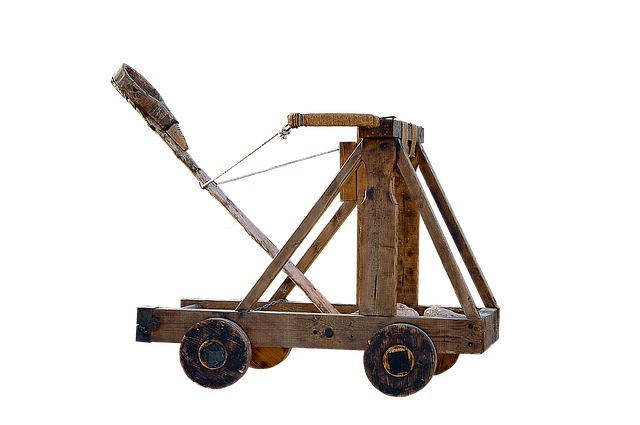 |
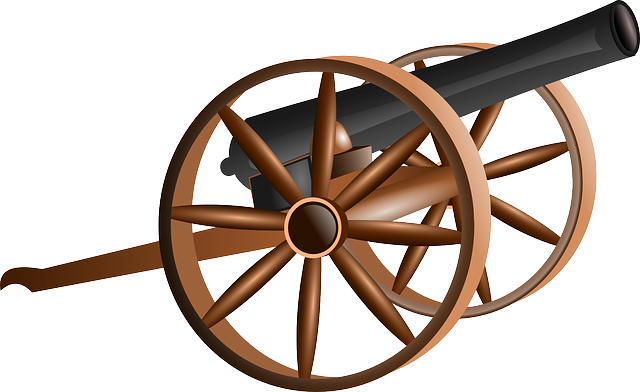 |
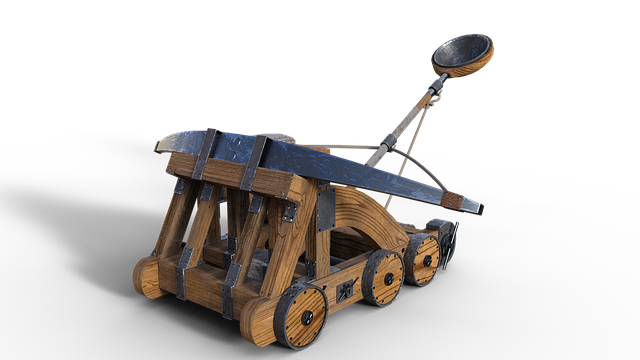 |
|---|---|---|
Have a web page of resources, with things like:
Pop-science articles
Daily news
Frequently asked questions
Plots
Extra credit problems
Technical material
Teacher biographies
It helps your image to have an arsenal of textbooks that you wrote. Use both public material and your own textbooks.
Teachers should have a private channel.
 |
 |
 |
 |
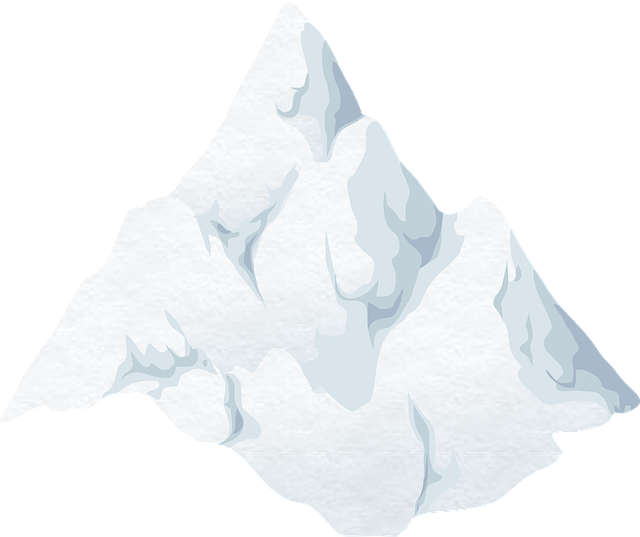 |
||
|---|---|---|---|---|---|---|
Have problems at all difficulty levels.
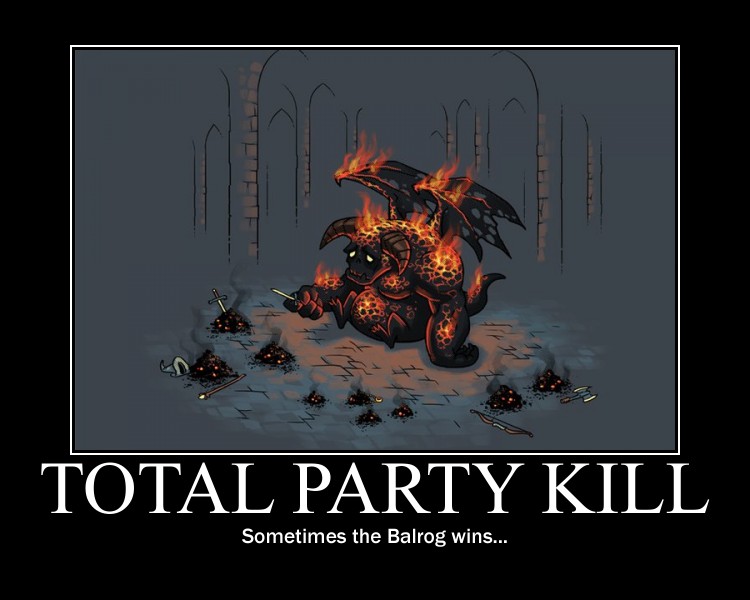 |
|---|
Encourage students to have the patience to tackle hard problems.
Have multiple ways to score points. For example, the Tour de France has multiple categories, such as best climber, best sprinter, best overall time, most combative, best team, etc.
Establish a network of homeschools, churches, and elderly homes.
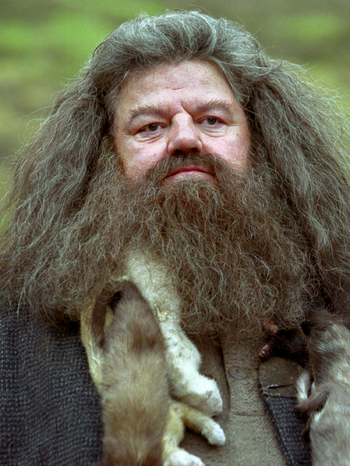 |
||
|---|---|---|
Celebrity teachers attract students, and students respect celebrity teachers. A school should help its teachers look like celebrities. This helps get respect from students.
You want students to retain an interest in the teachers after the class concludes, and you want to network the students.
Have an online forum for alumni.
You want students to endorse your classes to other students.
Have a set of sample material online that endorsers can point to.
There are lots of cheap ways to advertise, especially in online forums. Establish a presence on online forums and use the opportunity to advertise.
Build a team of panelists and practice the art of witty banter. Have team chemistry.
There should be abundant silence. Silence gives a speaker the luxury of delivering a point leisurely, and it makes it easier for people to jump in.
A panel should be able to focus on a topic.
Pass the conversational ball often.
If you interject a speaker, give the conversational ball back to the speaker after you interject. Interjections should be synergistic with the speaker.
Establish a presence on science forums, and establish scientific respect on the forums. Show that your science teaching is advanced and of value to the forum.
A museum can have an auditorium where a scientist is on stage all the time, fielding questions from the audience and giving pop science talks.
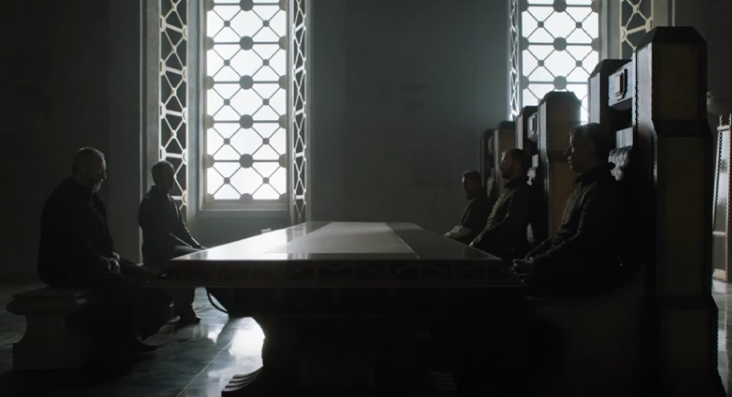 |
 |
|---|---|
Use numbers to make things objective. Ask numerical questions. Have abundant plots.
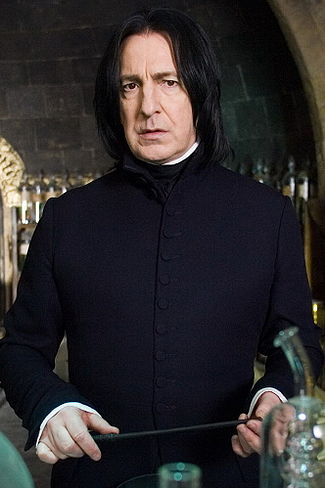 |
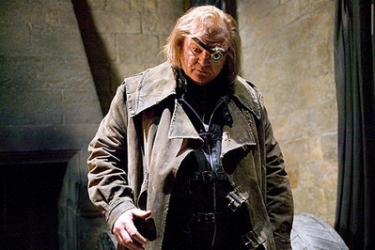 |
|---|---|
Teach material that is practical and powerful.
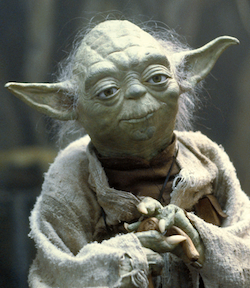 |
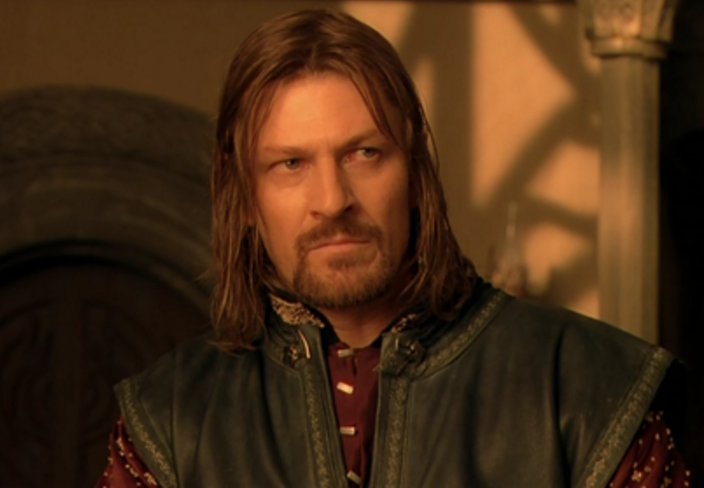 |
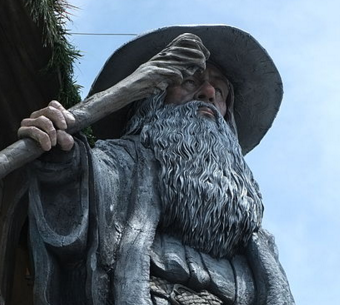 |
|---|---|---|
Find ways to motivate students to work hard.
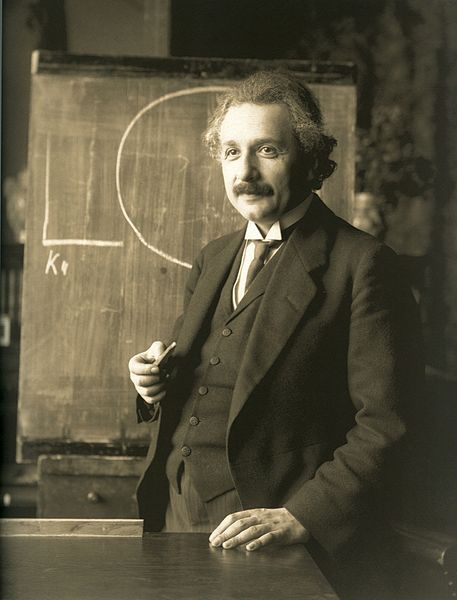 |
 |
|---|---|
 |
 |
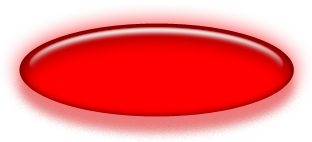 |
|---|---|---|
Offer students both the red and blue pill. If they take the blue pill, make sure they know it's a blue pill.
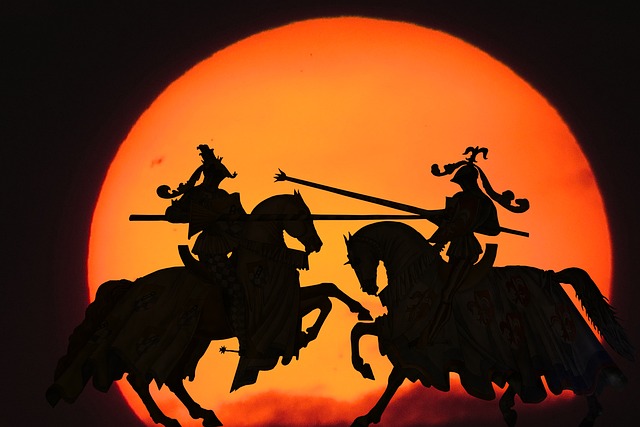 |
|---|
On science forums, establish a reputation for being a skilled scientist. Engage in science duels and win. This helps get respect from students.
 |
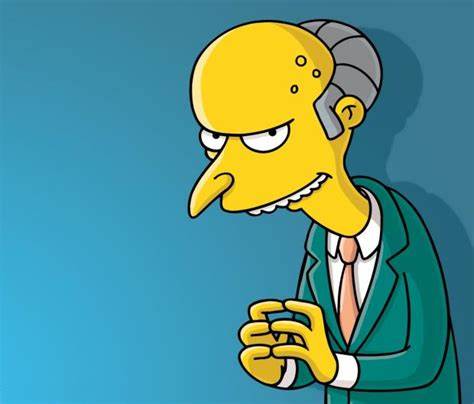 |
|---|---|
Be specific about what is good work.
Students should connect to student forums that are outside the school. Your school is an exclusive club, like a fraternity, and this helps with networking outside the school. You have a pack backing you up. Teachers should do the same.
Allow any topic to be raised.
Have teachers cross over between classes. For example, the ecology class has a full time ecologist, and scientists from other classes occasionally post.
 |
 |
 |
|---|---|---|
Game shows are fun. Hold game shows and score students by their speed and accuracy.
You want students to do the reading before the lecture. A game show based on the reading encourages students to do the reading.
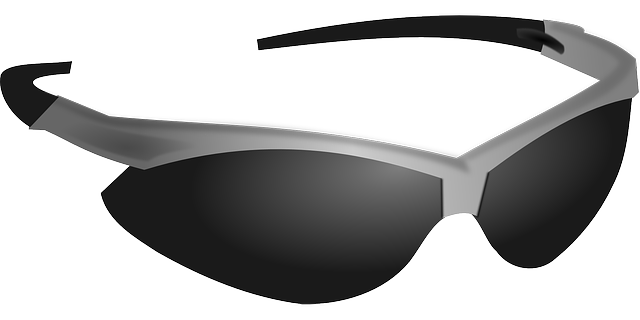 |
 |
 |
 |
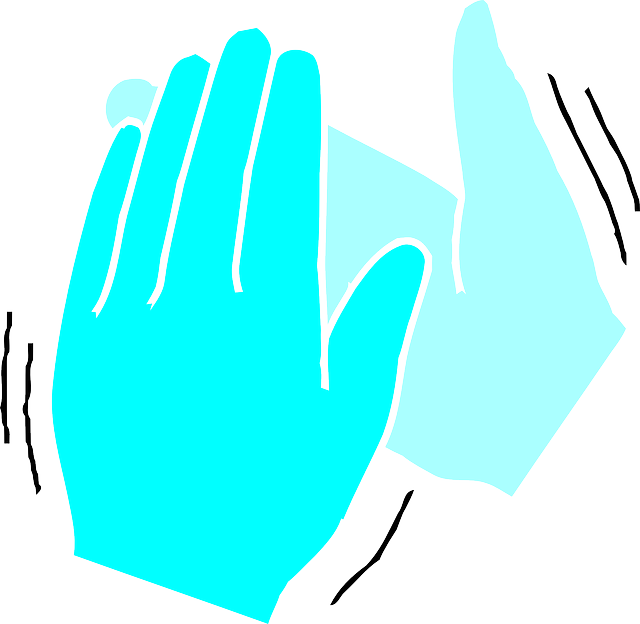 |
|---|---|---|---|---|
A good post inspires others to reply. Encourage students to make such posts.
A "heavy post" includes:
A plot
Teachers can team up to produce a heavy post.
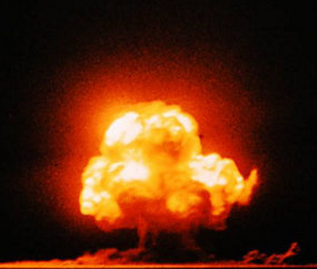
Numbers
A calculation
A link to a web article that expands on the topicl
A link to a youtube video.
Sound bites.
A few paragraphs of text.
Questions for the audience.
The museum should have an online pop-science magazine, with teachers contributing.
Use a musical instrument to spice up your audio and video channels.
Homework can be assigned that has value to teachers. For example, have students assemble data and analyze it. Choose projects where the output can contribute to teacher's webpages.
From Carnegie's book on winning friends,
Give honest, sincere appreciation.
Arouse in the other person an eager want.
Become genuinely interested in other people.
Be a good listener. Encourage others to talk about themselves.
Make the other person feel important - and do so sincerely.
Talk in terms of the other person's interest.
If you are wrong, admit it quickly and emphatically.
Begin in a friendly way.
Get the other person saying, "Yes, yes" immediately.
Let the other person do a great deal of the talking.
Try honestly to see things from the other person's point of view.
Be sympathetic with the other person's ideas and desires.
Dramatize your ideas.
Throw down a challenge.
Call attention to people's mistakes indirectly.
Talk about your own mistakes before criticizing the other person.
Ask questions instead of giving direct orders.
Let the other person save face.
Praise the slightest and every improvement. Be "lavish in your praise."
Give the other person a fine reputation to live up to.
Use encouragement. Make the fault seem easy to correct.
Make the other person happy about doing the thing you suggest.
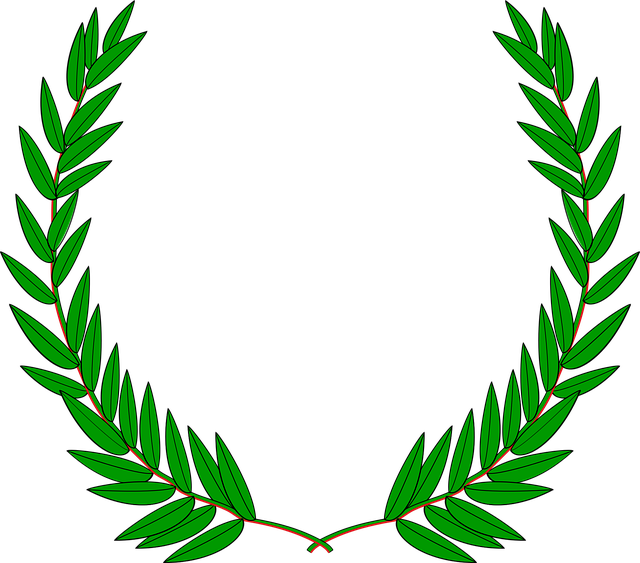 |
|---|
Dr. Maron's Science Olympiad coaching page.
Schools fight for prestige, and SO is a factor. It's analogous to college football. SO is domininated by dynasty schools. There is hunger for SO coaching. SO connects you to the world of high school science teachers.
New York's heavyweight schools are Fayetteville-Manlius, Melville, Maine-Endwell, Cicero North, Stuyvesant, Syosset, Bronx Science, Brooklyn Technical, Staten Island Technical, Great Neck South, New Albany, Columbia High, Mount Academy, and Kellenberg Memorial.
SO has many tournaments. The most prestigious are MIT, Mason Ohio, Los Angeles, San Francisco, U Penn, U Wisconsin, U Chicago, Northwestern, U Michigan, Las Vegas, Rickards Florida, Duke, Princeton, Yale, U Texas, and Carnegie Mellon. New York has no prestigious SO tournaments. There is opportunity for museums to host tournaments.
Dr. Maron has an SO coaching page at https://jaymaron.com/scioly.html. When Dr. Maron was in high school he was captain of the Madison West team that placed 2nd at nationals, and he has gold medals in the electronics and Fermi events.
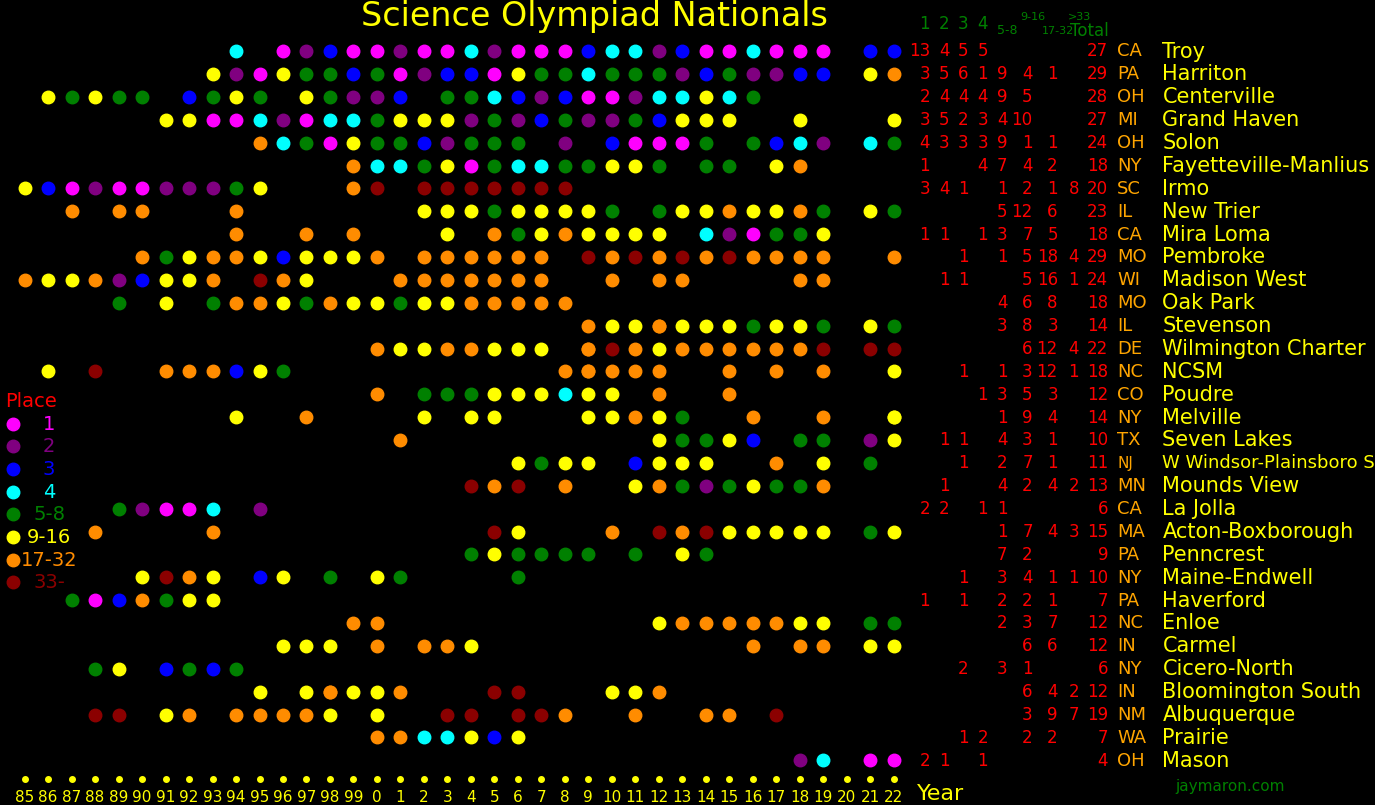 |
|---|
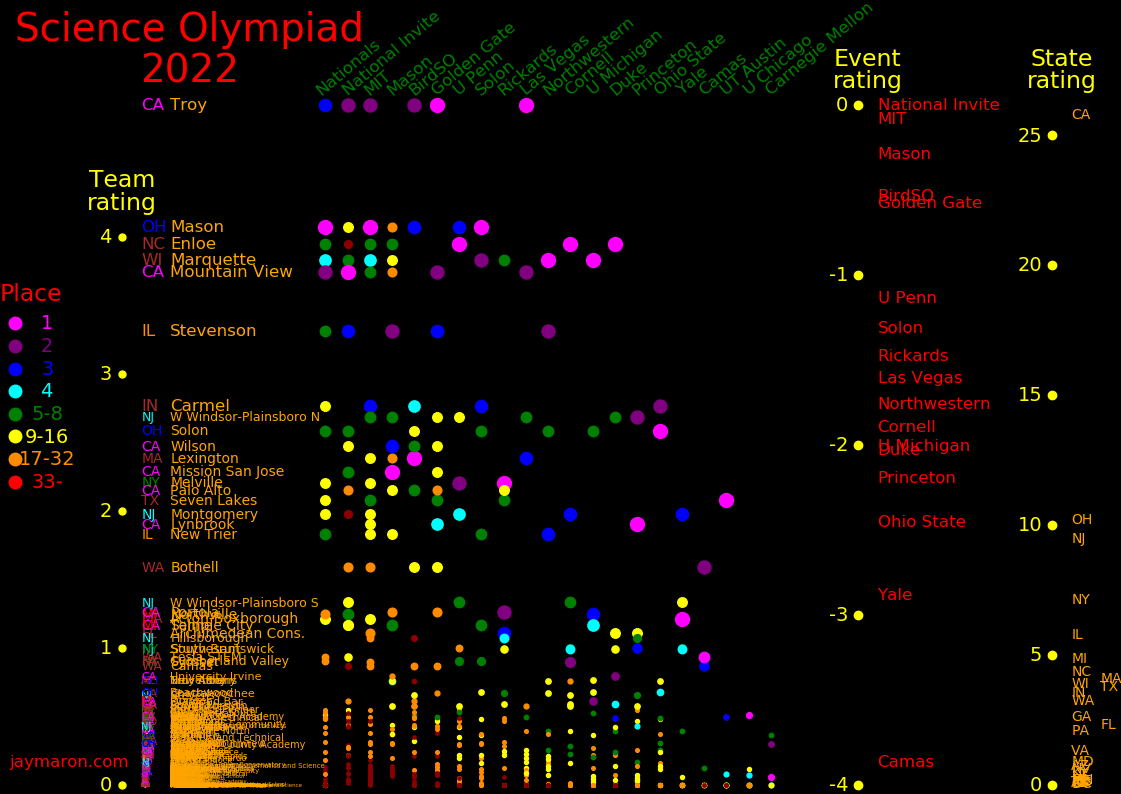 |
|---|
You must accept challenges from worthy competition and win. You must face the Devil's advocate.
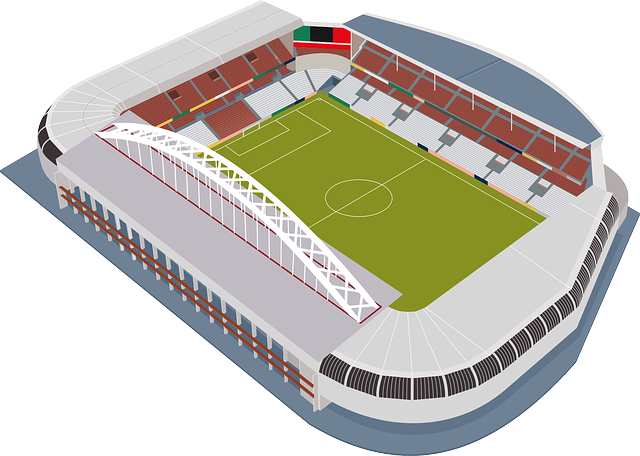 |
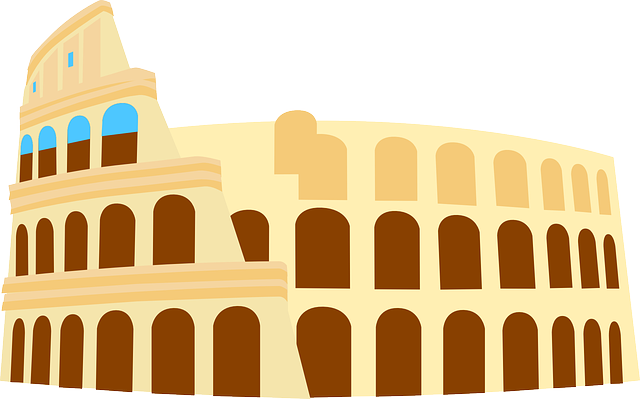 |
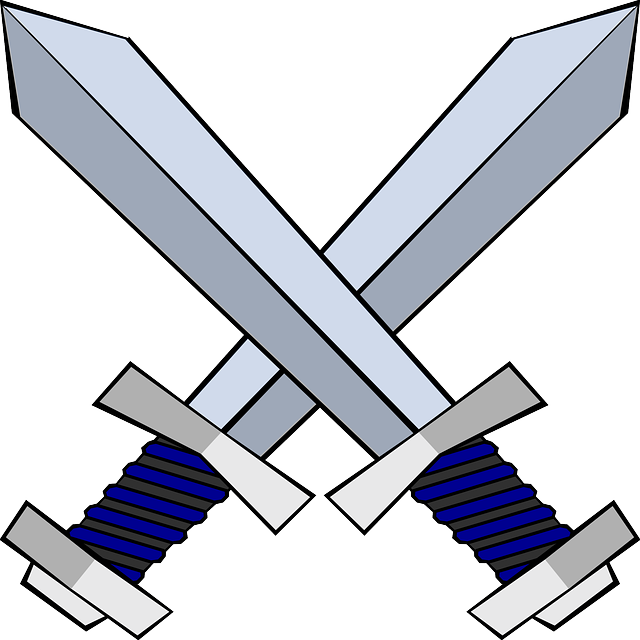 |
 |
|---|---|---|---|
You must win on neutral turf, in a fair game.
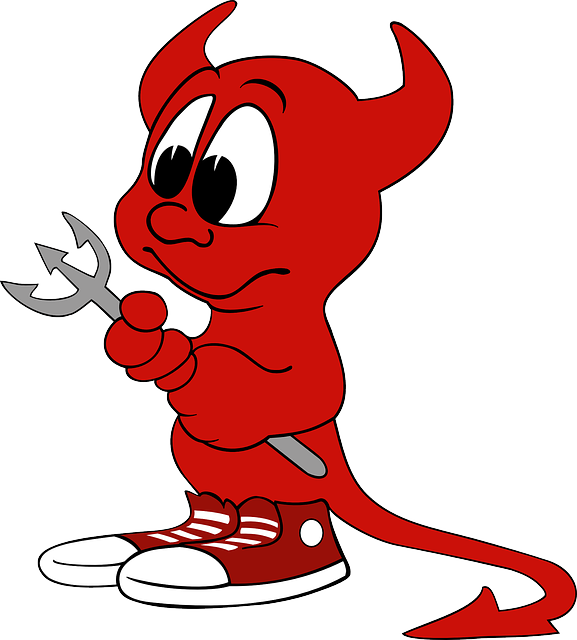 |
 |
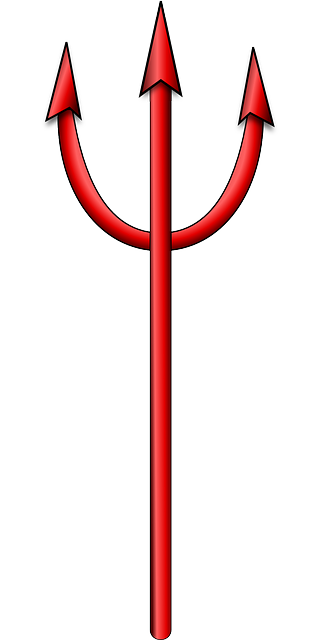 |
|---|---|---|
You should treat the opposing team respectfully. You should respect the devil's advocate. Don't hate the devil's advocate if he kicks your ass. He's doing his job.
Be sportsmanlike.
Don't straw-man the opposition.
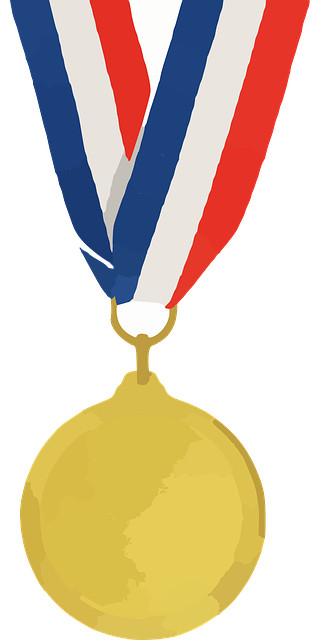 |
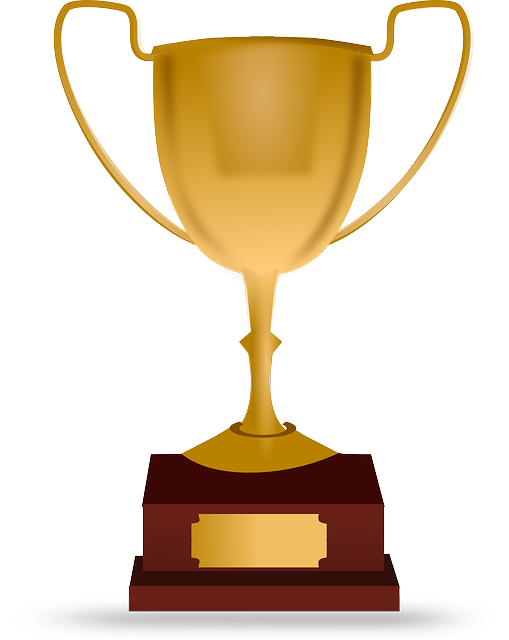 |
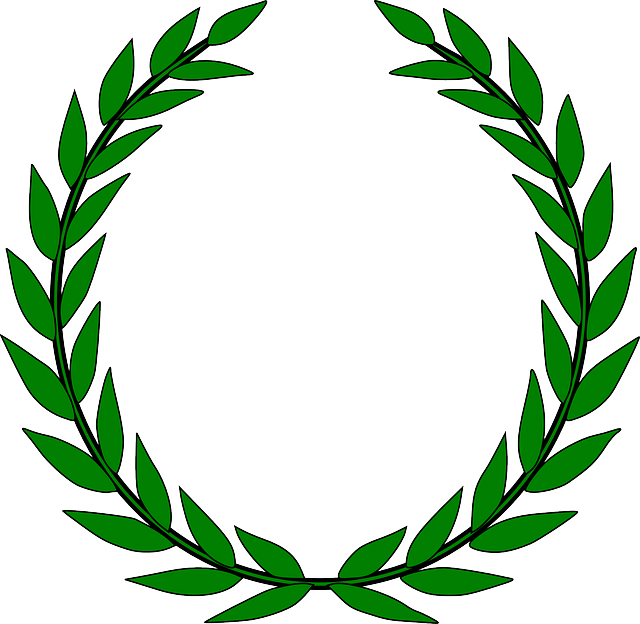 |
|---|---|---|
If you win, you must defend the title against challengers. New data roll in. Science advances and paradigms change.
If you refuse challenges, then some other jerk will declare himself the champion and refuse challenges from you.
 |
 |
|---|---|
You need multiple formats of debate, for example:
(*) Neutral debate, with no moderator. Each side gets to invite half the audience.
(*) Seminar. A speaker delivers an argument in detail. The opposition may ask questions, but the speaker is dictator and moderator. The speaker may silence anyone.
(*) Sermon. A speaker delivers an argument in detail, with no interruptions. The presentation is a polished work of art, like a movie.
This totals 7 debates. A neutral debate, a seminar for each side, and a sermon for each side.
A seminar has 2 stages. In stage 1, questions are allowed but they should be synergistic with the speaker's case. It's inappropriate to attack the speaker's case during stage 1. Stage 2 is for attacks on the speaker's case.
The sermons should happen first, then the seminars, and then the neutral debate. By the time of the debate, both teams should be aware of the other team's case, and of the other team's rebuttals to your case. If you don't do this, you're wasting the time of the audience.
 |
|---|
Moderators are rarely neutral. Do away with them and use chess clocks to limit the total time that each speaker may speak.
The Lincoln-Douglas debates didn't have a moderator and there was ample time for rebuttal. Each side got 1.5 hours to speak and there were 9 debates. If you fib, the other candidate had plenty of chances to zap you for it.
The newspapers printed what each candidate said. Partisan newspapers tended to polish the grammar of their candidate and leave the other candidate's words raw, but they would still print the other candidate's words. Today, censorship abounds.
 |
 |
 |
|---|---|---|
Embrace complexity and raise the level of the game.
You can't solve complex problems with simple tools.
If a problem is simple, you have to prove it's simple, and this usually requires complex analysis. You can't escape complexity.
"Complexity deniers" refuse to accept the existence of complexity. They assume that everything that matters is easily understood. They refuse to study and are therefore negligent.
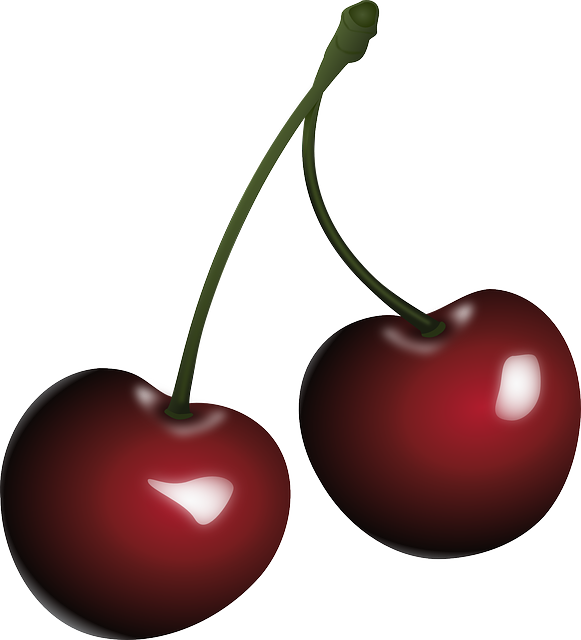 |
|---|
Cherry picking is considering only a subset of the data. Know all the data. Be a forest, not a tree.
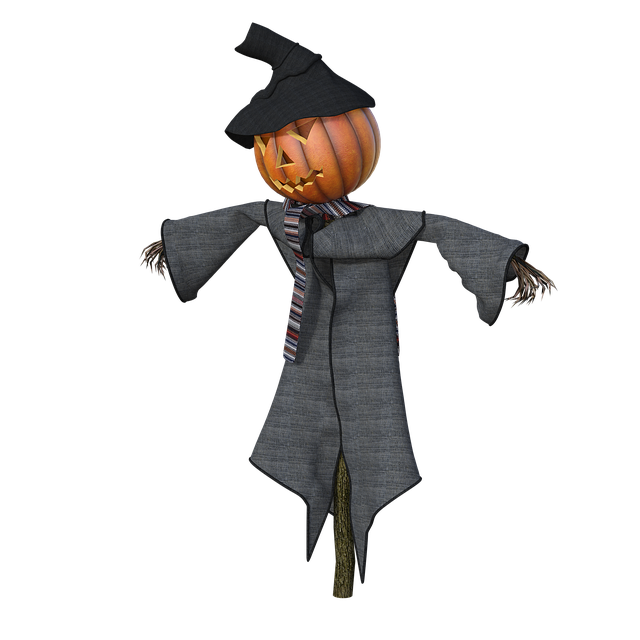 |
|---|
You want to win convincingly. If you have no choice but to assume, lean to the positive. Lean toward complexity, not simplicity. Use the "steel man" strategy.
To straw-man is to assume guilty until proven innocent.
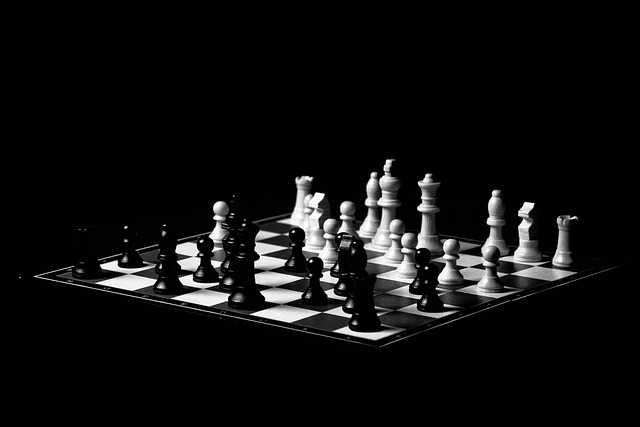 |
|---|
You must respectfully allow the opposition to rebut your statements.
Chances are that the foe has already published rebuttals to your arguments before the debate. If you don't study them, you are negligent. You're wasting the audience's time.
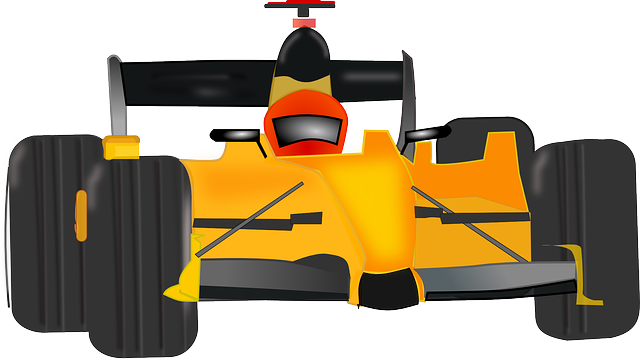 |
|---|
Mario Andretti: If things seem under control, you're just not going fast enough.
If things seem well understood, you're just not discovering fast enough. If things are going well, things feel chaotic and there is little consensus.
A field should have frequent paradigm revolutions, otherwise it's stagnant.
It's okay to challenge the consensus. Science requires it.
Science values discoveries that are ahead of their time. Be far ahead of the pack.
Don't fret about what's right or wrong today. What matters is knowing the right direction to go. You want your hard work to pay off.
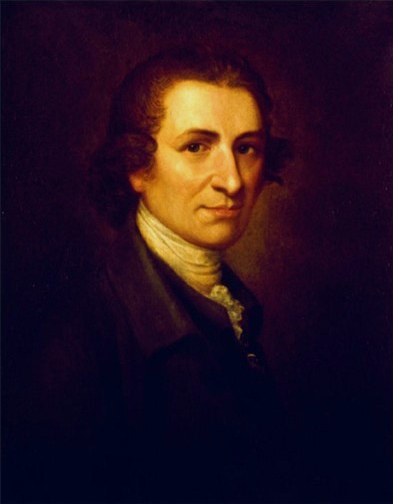 |
|---|
Thomas Payne: He who dares not offend cannot be honest.
It's more important to be honest than inoffensive.
Don't be a wuss. Don't be a crybully. Science doesn't care if you're offended.
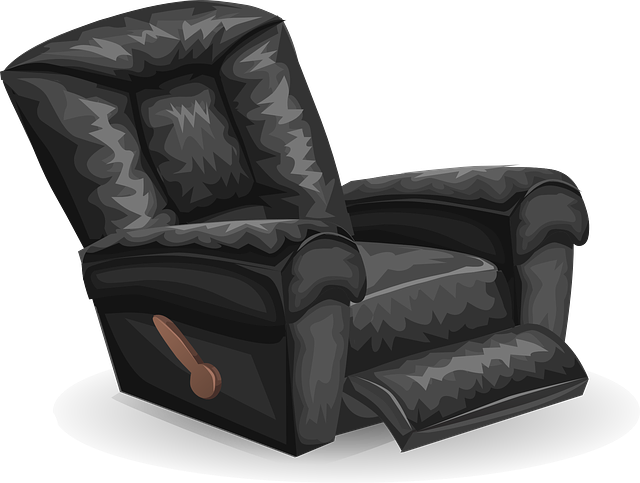 |
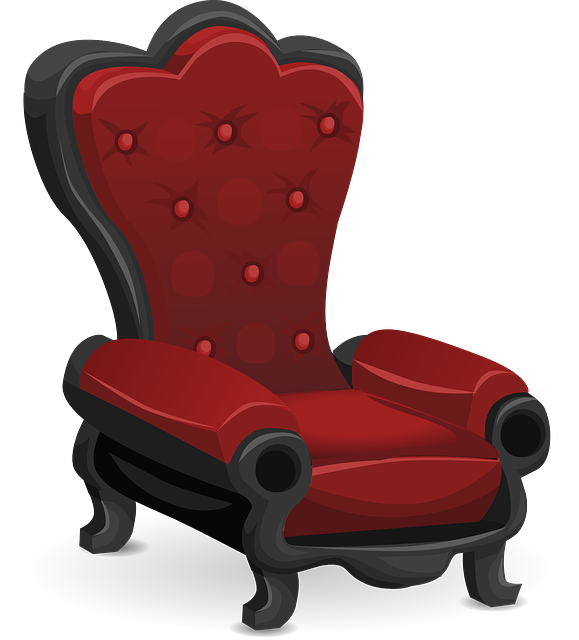 |
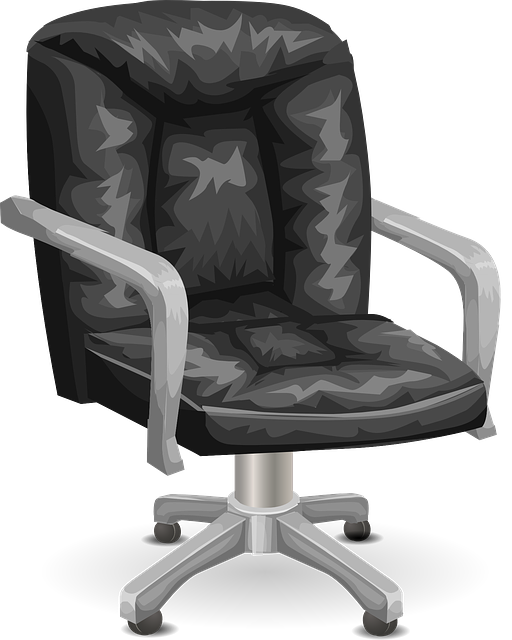 |
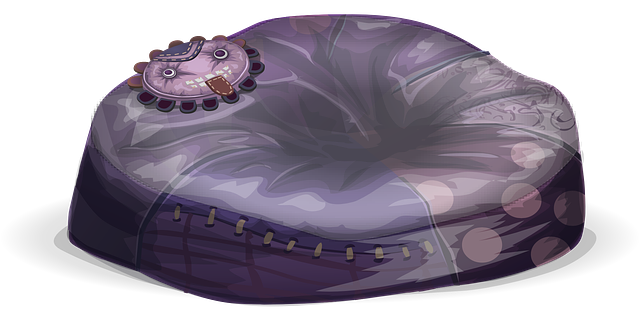 |
|---|---|---|---|
Conversation is a team sport. Be a team player and make the people around you more interesting.
Pass the conversational ball. Give other people a chance to lead the topic. Support other people's topics.
Be a human therapy animal.
 |
 |
 |
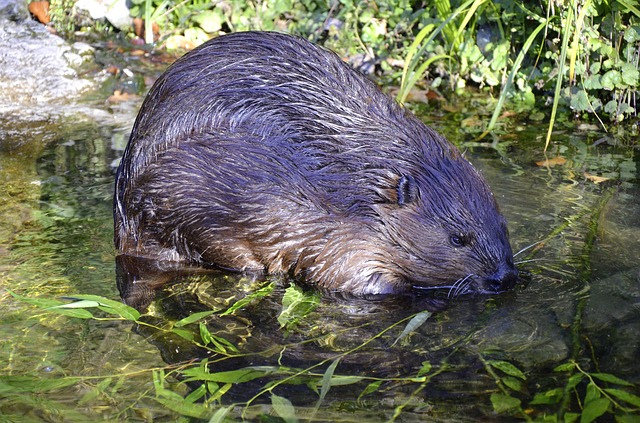 |
 |
|---|---|---|---|---|
Science needs both theory and experiment, and there needs to be synergy between them. Experiments alone are not enough. Facts alone are not enough. If someone is bullying you with facts, chances are that his theory is weak.
Theory tells you where to look for better facts. Theory doesn't just interpret experiments. It guides them as well.
Fact checkers usually cherry pick.
Fact checkers are widely mocked. If fact checkers are your best card, you should fold. Find better cards.
Wizards check facts themselves.
It's not about right or wrong. It's about specific or vague. If you are vague, you are not even wrong.
You are "more than right" if your theory proves to be worth study.
What counts is knowing the direction of the next discovery. You want your hard work to pay off. If you don't have good guidence from theory, your hard work will become obsolete.
You should study the opposition's case before the debate, otherwise you're wasting the audience's time and you're being negligent.
The goal is to be entertaining. Be jovial and be polite to the foes. Have good conversational chemstry and be synergistic to the conversation.
After the debate, we're going drinking, and that's why only fun people are invited to debate.
The following are disallowed:
Personal attacks
Straw man attacks
Assumptions about the personal character of the opposition
Crybullying. Crybullies will be mocked for acting like babies.
Gish gallop
 |
 |
 |
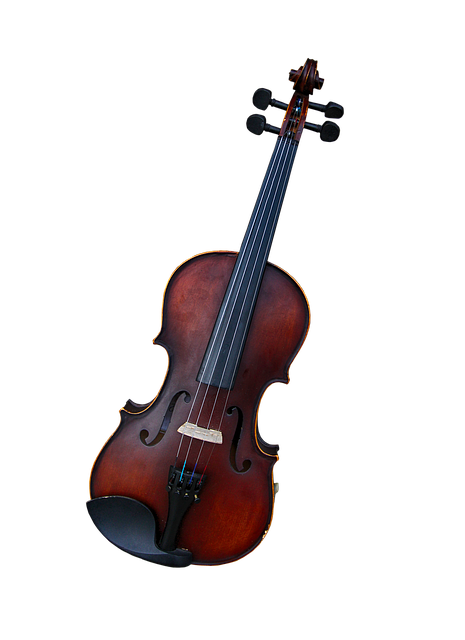 |
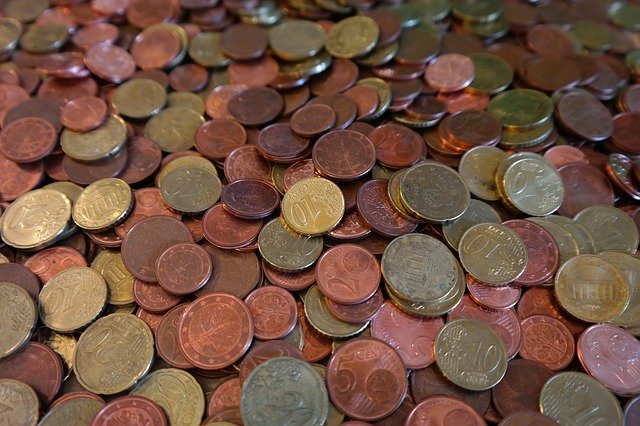 |
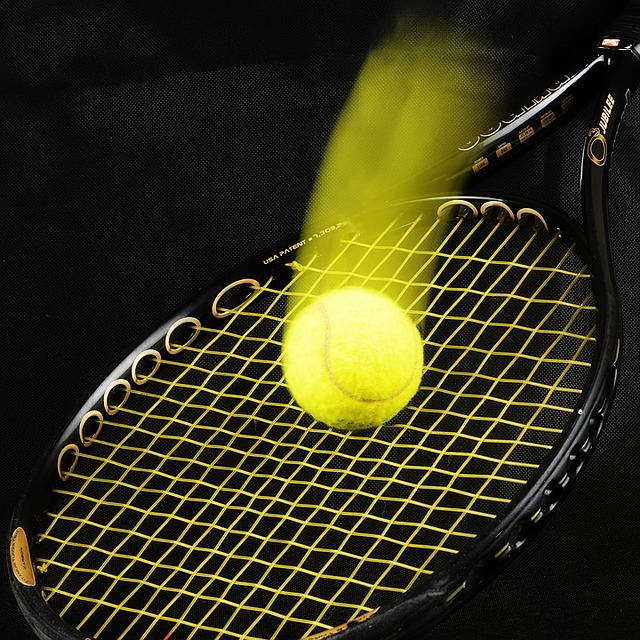 |
|---|---|---|---|---|---|
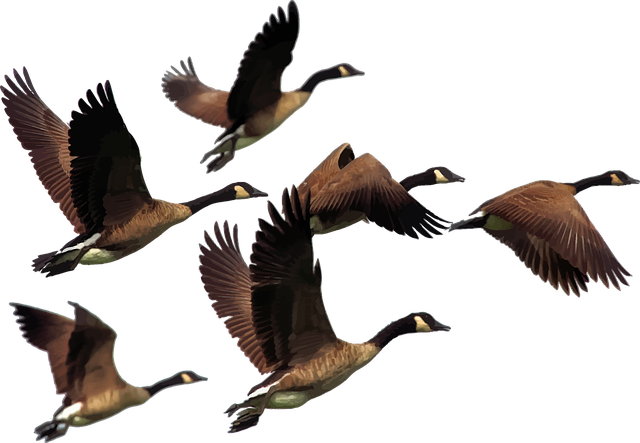 |
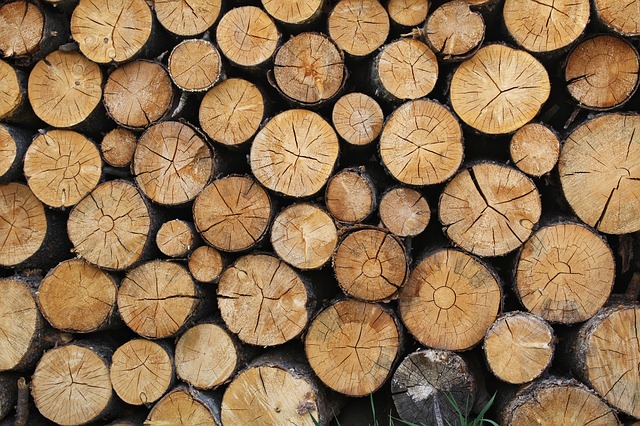 |
 |
 |
|---|---|---|---|
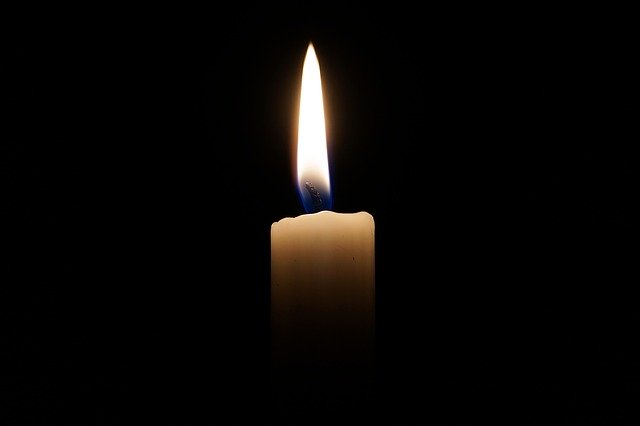 |
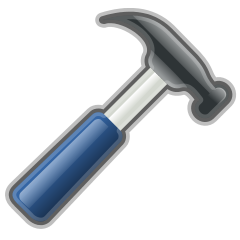 |
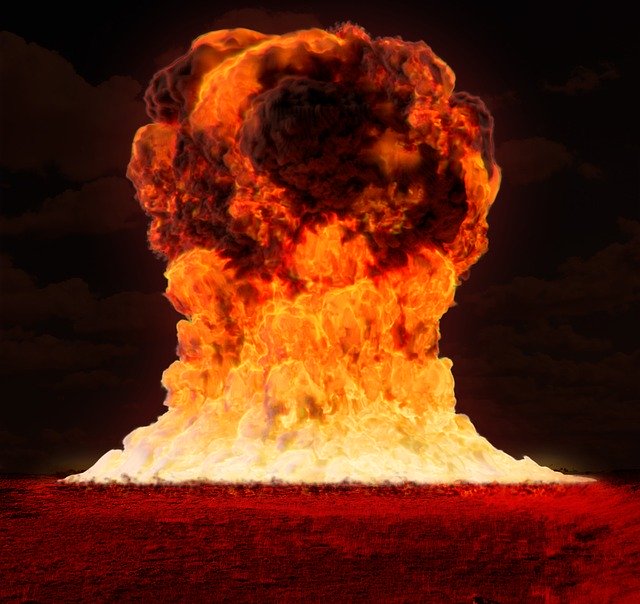 |
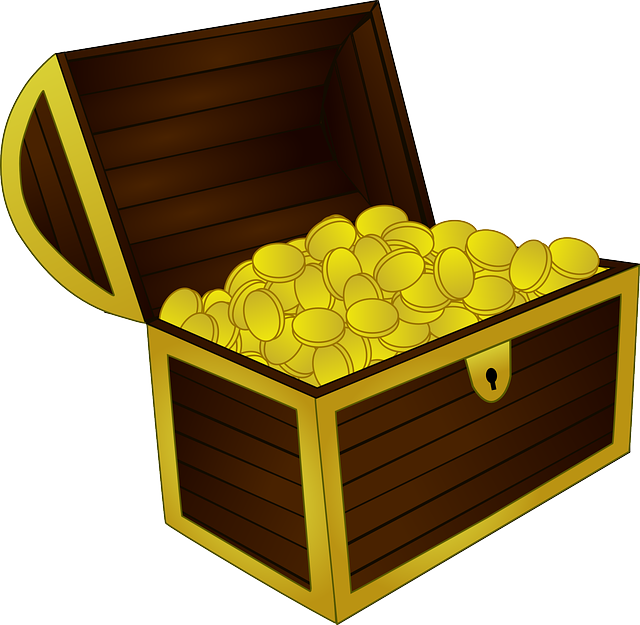 |
 |
|---|---|---|---|---|
 |
 |
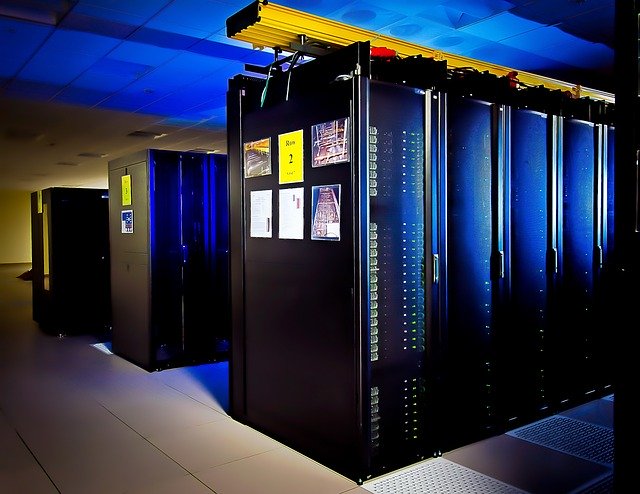 |
 |
|
|---|---|---|---|---|
 |
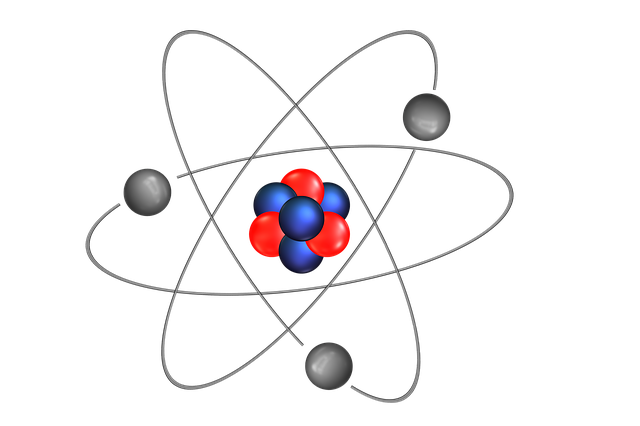 |
|---|---|
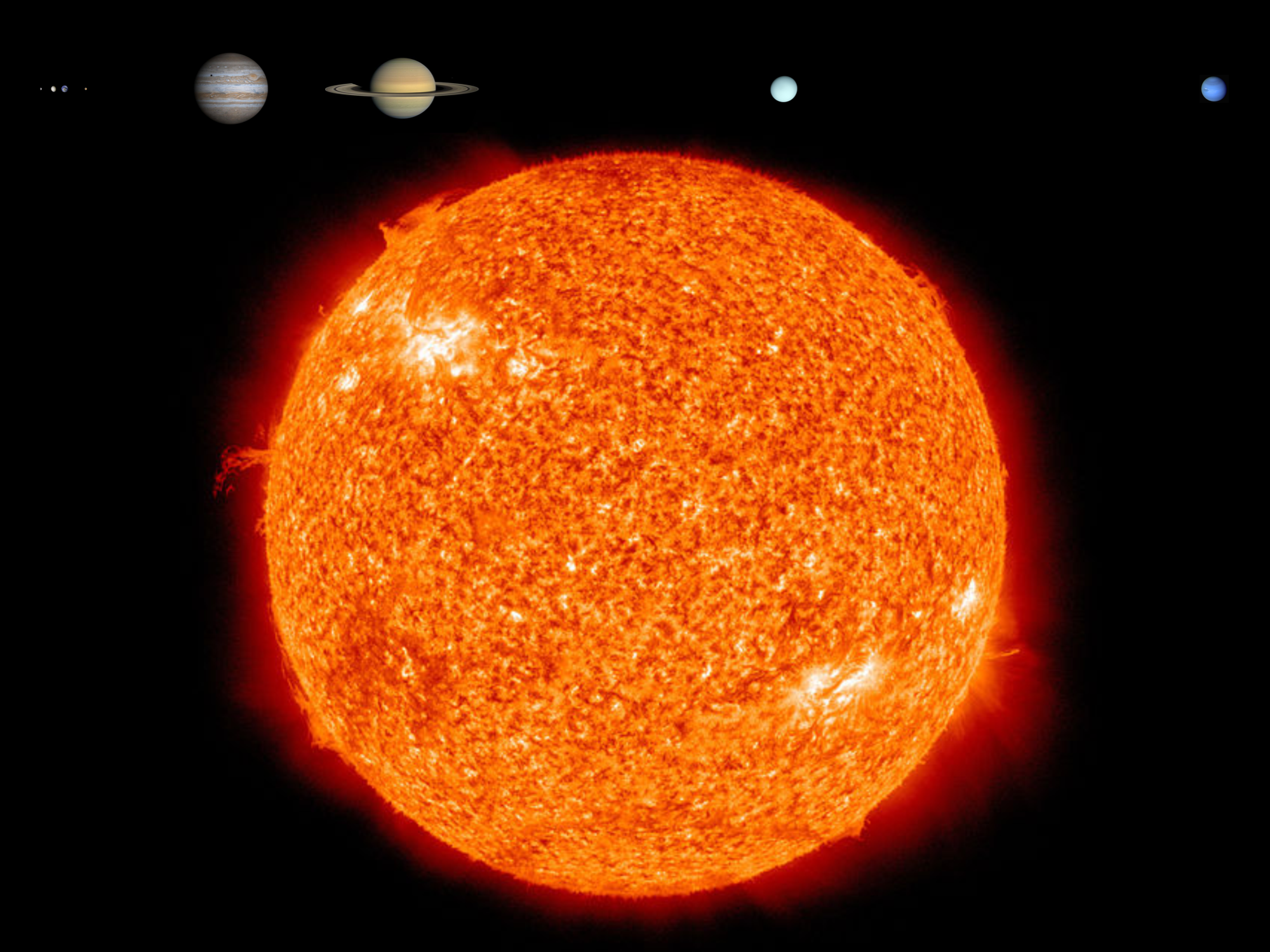 |
|---|
 |
|---|
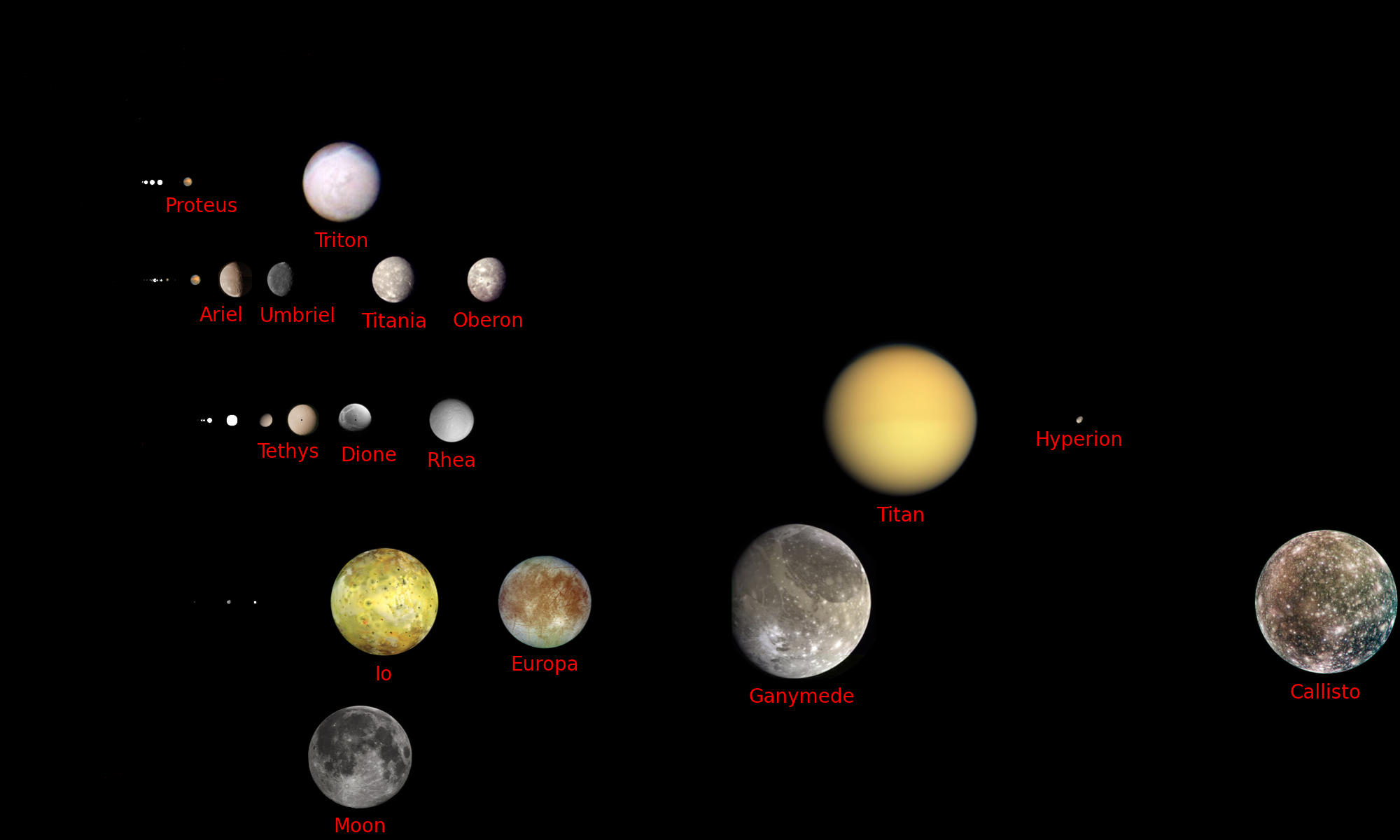 |
|---|
 |
|---|
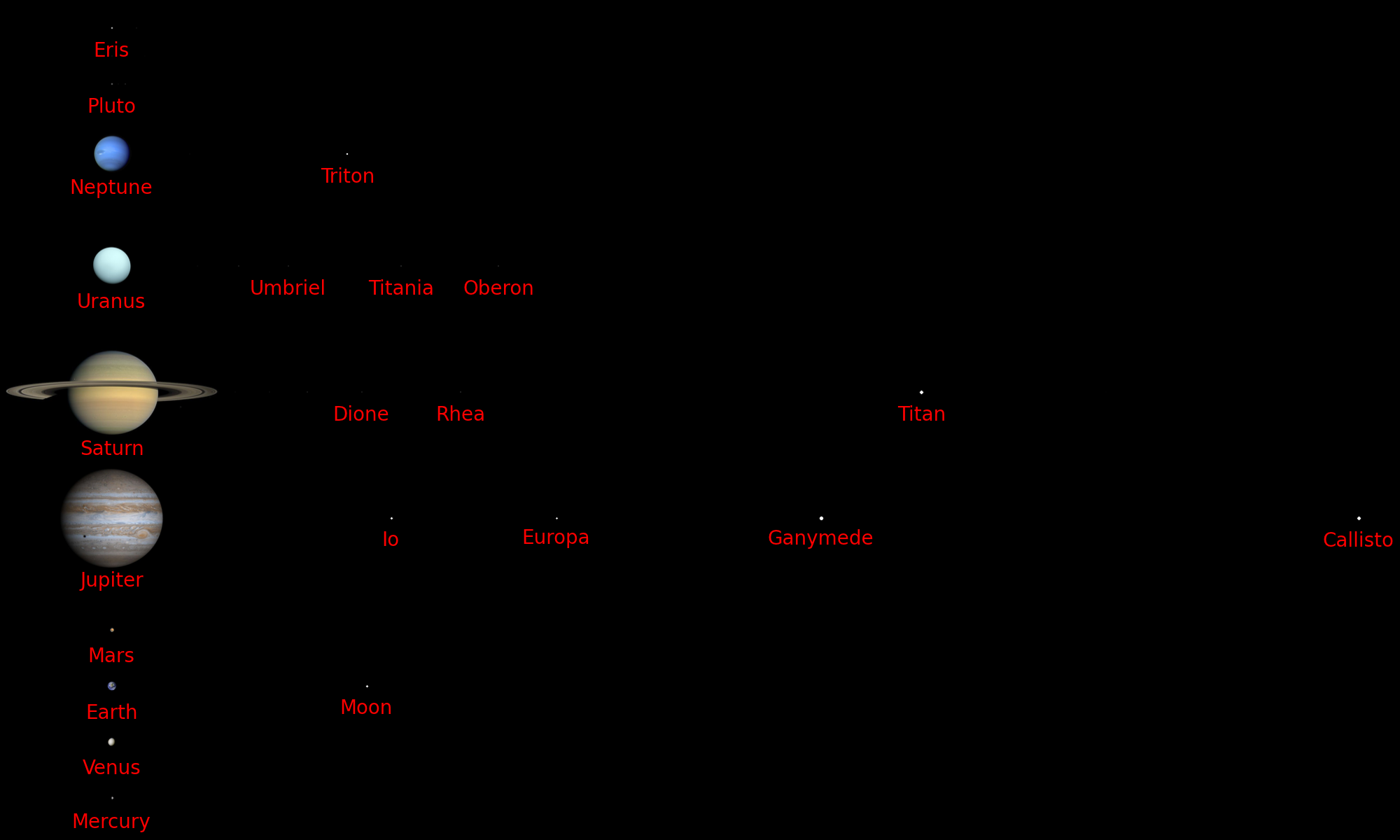 |
|---|
Continue to the rest of the "scales of the universe exhibit"
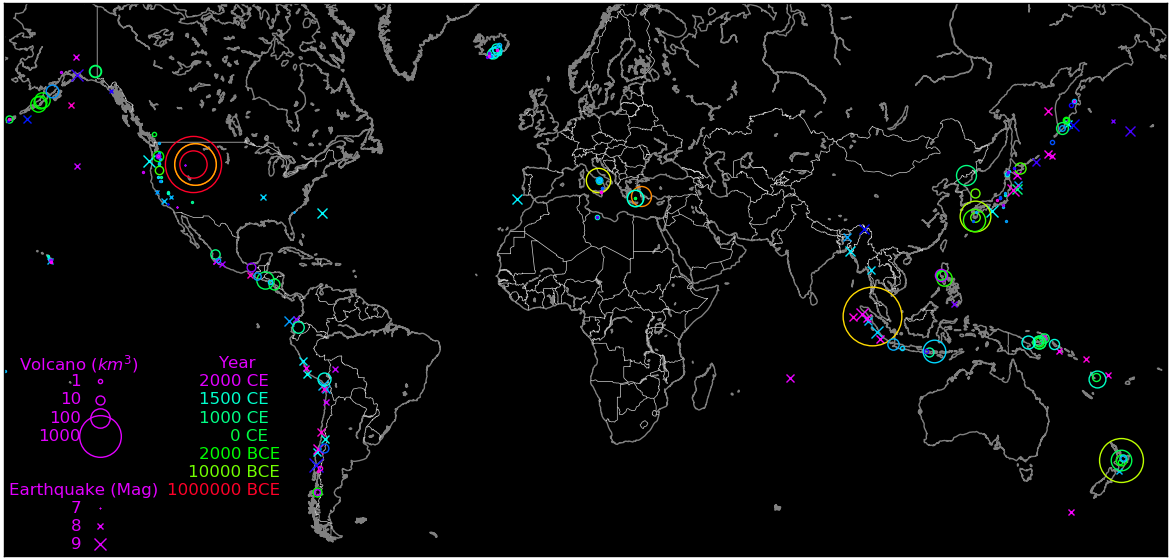 |
|---|
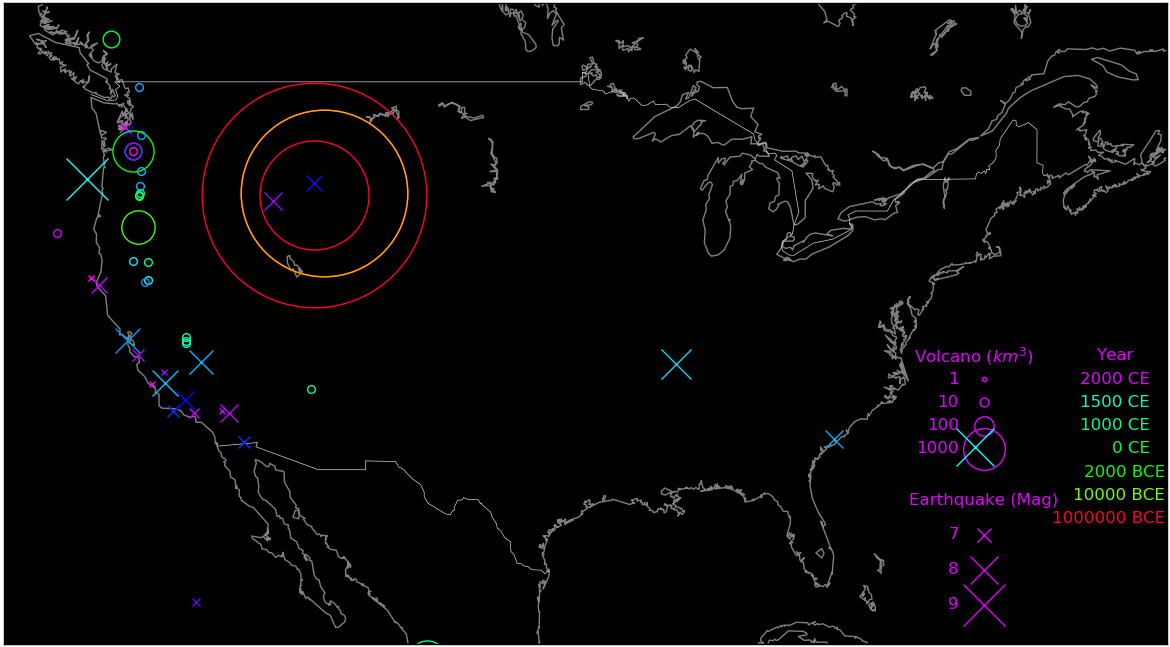 |
|---|
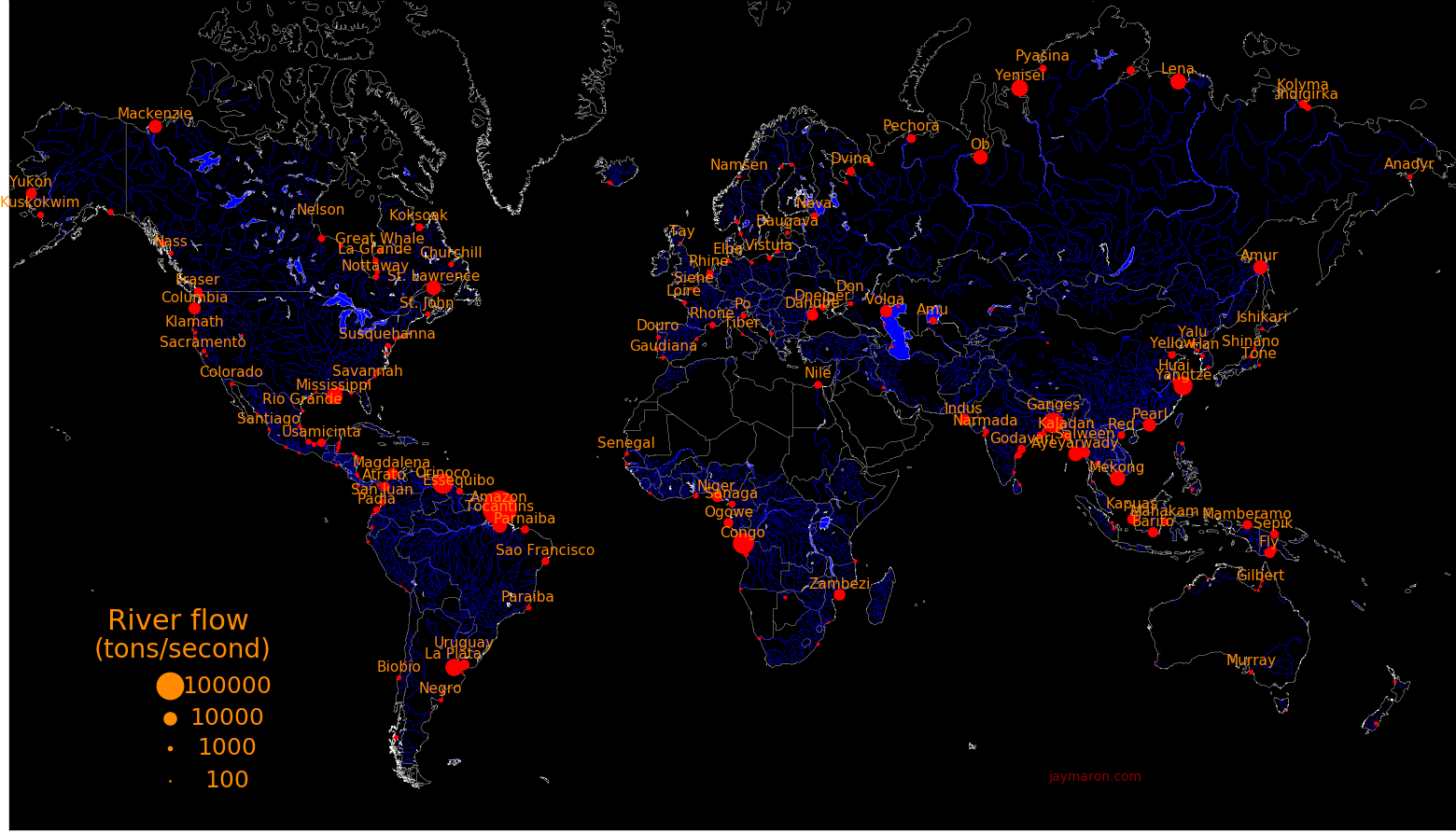 |
|---|
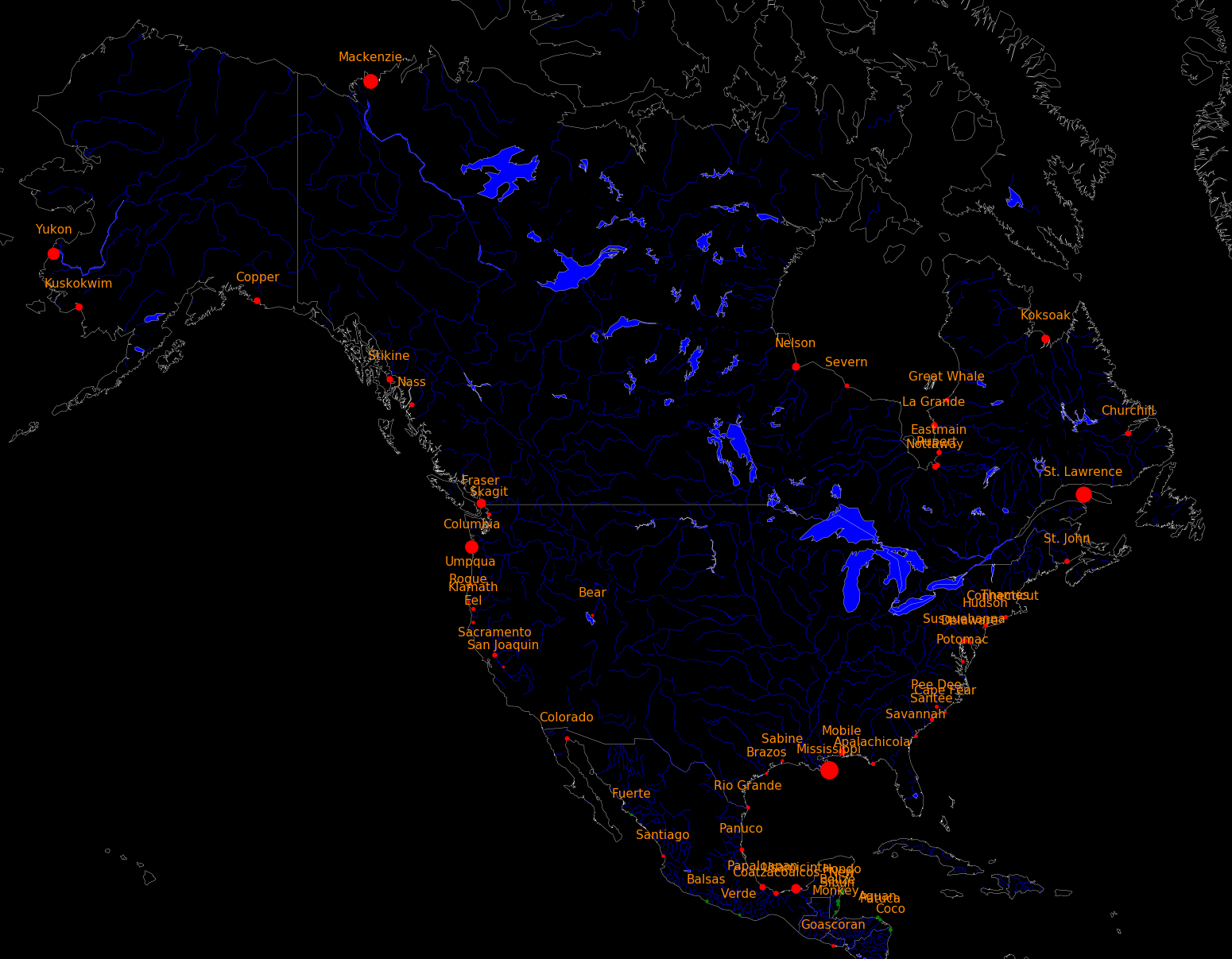 |
|---|
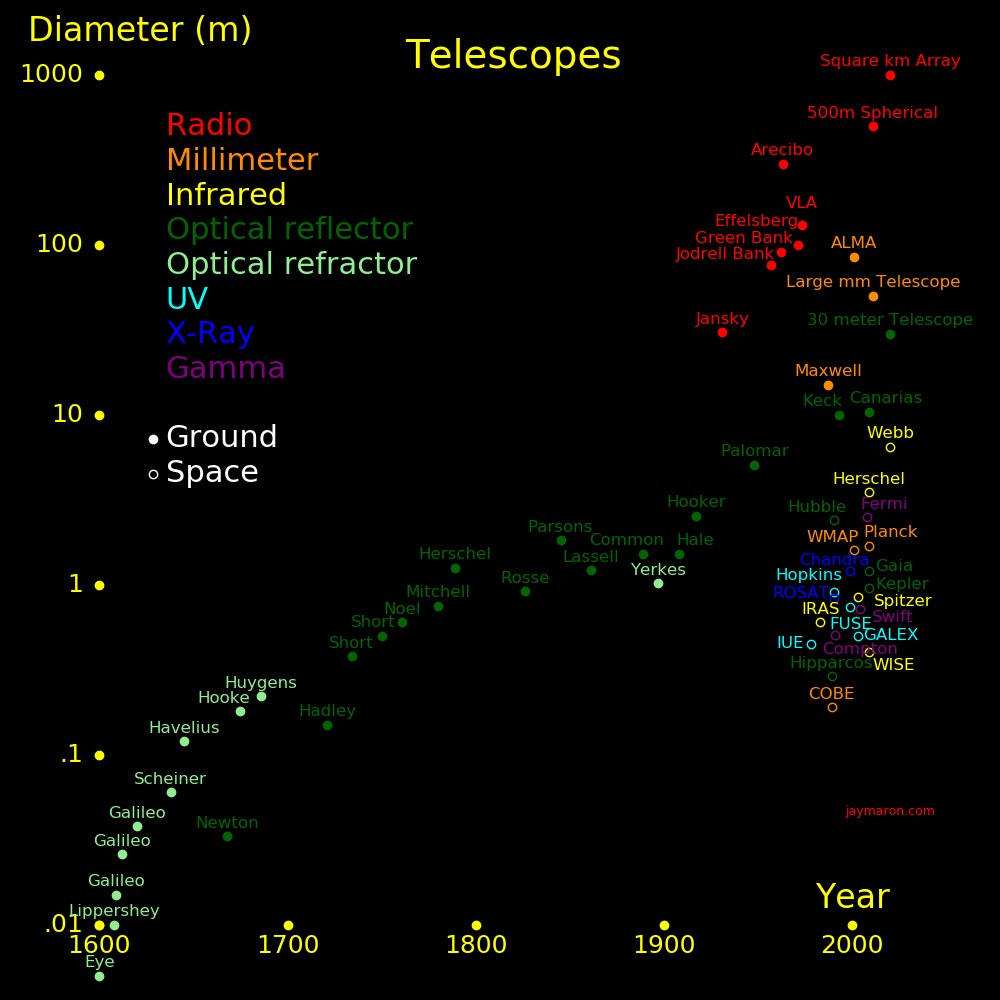 |
|---|
Green dots are open strings.
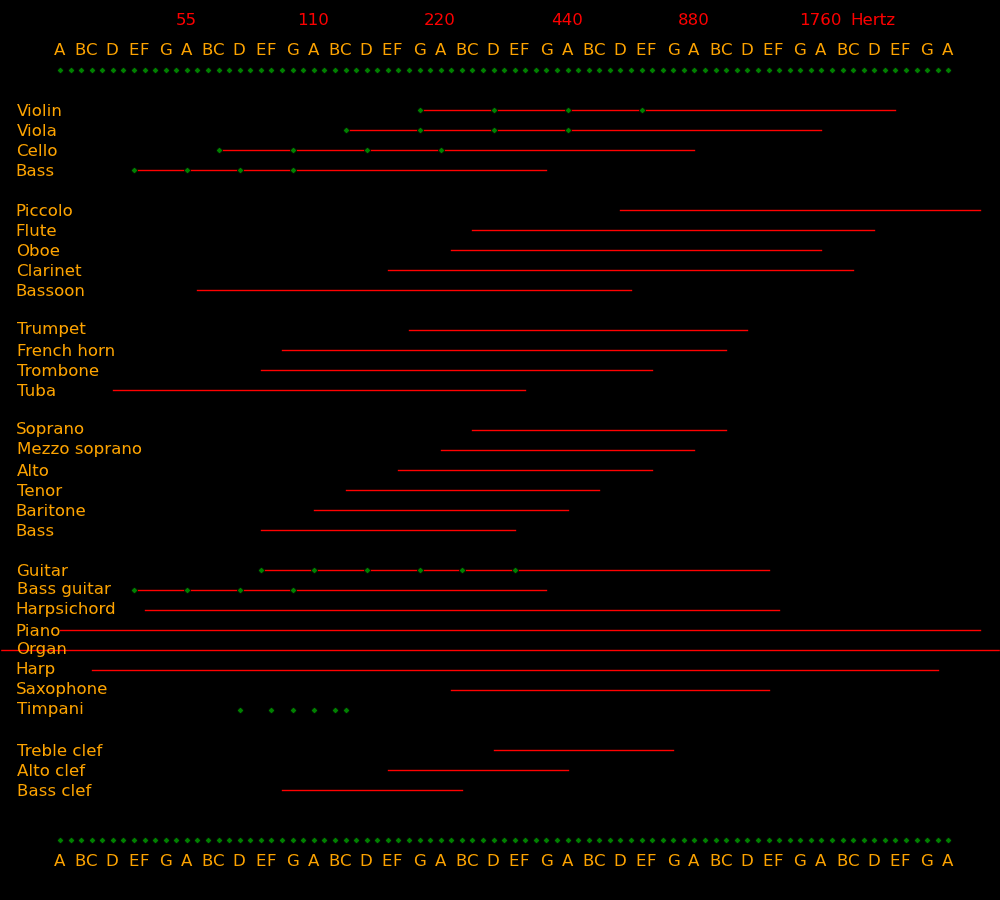 |
|---|
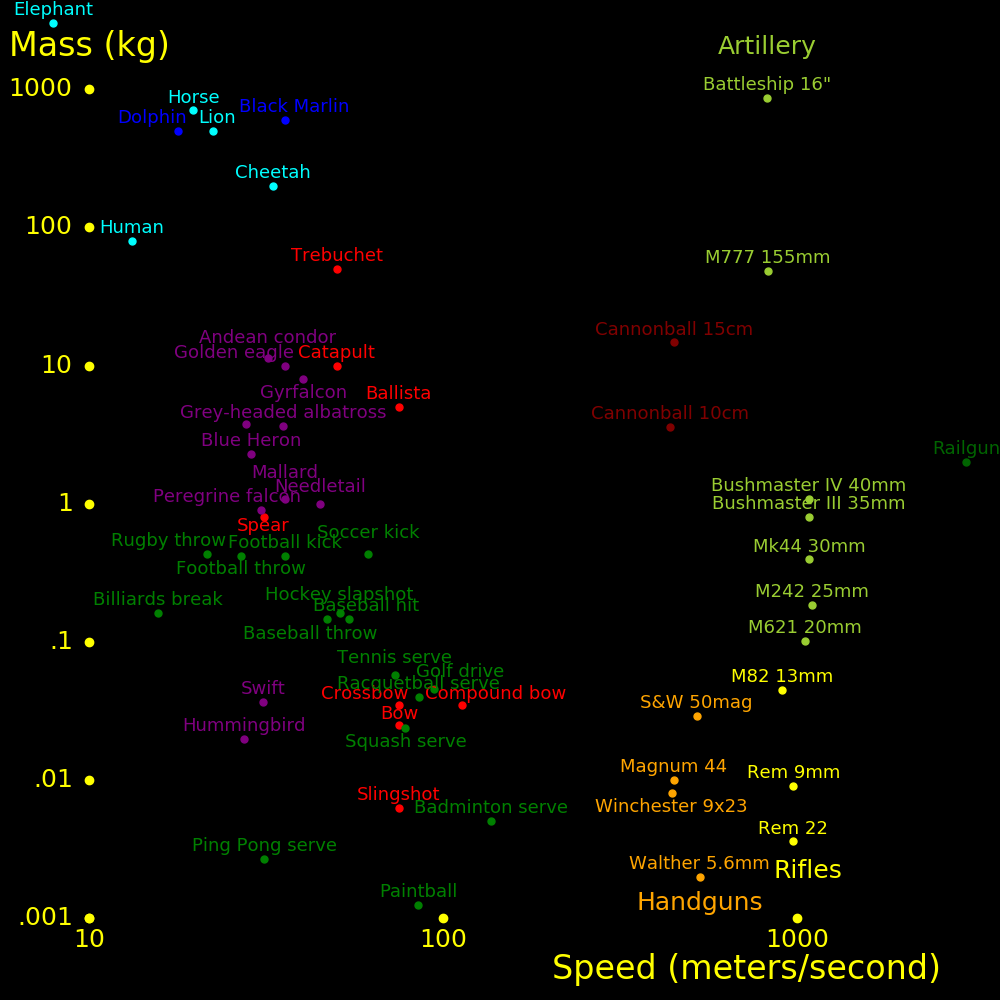 |
|---|
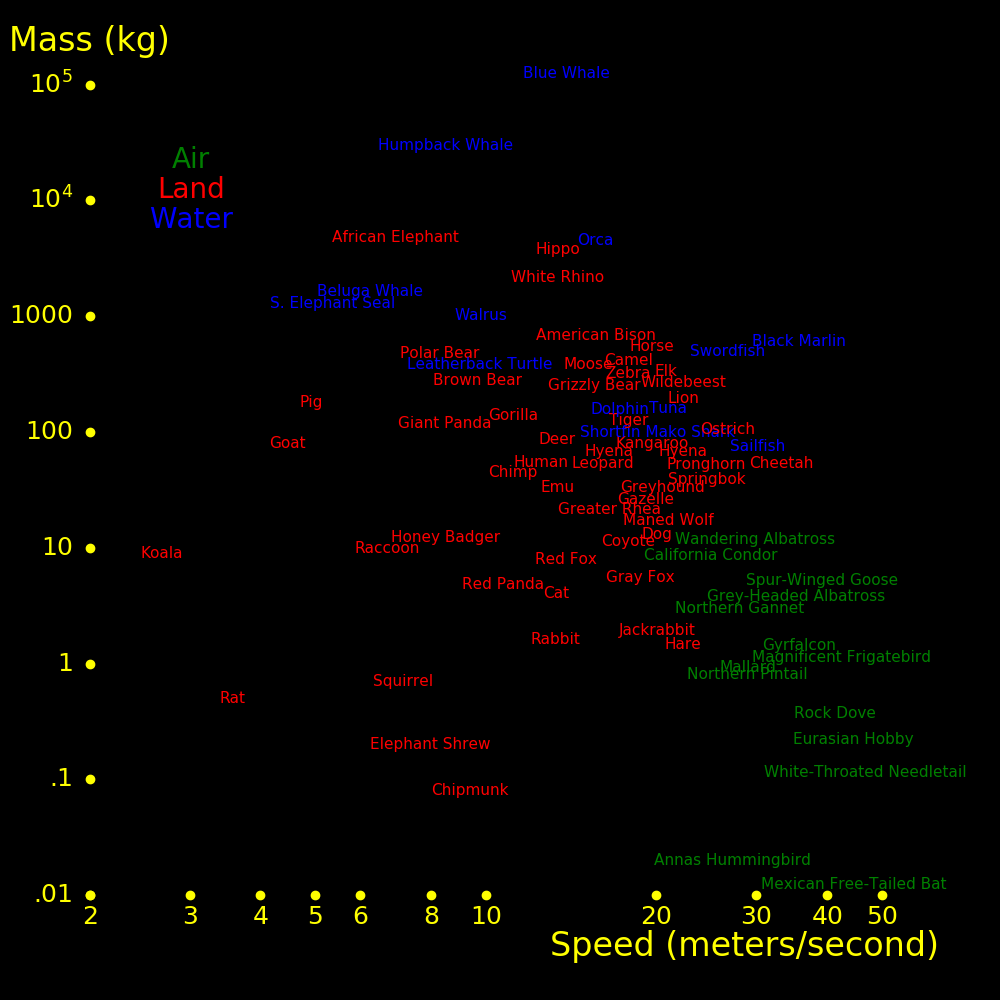 |
|---|
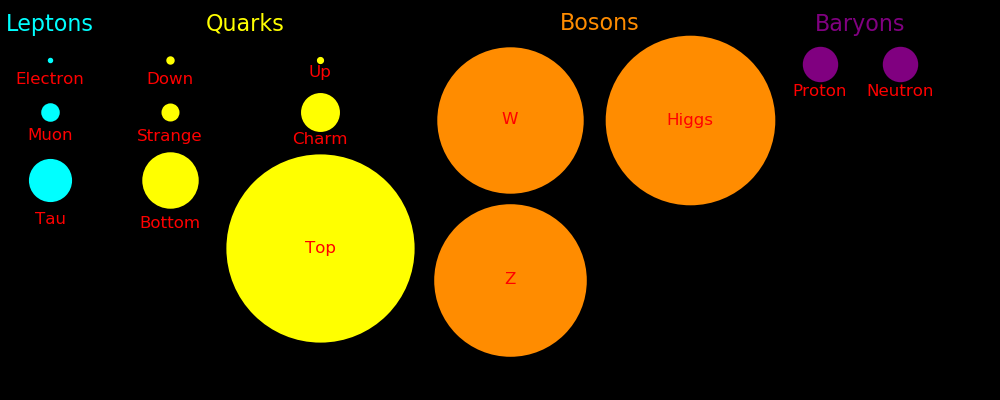 |
|---|
 |
|---|
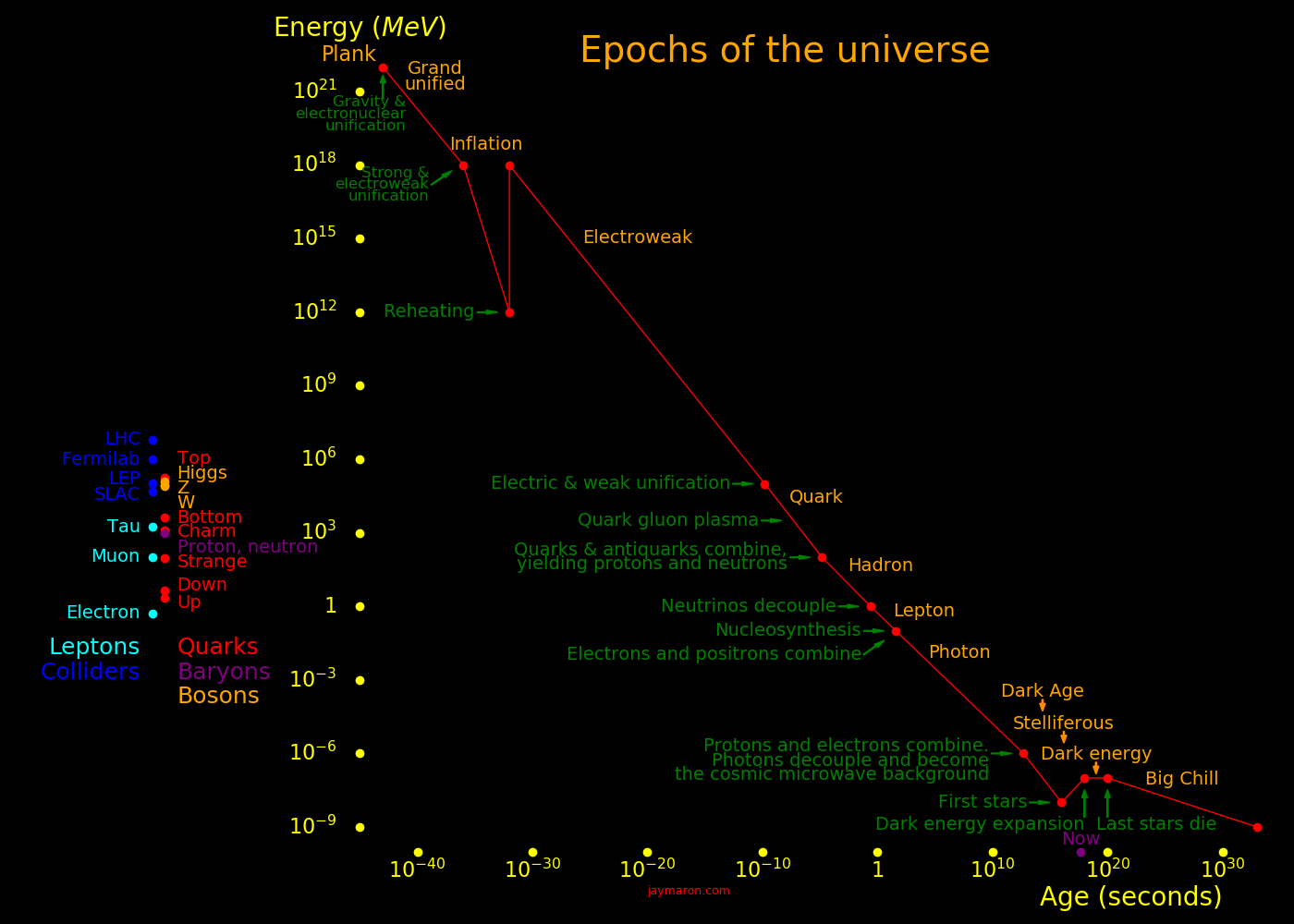 |
|---|
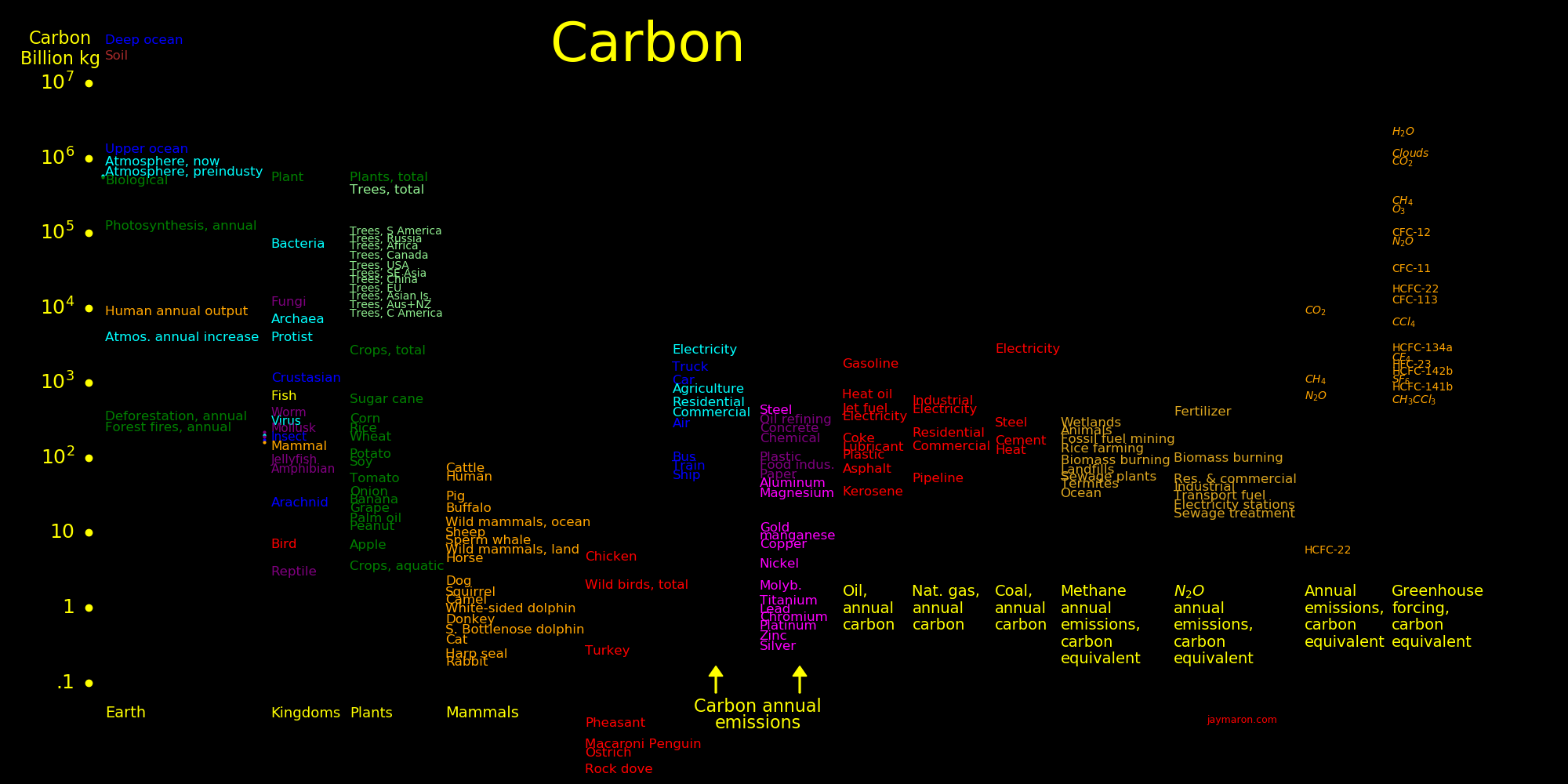 |
|---|
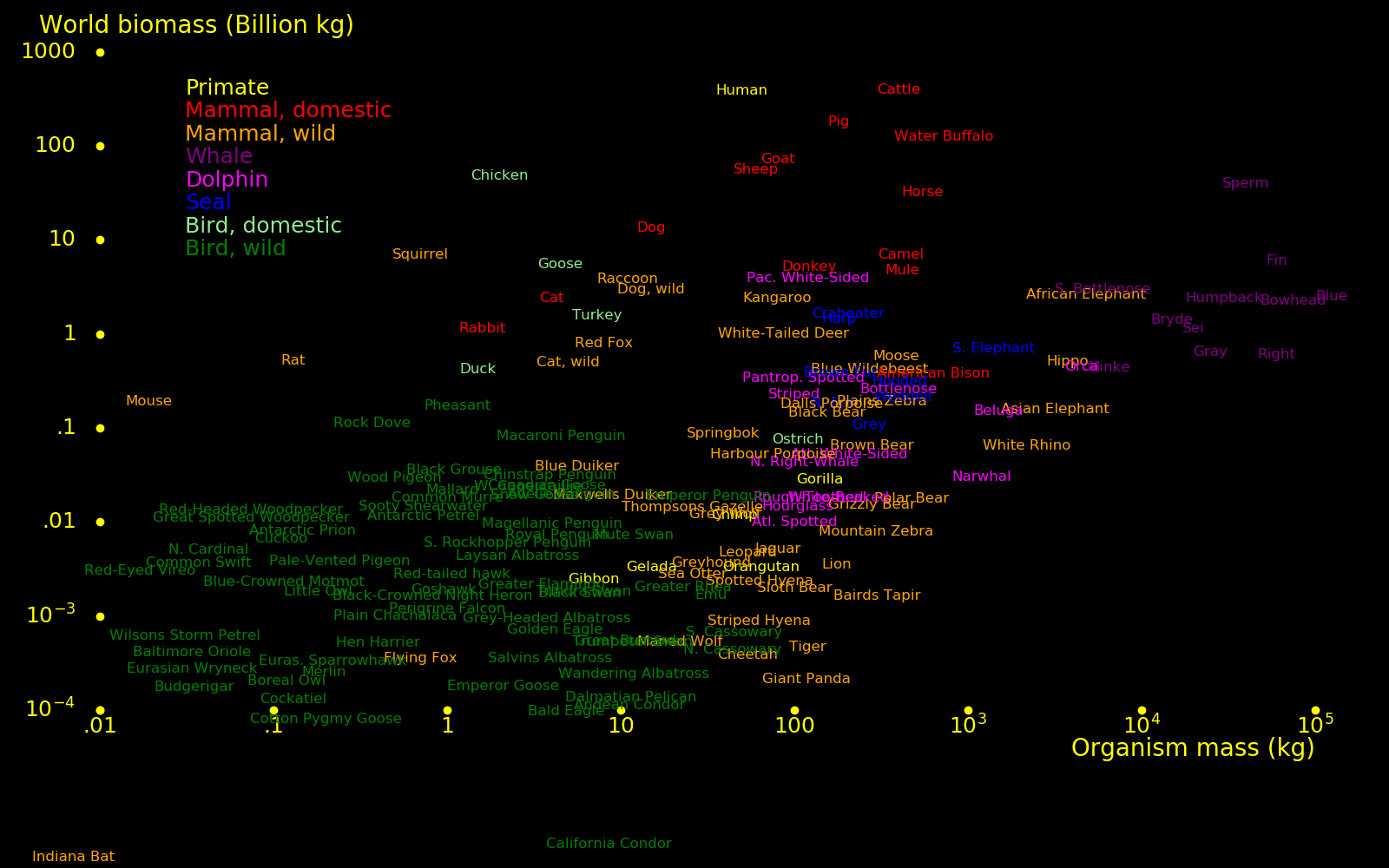 |
|---|
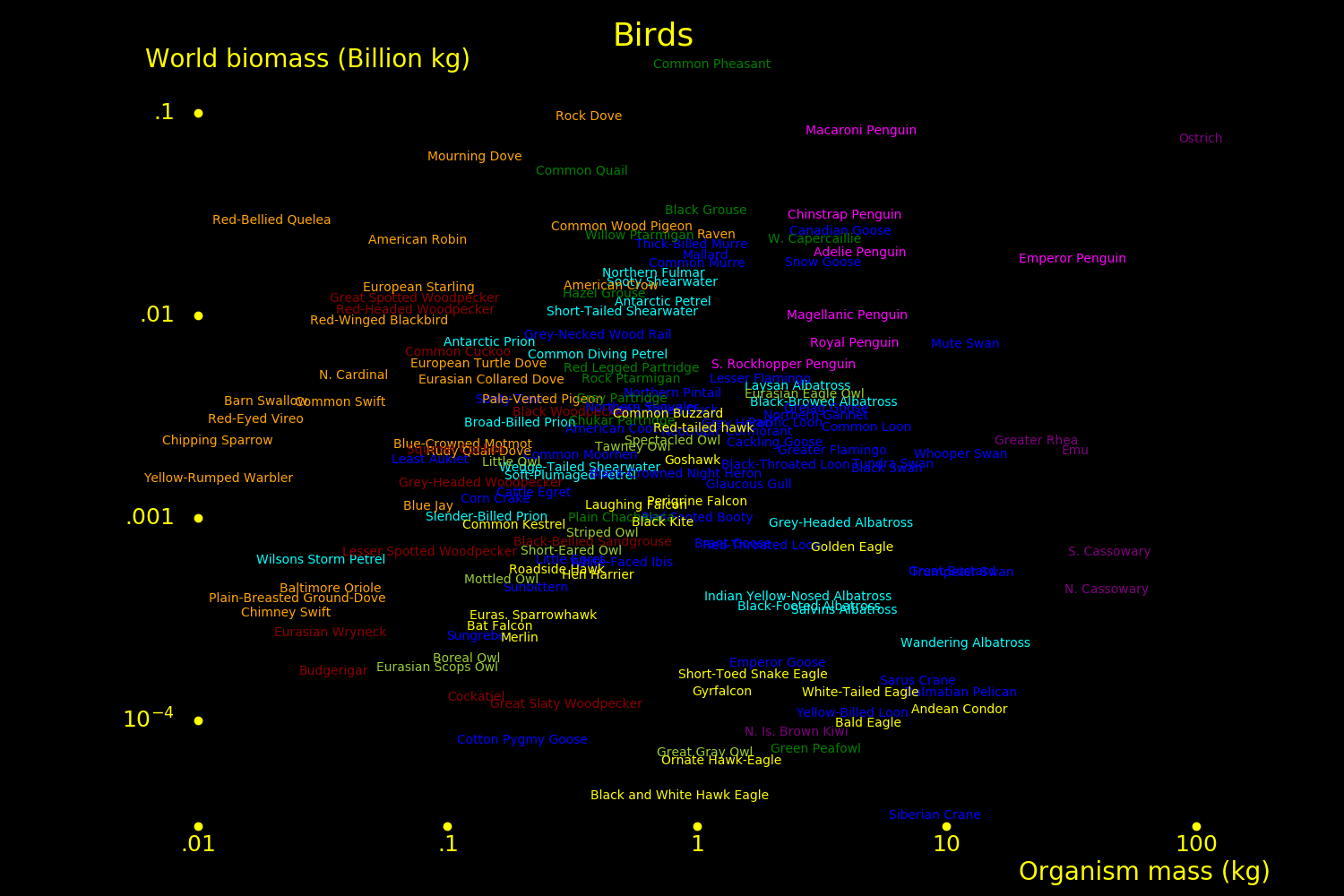 |
|---|
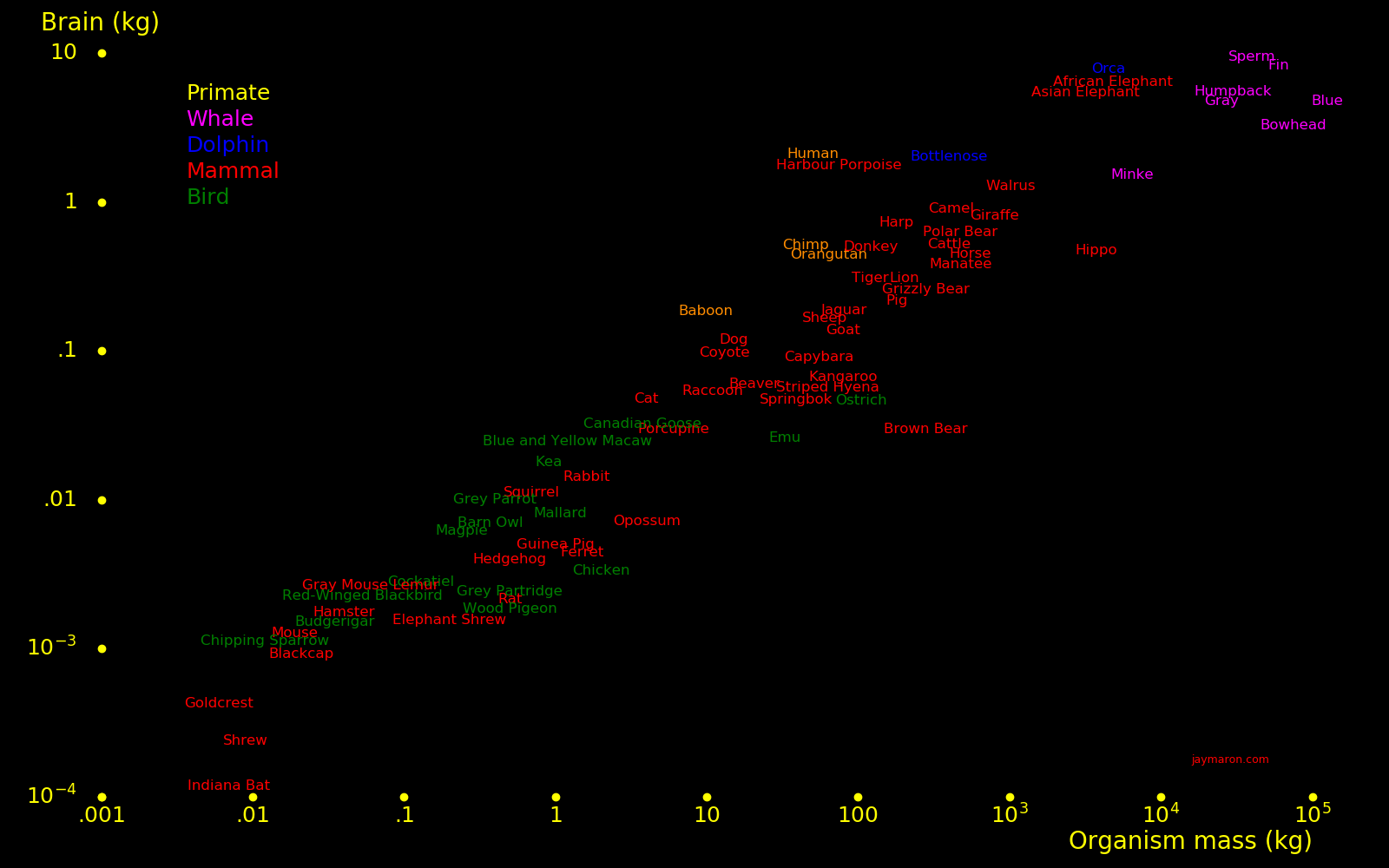 |
|---|
The left plot shows the protein and calorie content of food. Foods with high protein and low fat are in the lower right. Nuts are heavy in protein, especially peanuts.
The right plot shows how much calories and protein you get per dollar. The cheapest meats are pork, chicken, and turkey.
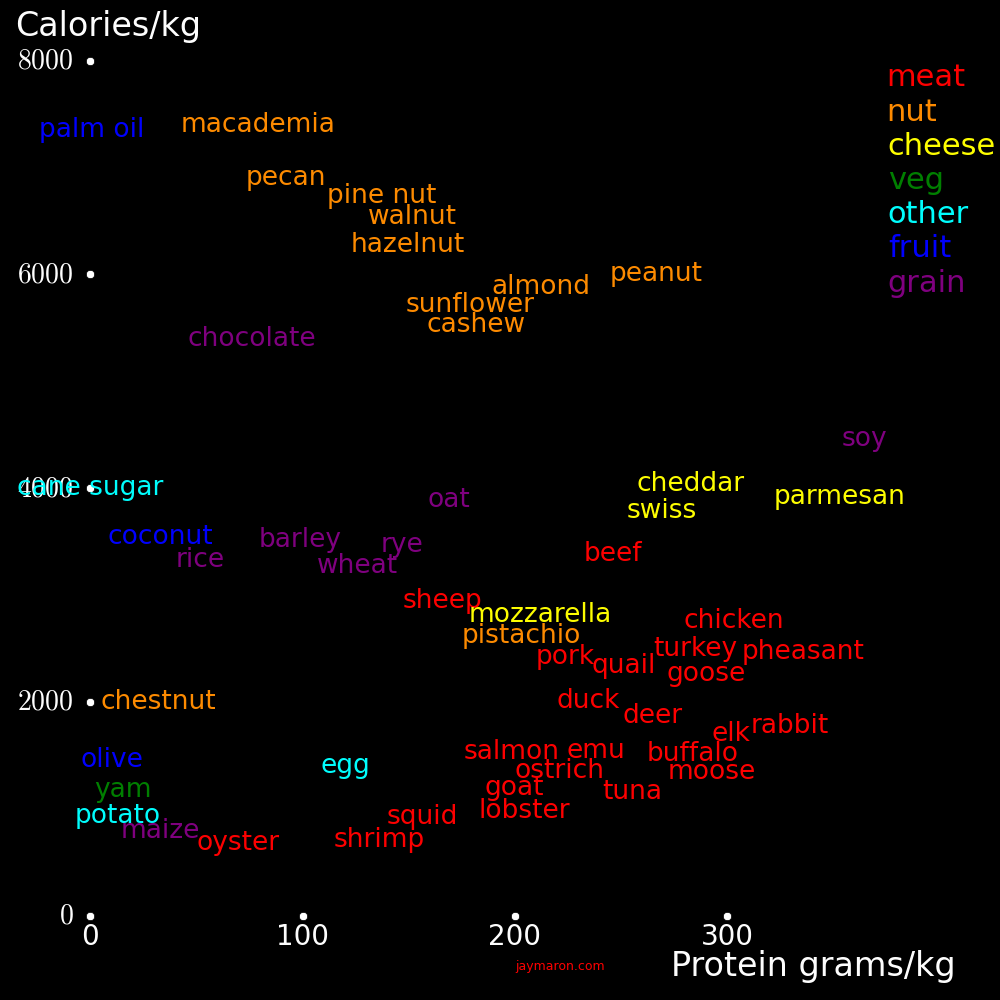 |
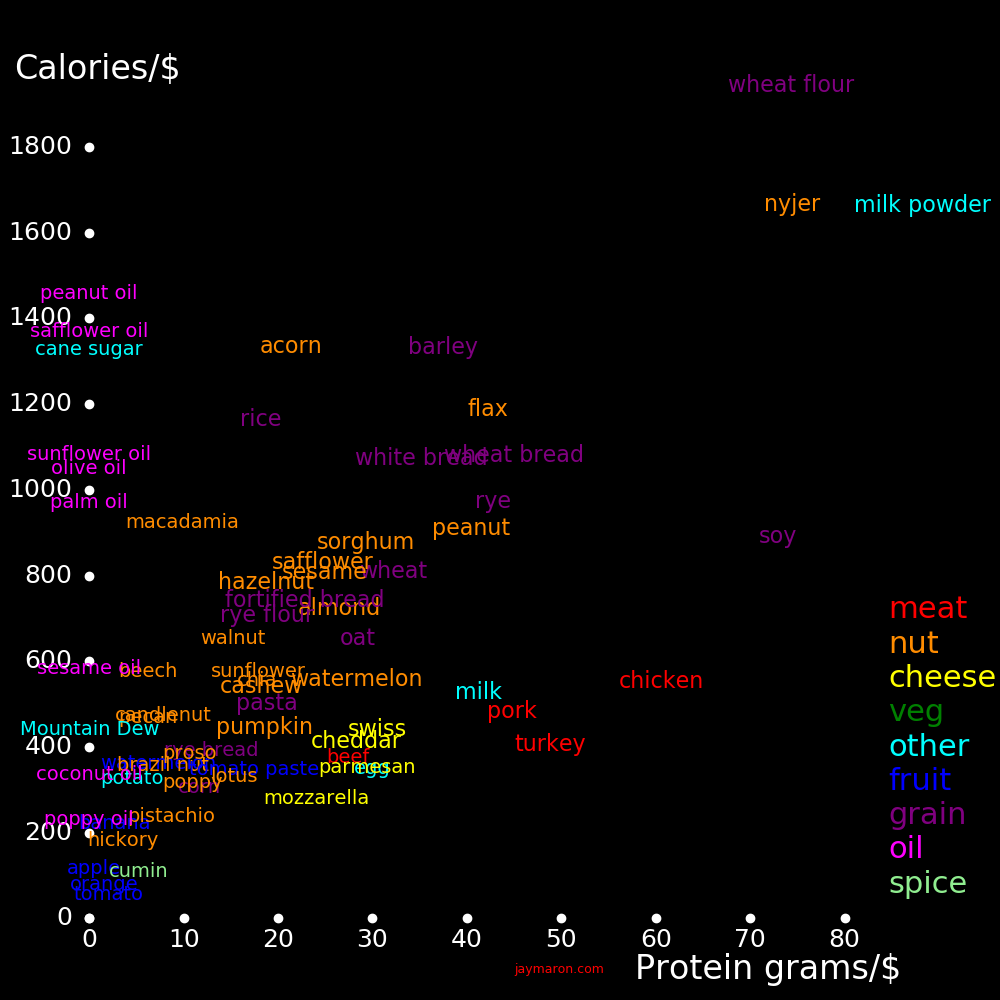 |
|---|---|
The plot shows the potassium, phosphorus, and calcium content of food. Calcium is abundant in cheese and milk and rare in other foods. Sesame is rich in calcium.
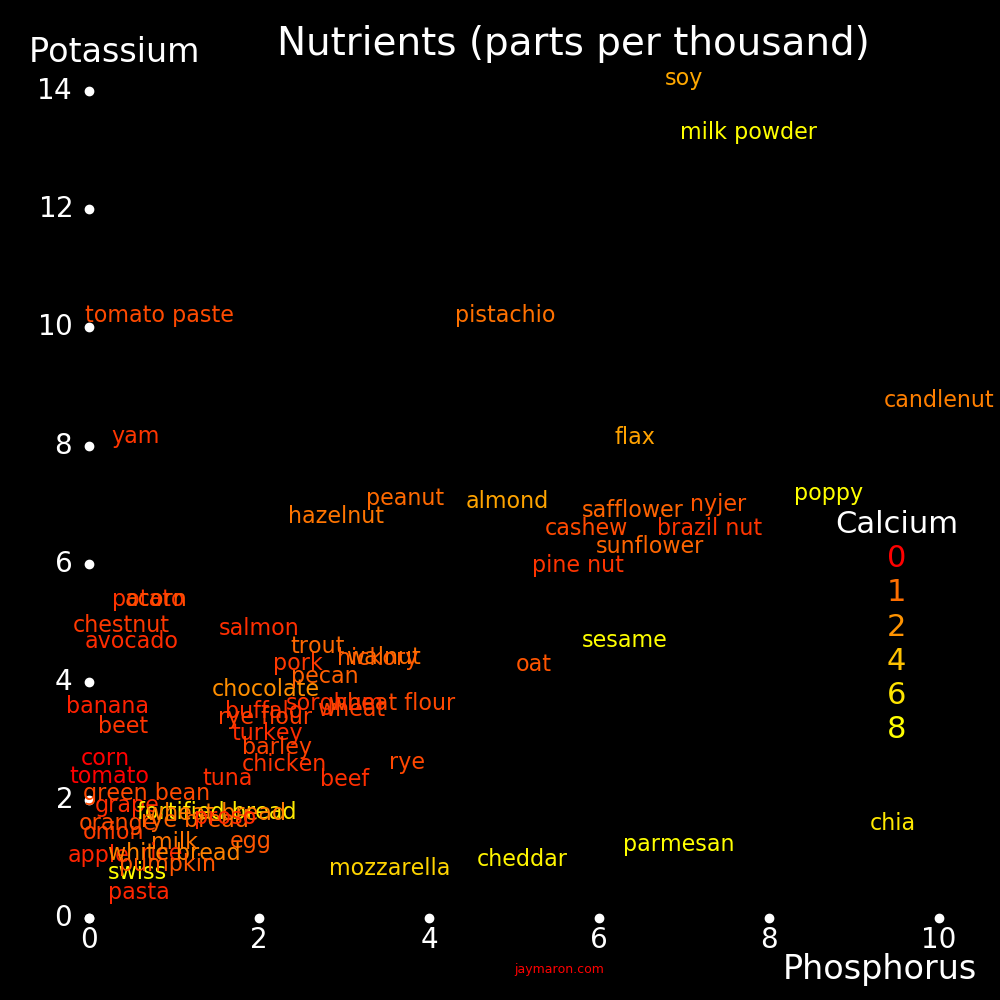 |
|---|
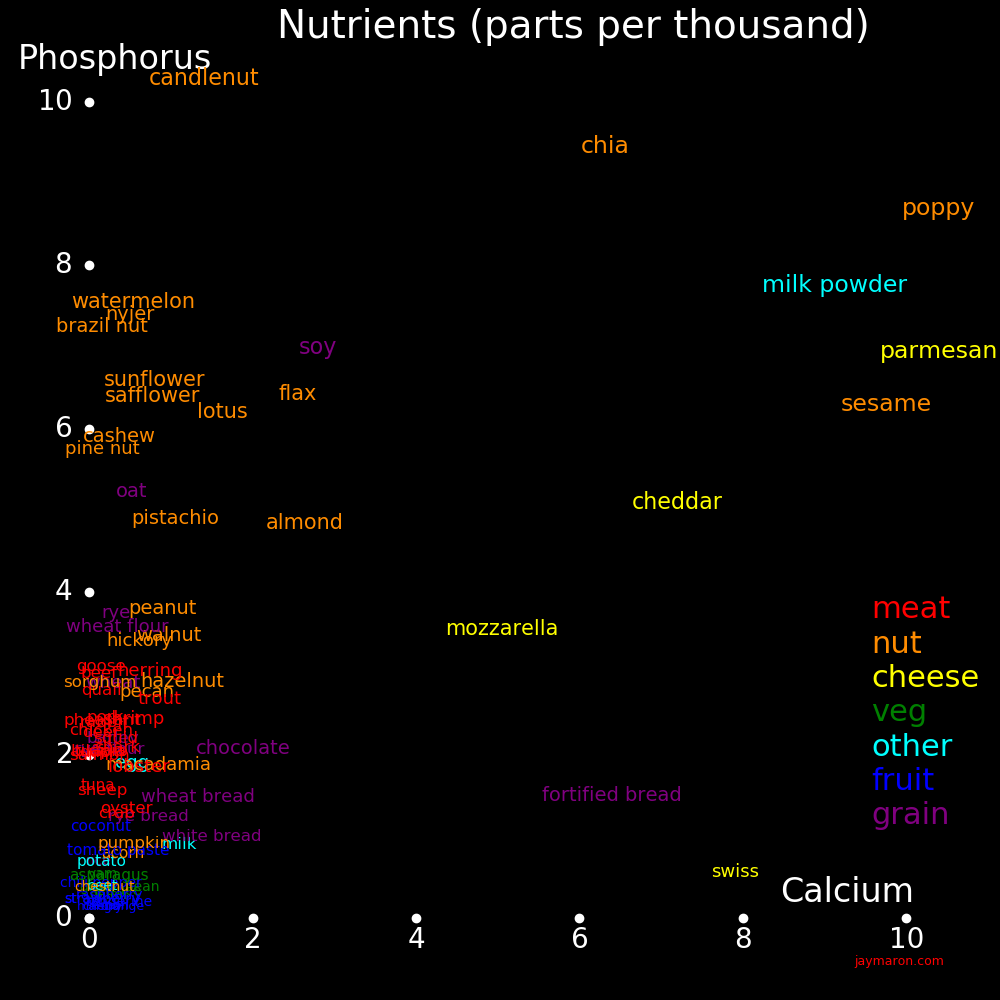 |
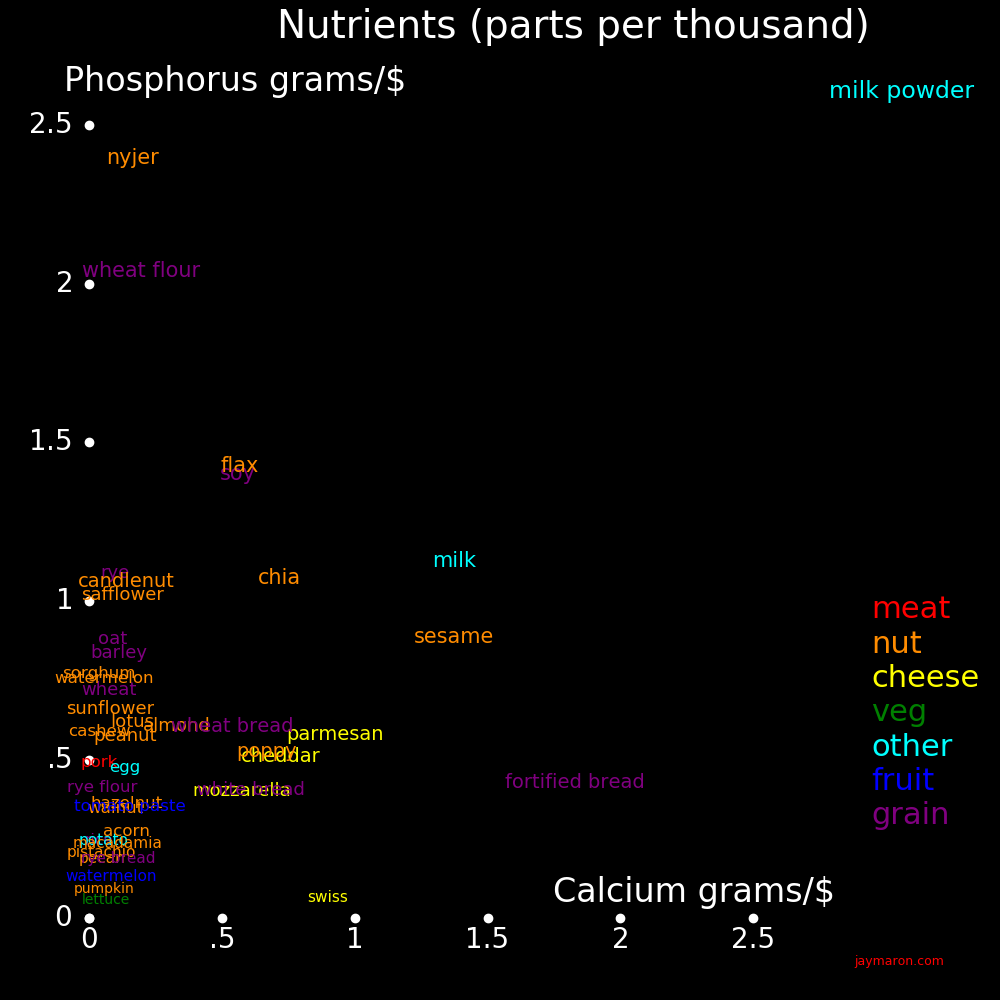 |
|---|---|
The plot shows the phosphorus and potassium content of food. Most nuts are rich in these elements.
 |
|---|
For bird seed, what matters is calories and calcium, and the best seeds are sesame and nyger.
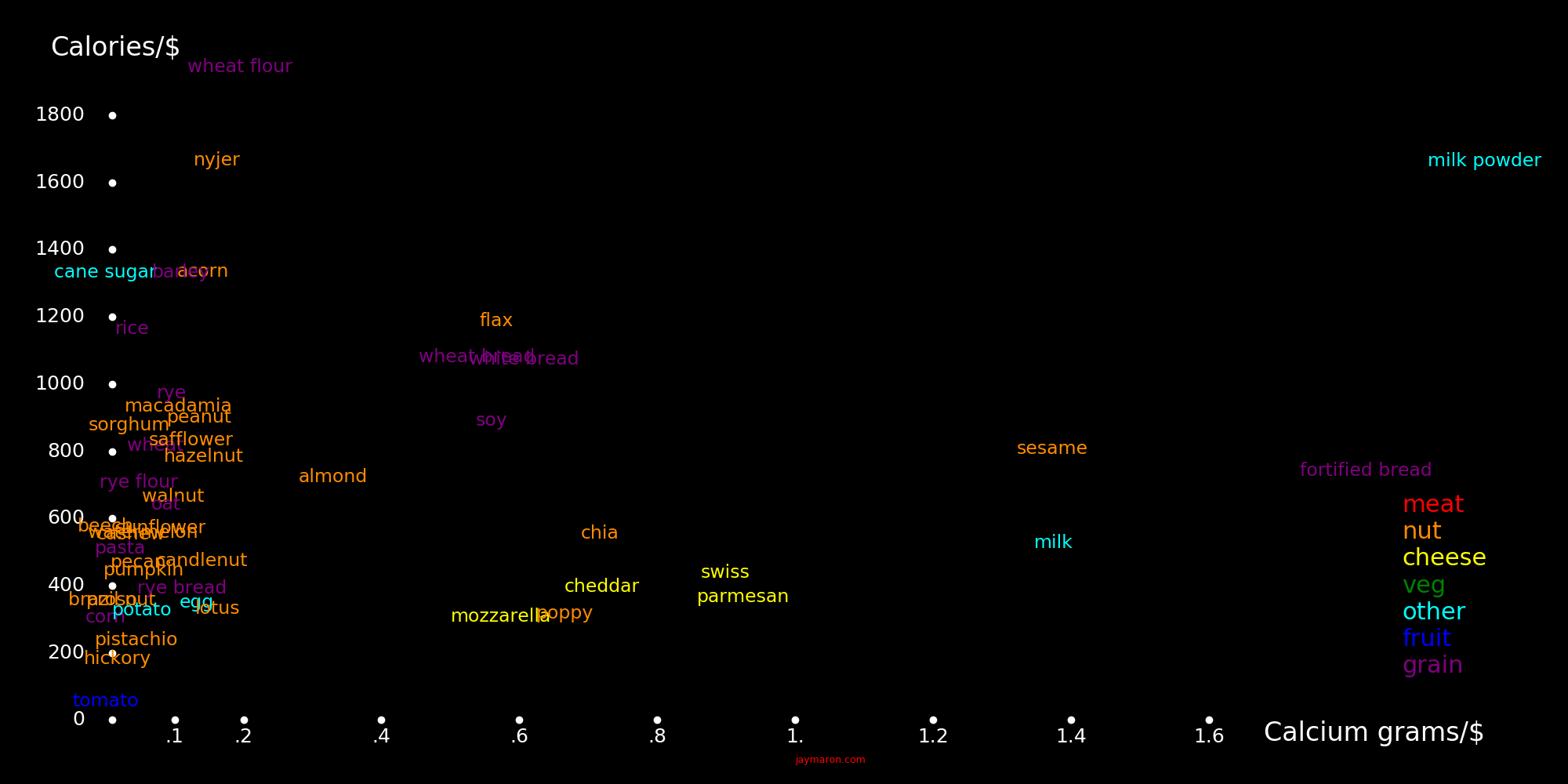 |
|---|
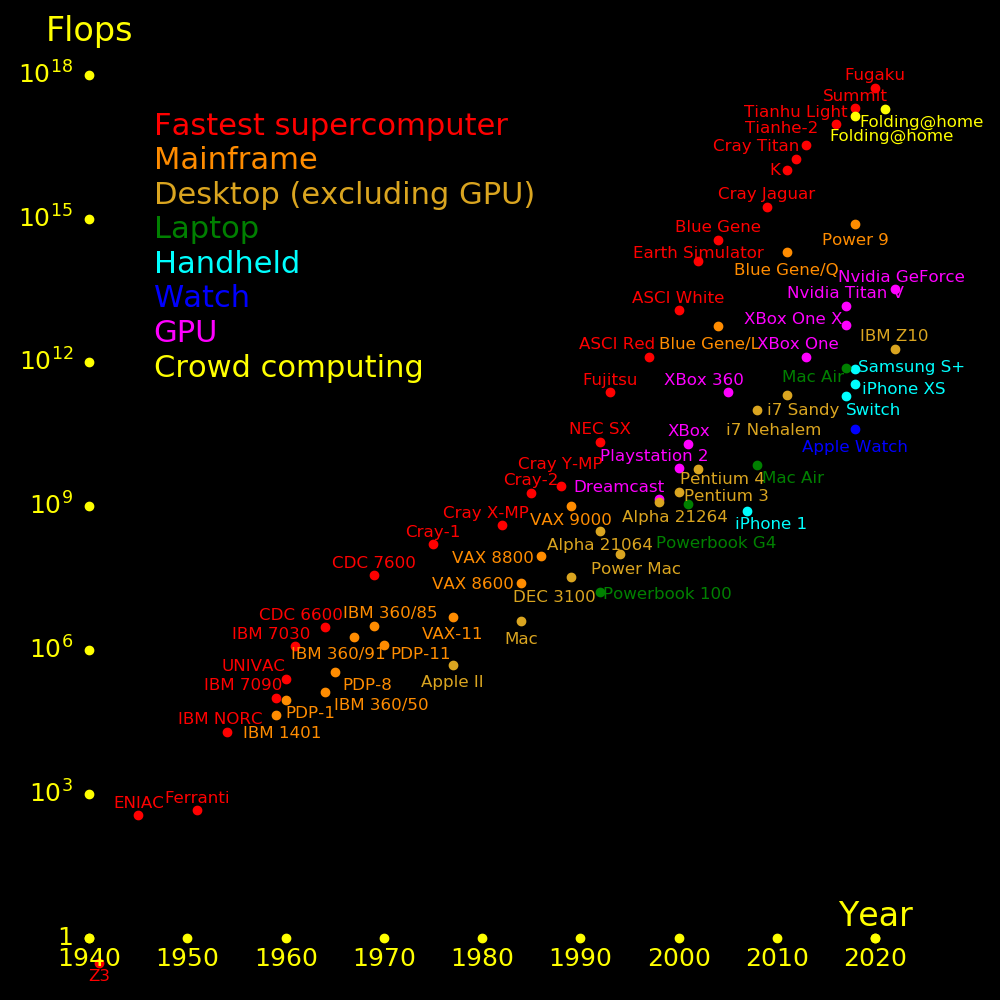 |
|---|
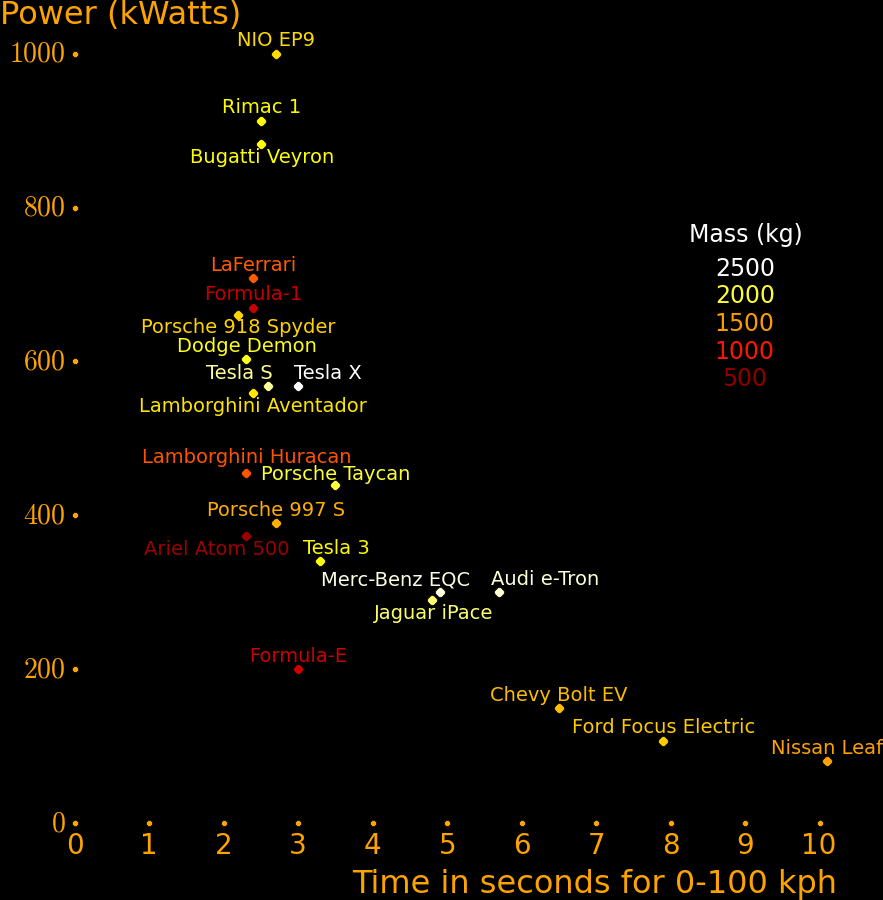 |
|---|
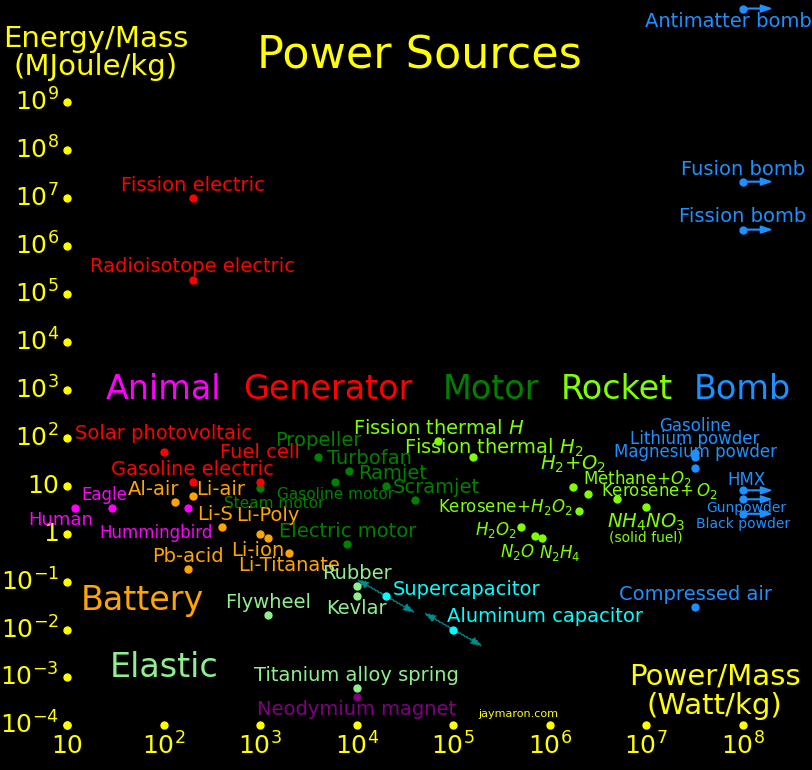 |
|---|
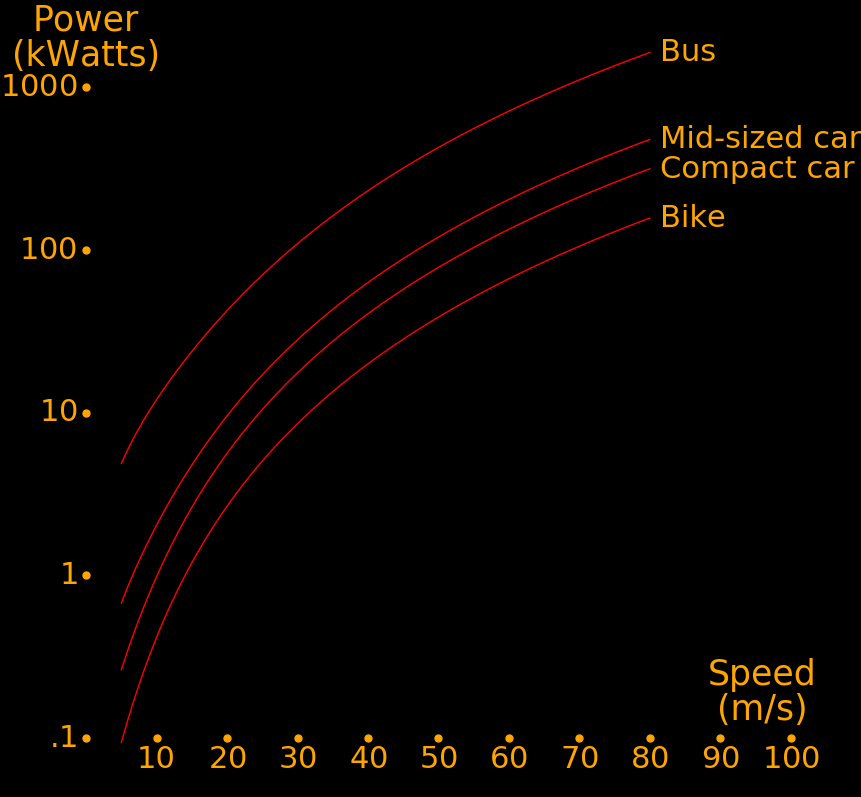 |
|---|
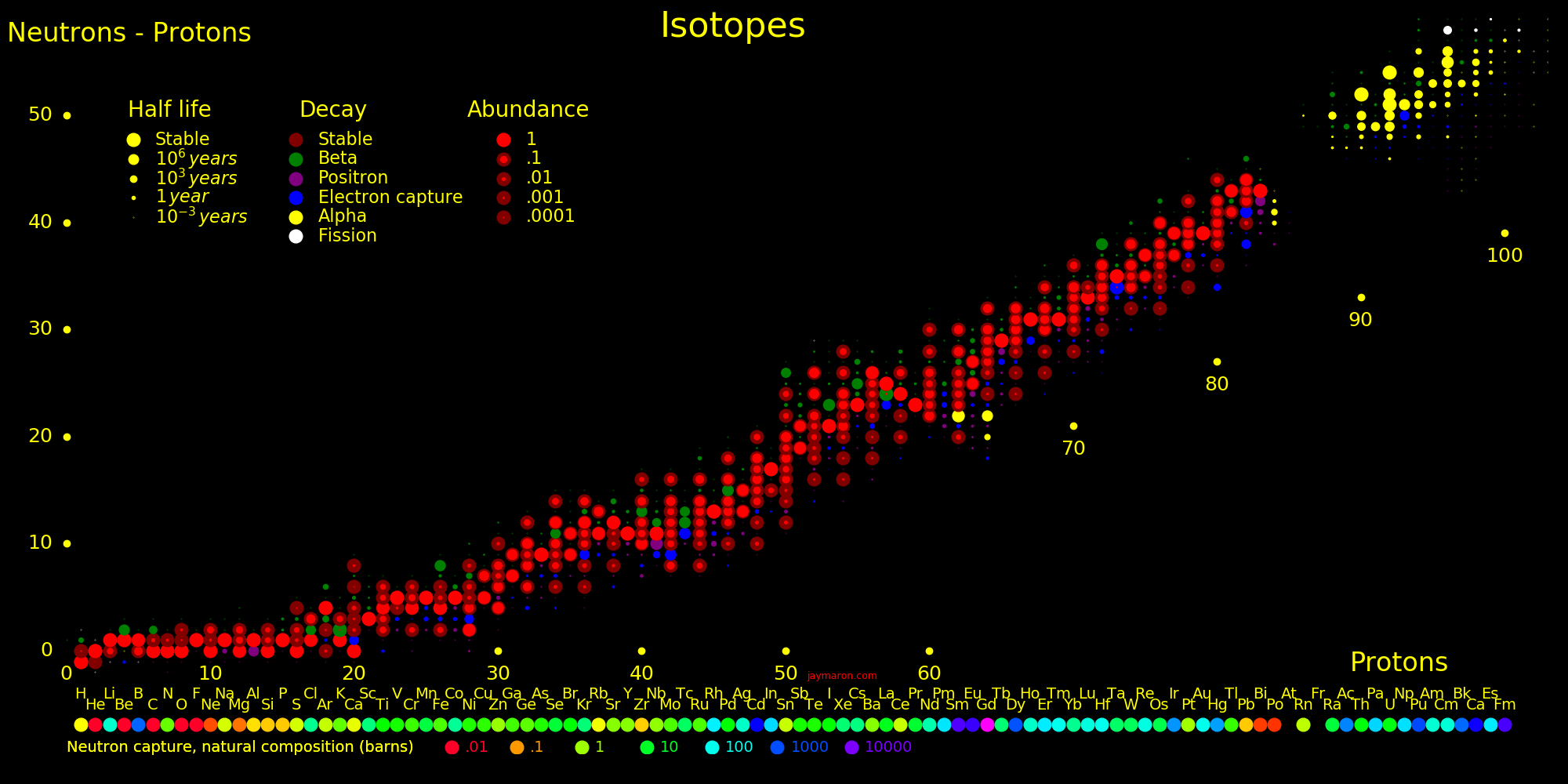 |
|---|
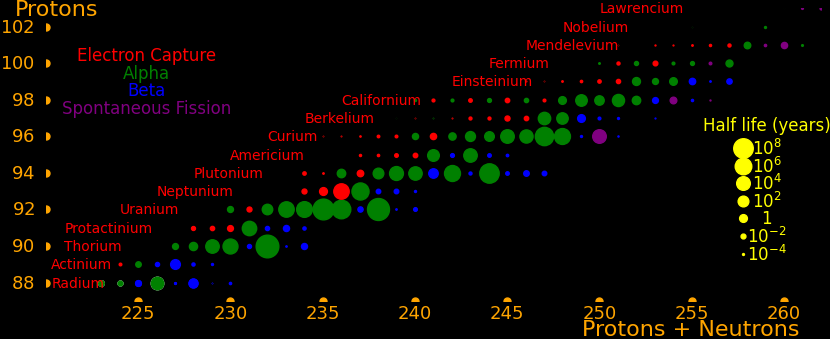 |
|---|
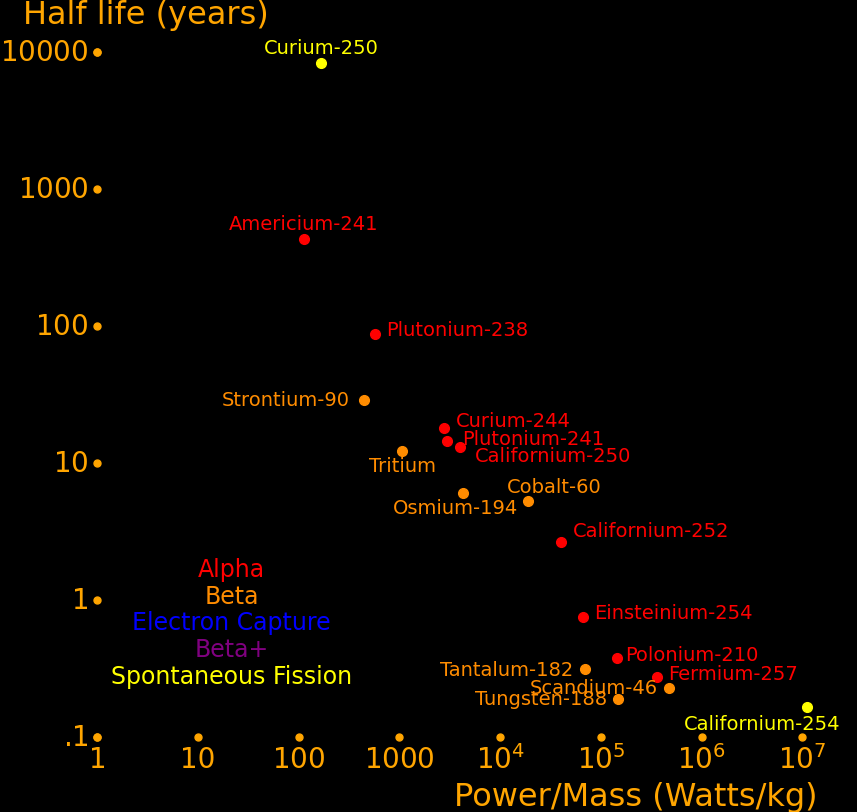 |
|---|
Color is as your eye would see.
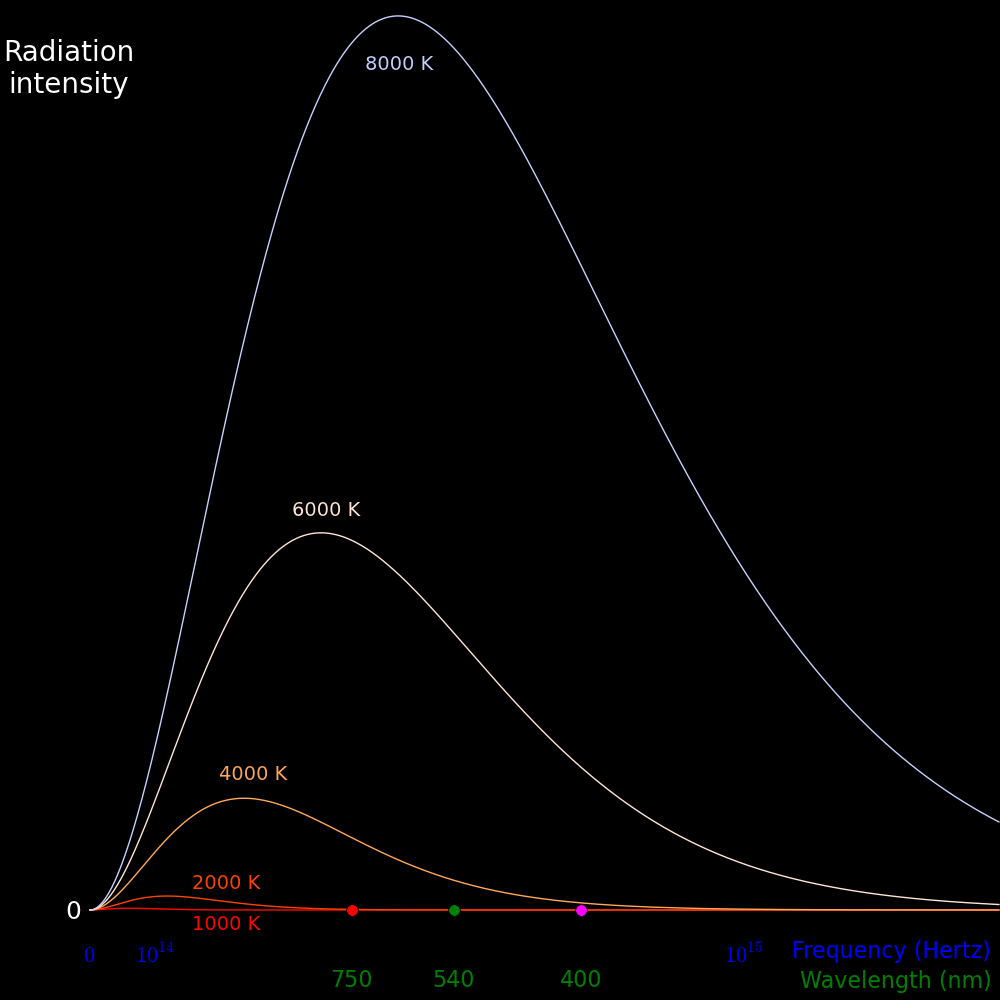 |
|---|
LIGO gravitational wave events.
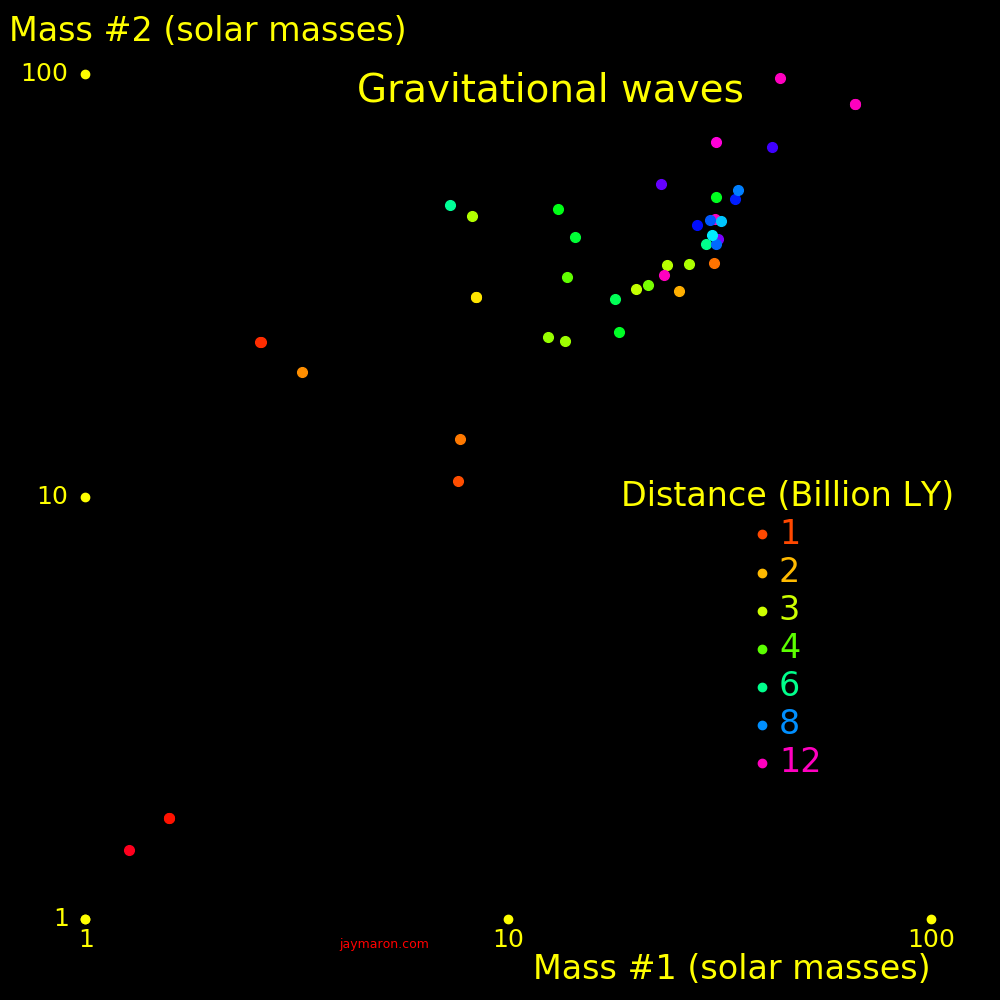 |
|---|
Twin paradox. Suppose a ship travels from Earth to Mars and back.
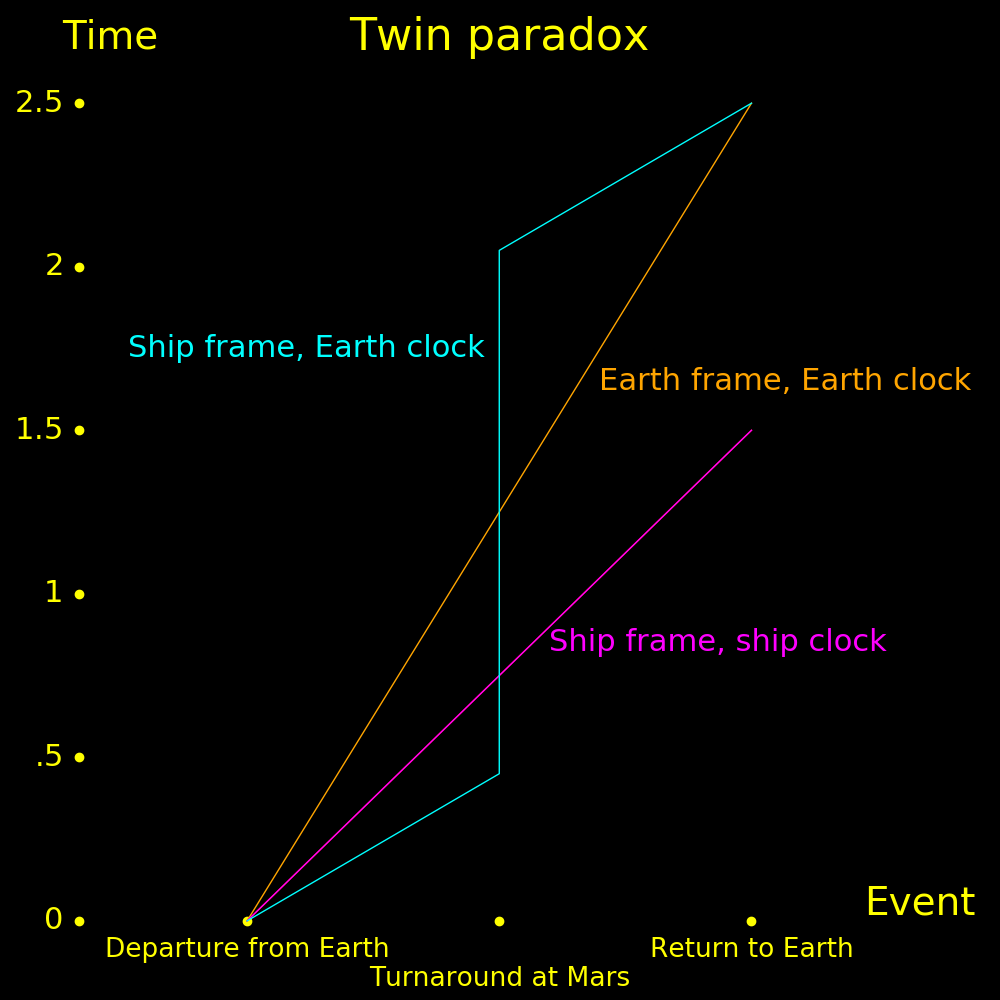 |
|---|
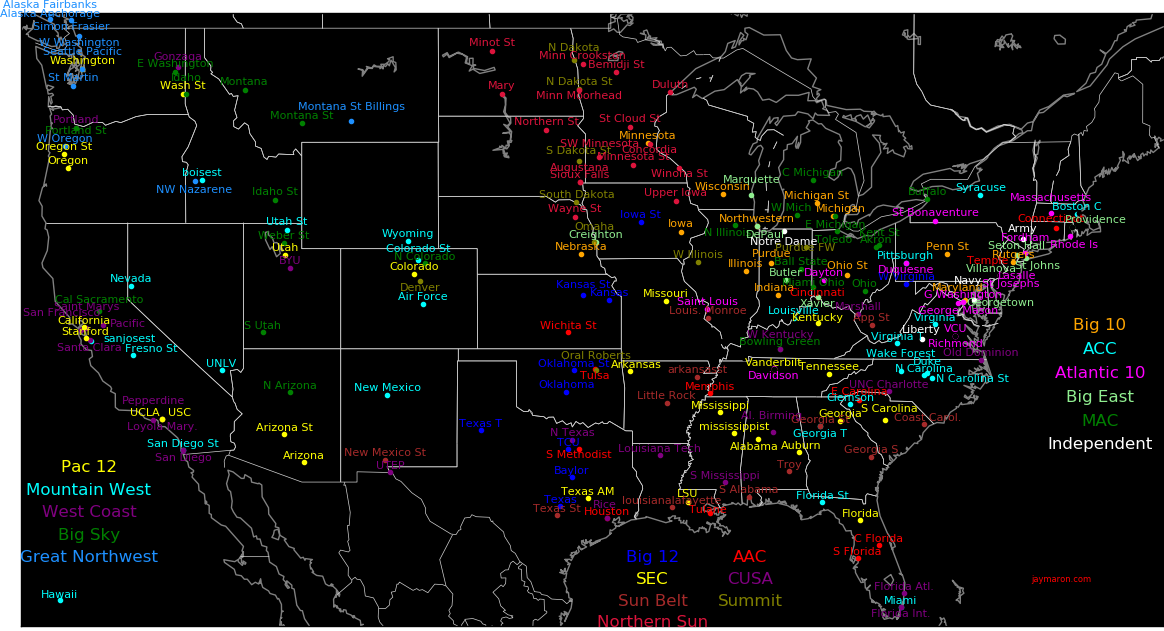 |
|---|
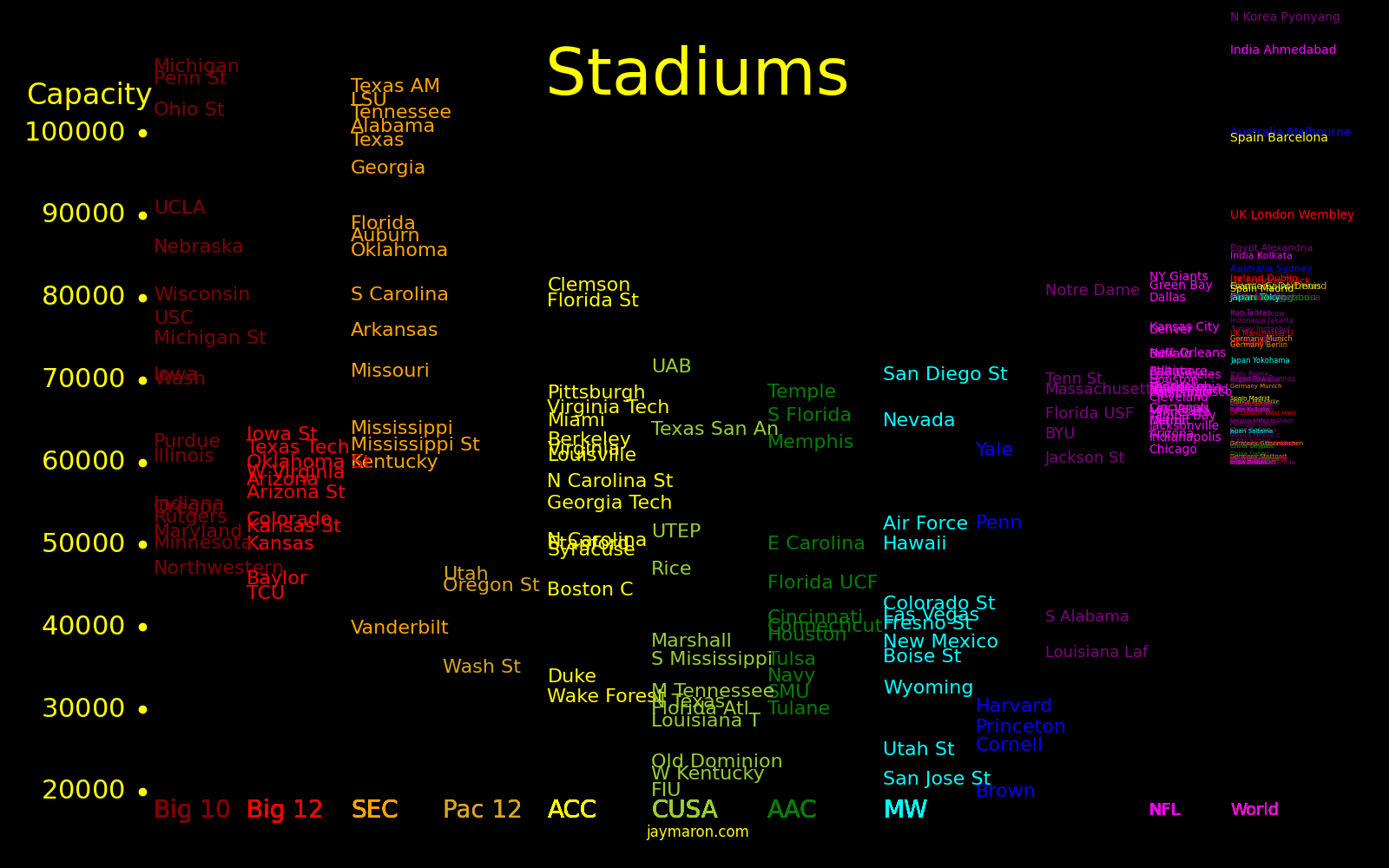 |
|---|
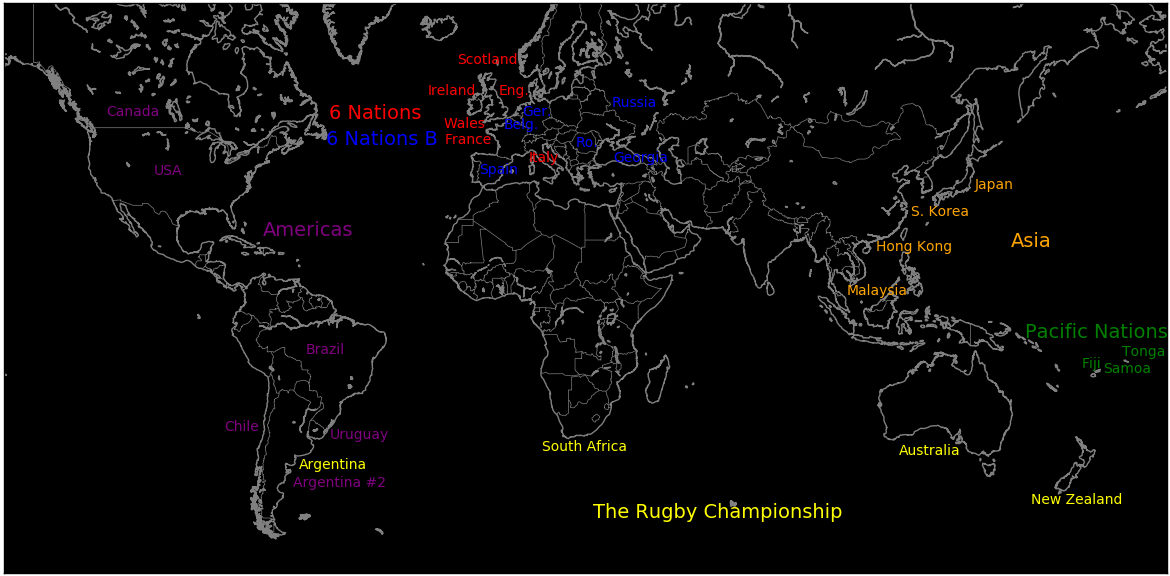 |
|---|
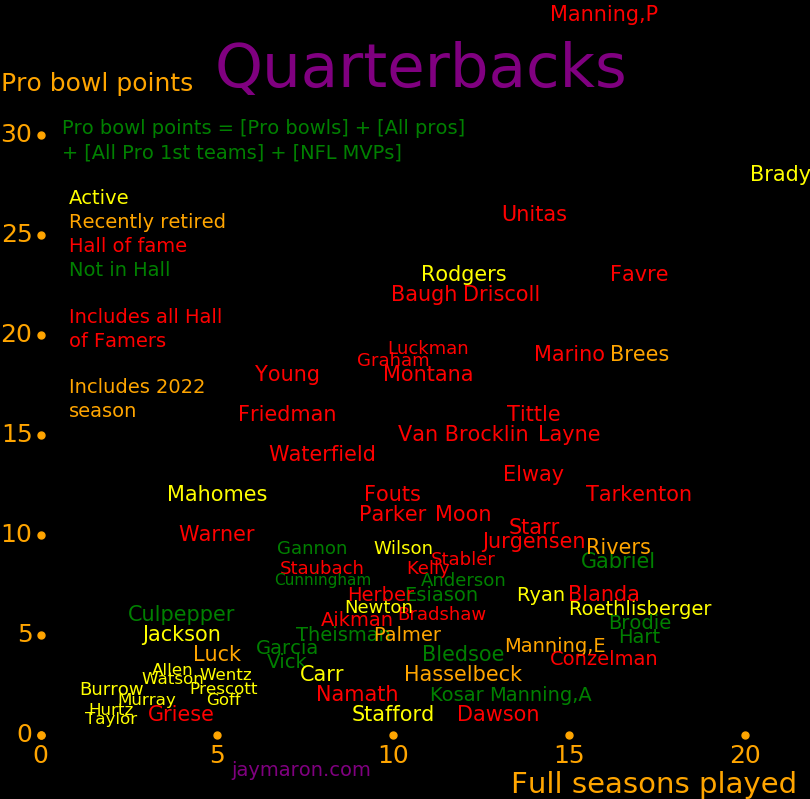 |
|---|
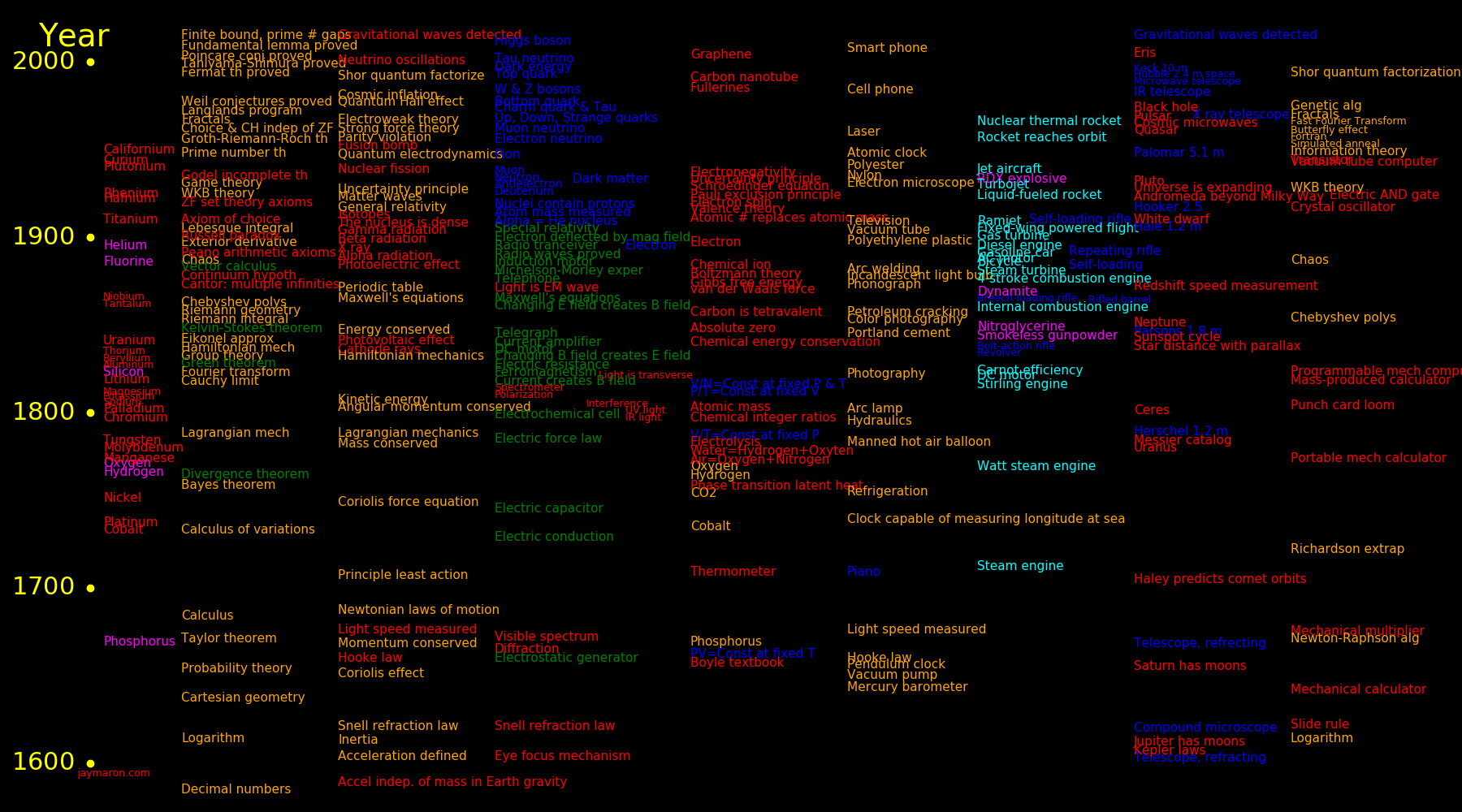 |
|---|
 |
|---|
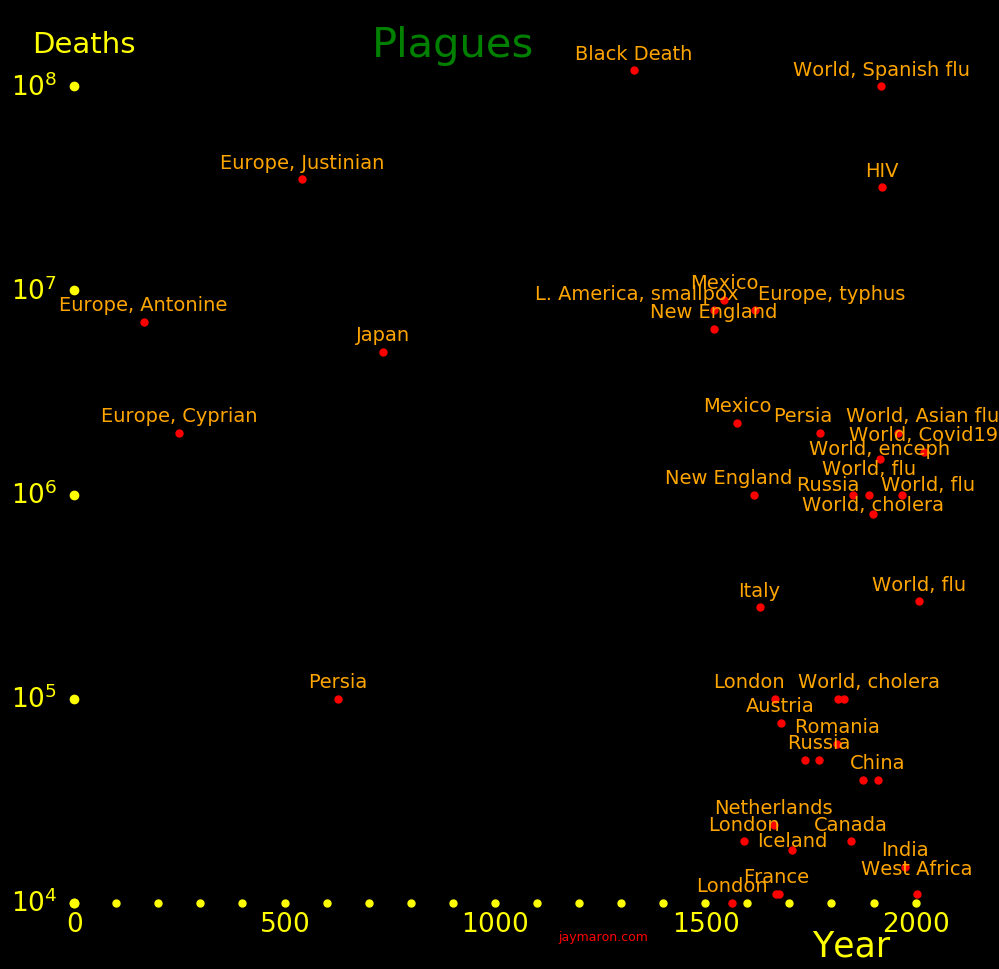 |
|---|
 |
|---|
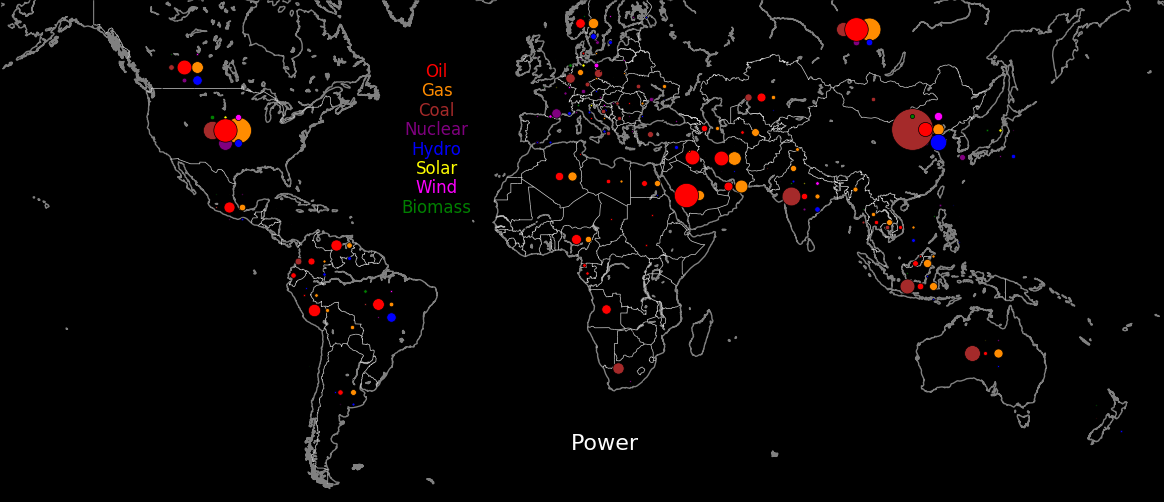 |
|---|
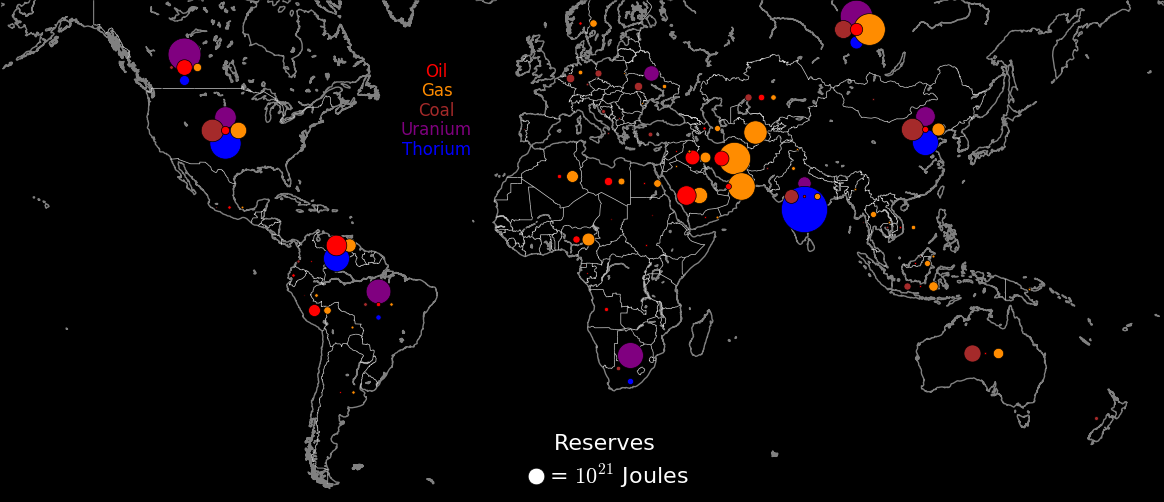 |
|---|
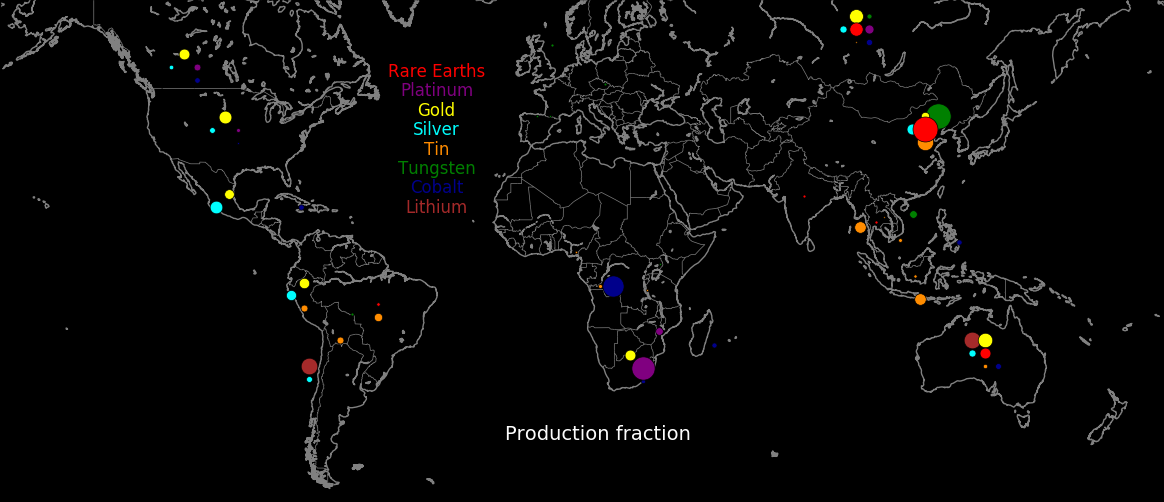 |
|---|
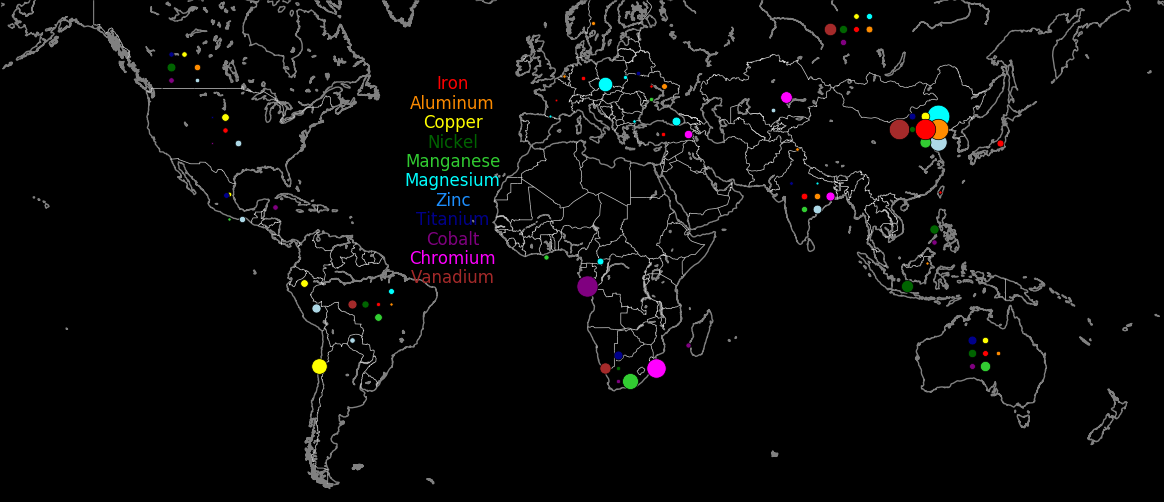 |
|---|
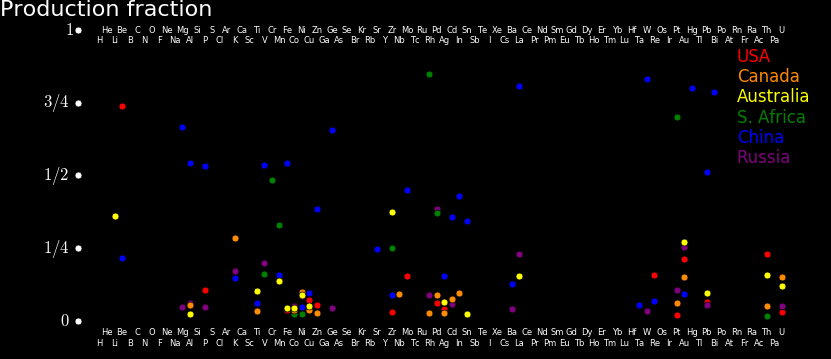 |
|---|
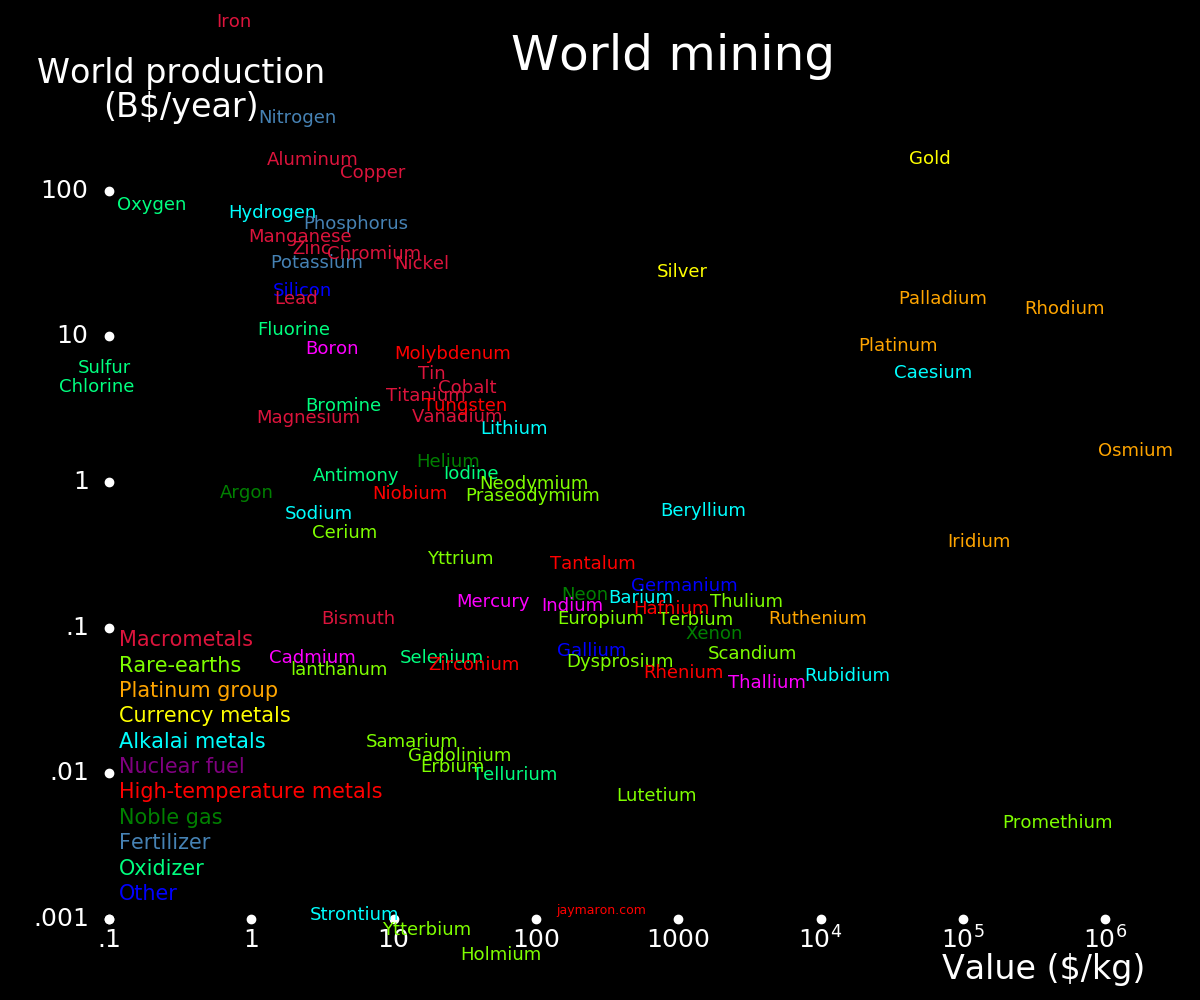 |
|---|
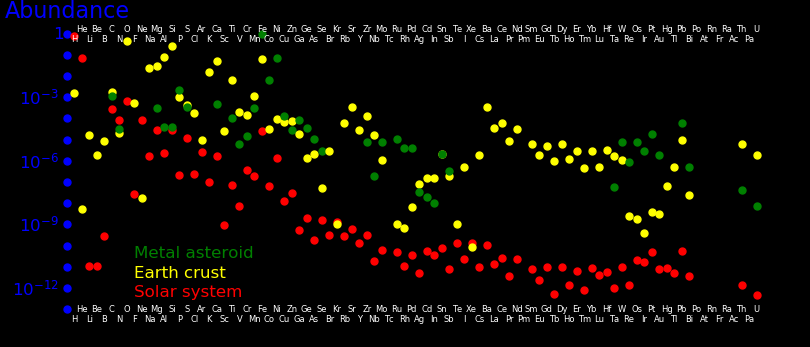 |
|---|
Sizes are to scale and colors are as your eye perceives. Brightness is scaled logarithmically. The image is 40 light years across.
 |
|---|
Proxima Centauri is the small red dot on top of Alpha Centauri. Beta Centauri is at the same place as Alpha Centauri, and is not shown.
Faint red dots are red dwarfs.
 |
 |
 |
 |
 |
 |
|||
|---|---|---|---|---|---|---|---|---|
The sun is a G star.
Sizes and colors are to scale. Brightness is not to scale. Blue giants are vastly brighter than red dwarfs.
Mass increases rightward.
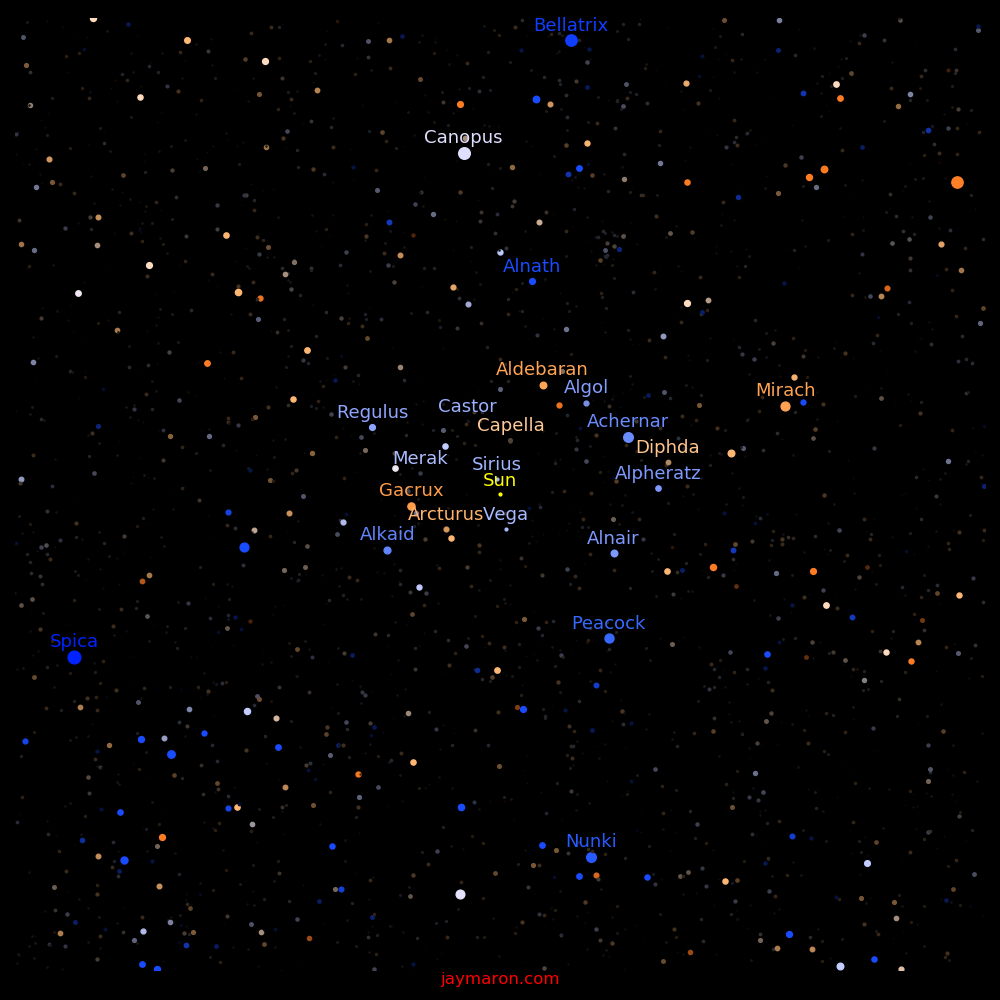 |
|---|
Color is as your eye perceives, and dot size scales with the logarithm of luminosity. The image is 500 light years across, and it's aligned with the galactic plane. If you are far away from the galaxy, such that all the stars are the same distance from you, then this is what you would see. The galaxy is a mix of red, orange, white, and blue stars, and they average to white.
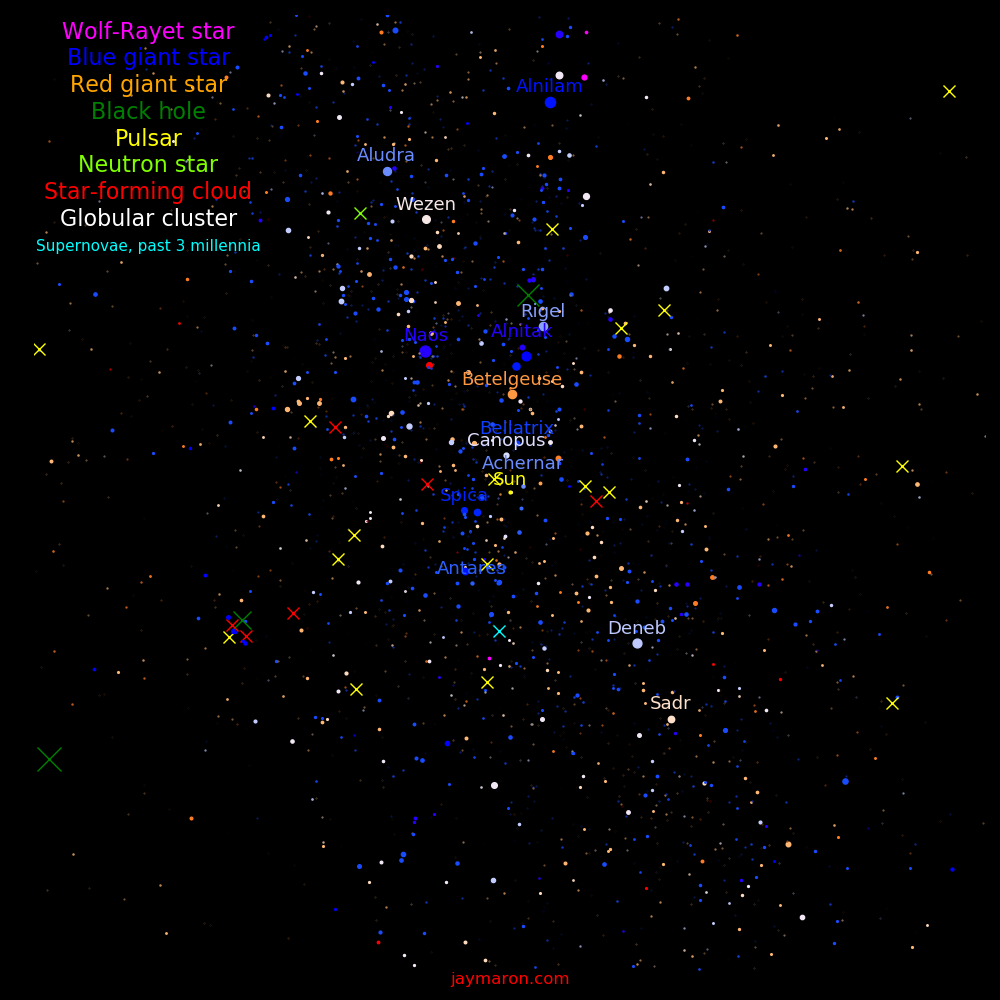 |
|---|
For stars, color is as your eye perceives, and dot size scales with the logrithm of luminosity. The image is 5000 light years across, and it's aligned with the galactic plane.
 |
|---|
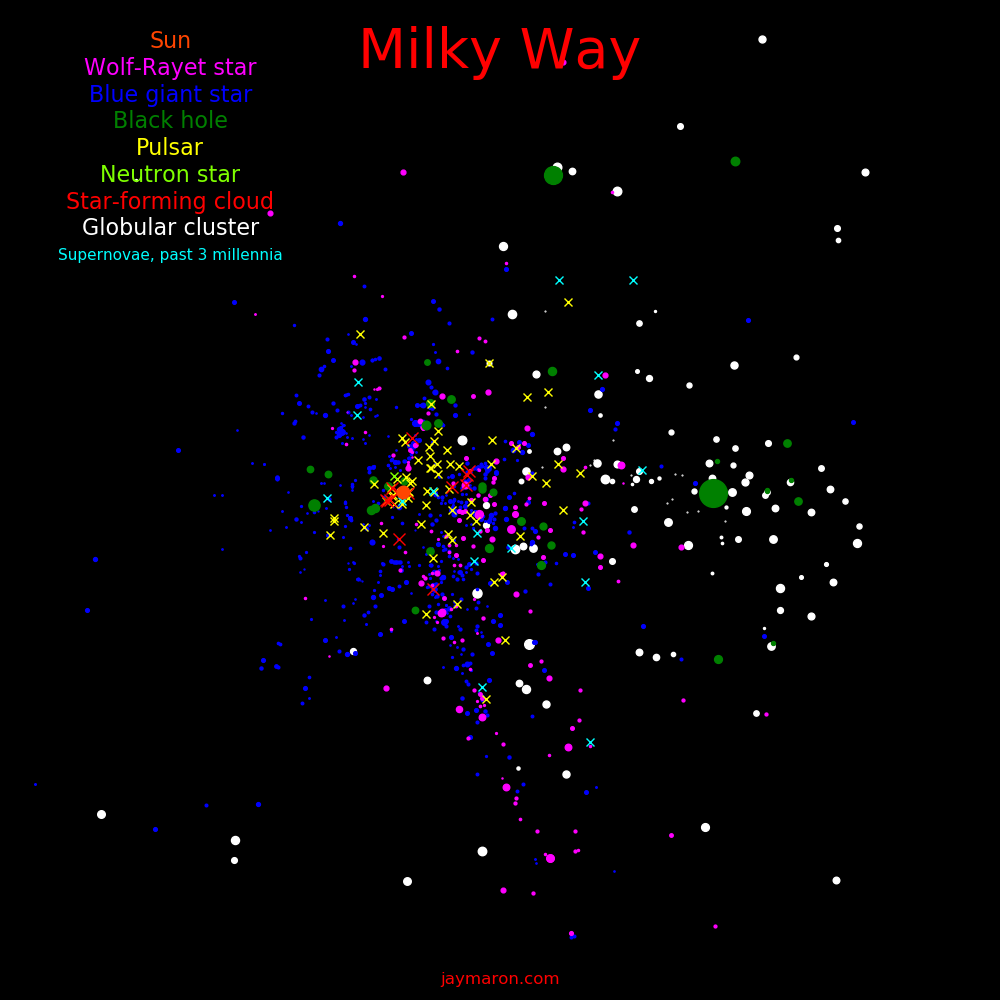 |
|---|
The big green dot is the supermassive black hole at the center of the galaxy, and the sun is to the left. The image is 80000 light years across.
Globular clusters are centered around the galaxy center.
The sun is in a spiral arm, which is mapped out by stars and star-forming clouds.
Most of the far side of the galaxy is obscured by dust, which is why most of the objects are on the near side of the galaxy. Globular clusters and blue giant stars are bright enough to be seen on the far side of the galaxy.
 |
|---|
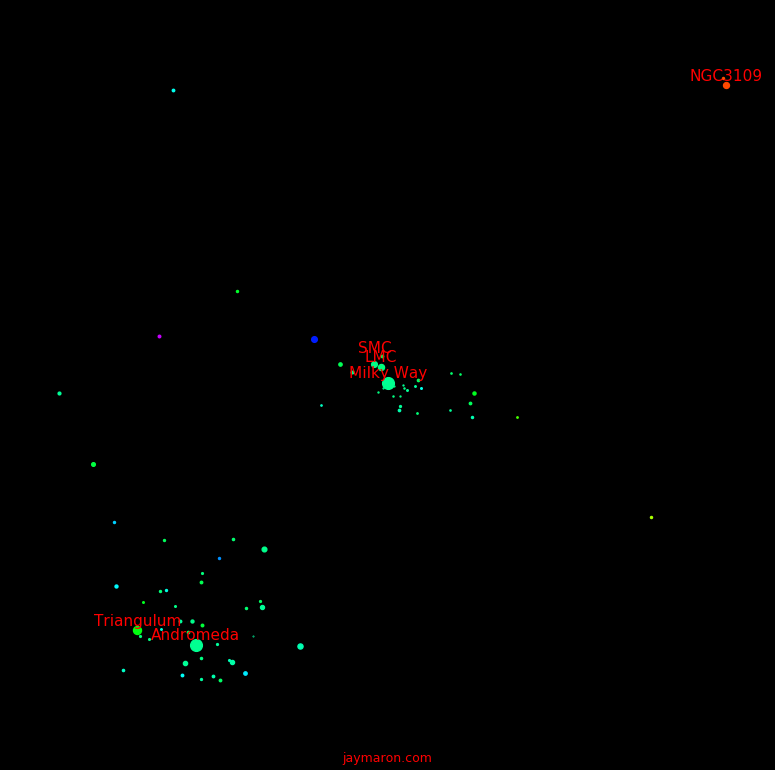 |
|---|
The largest galaxies in the local group are the Milky Way and Andromeda. Sizes and distances are to scale. The image is 6 million light years across. Color indicates the Z coordinate. Blue points have positive Z, red points have negative Z, and green points have Z=0.
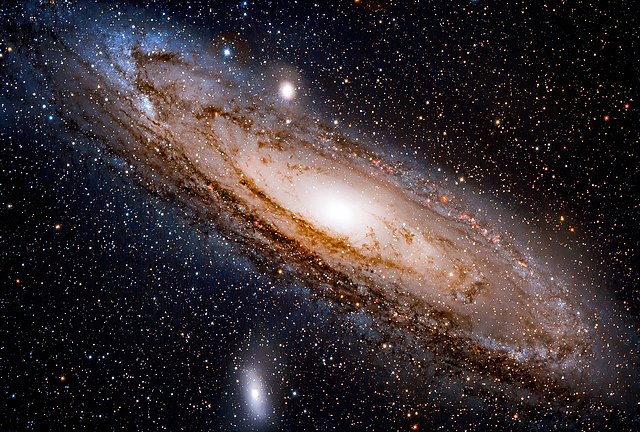 |
 |
 |
 |
|---|---|---|---|
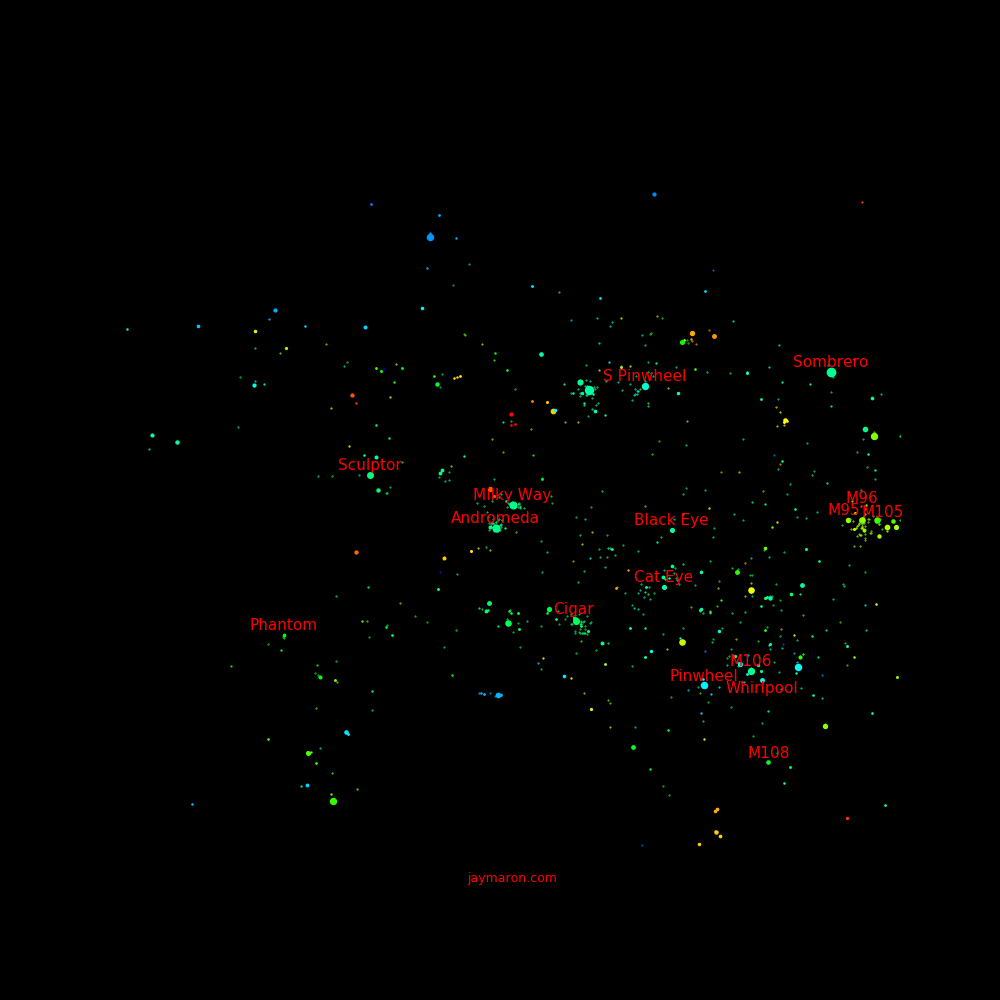 |
|---|
Most galaxies lie in a plane, the "supergalactic plane". This is why most of them are green. The plane Z=0 is aligned with the supergalactic plane.
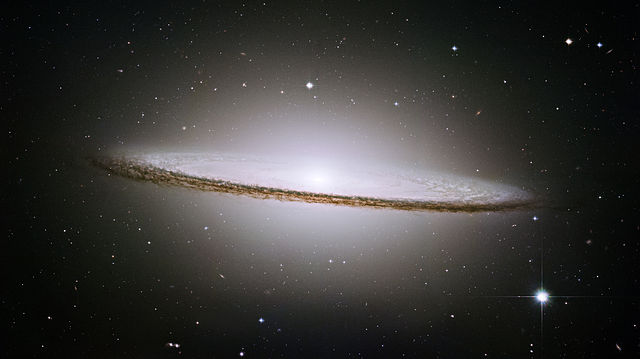 |
 |
 |
 |
 |
 |
 |
 |
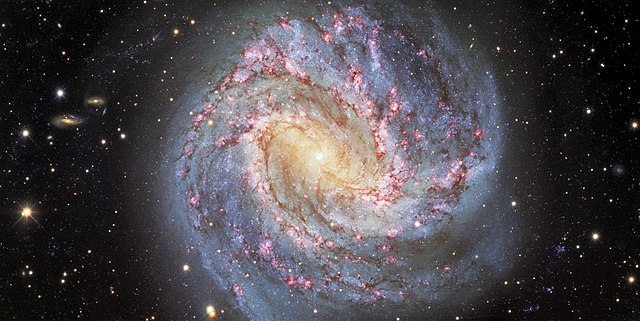 |
 |
 |
 |
 |
 |
|---|---|---|---|---|---|---|---|---|---|---|---|---|---|
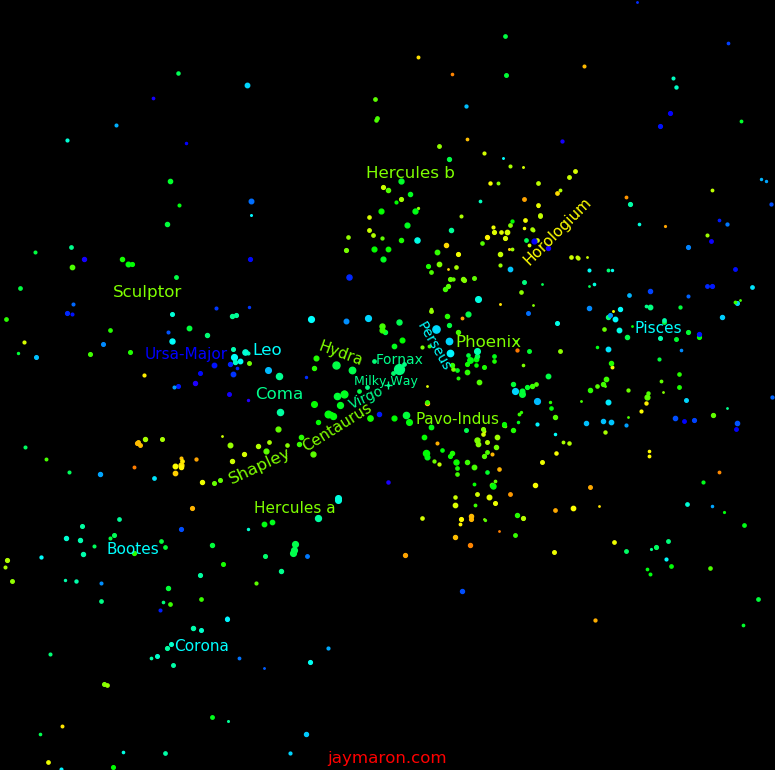 |
|---|
Dots are "Abell clusters", which are clusters of galaxies. Abell clusters are often grouped into superclusters.
The image is 2000 million light years across. Blue points have positive Z, red points have negative Z, and green points have Z=0.
Most superclusters lie in a plane, the "supergalactic plane". This is why most of them are green. The plane Z=0 is aligned with the supergalactic plane.
 |
 |
 |
 |
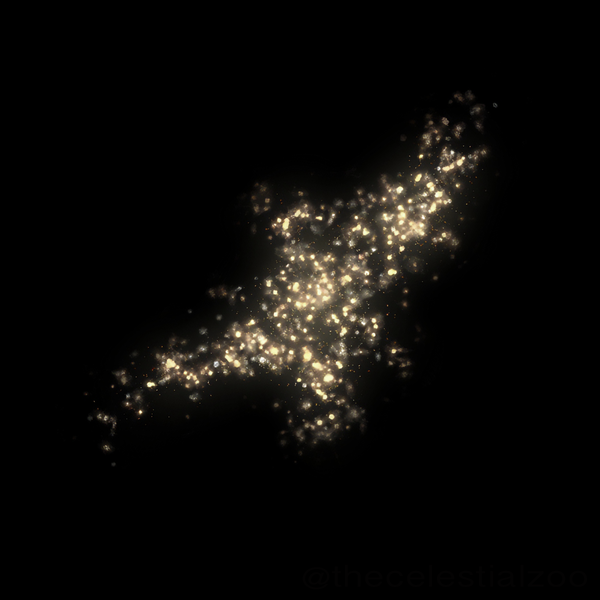 |
 |
 |
|---|---|---|---|---|---|---|
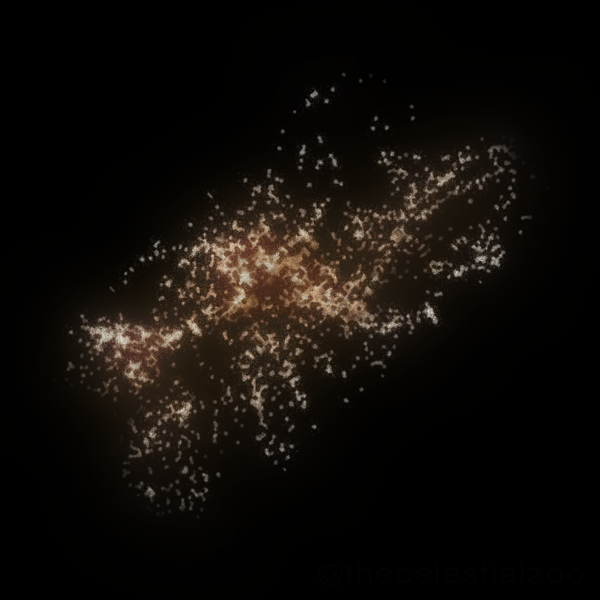 |
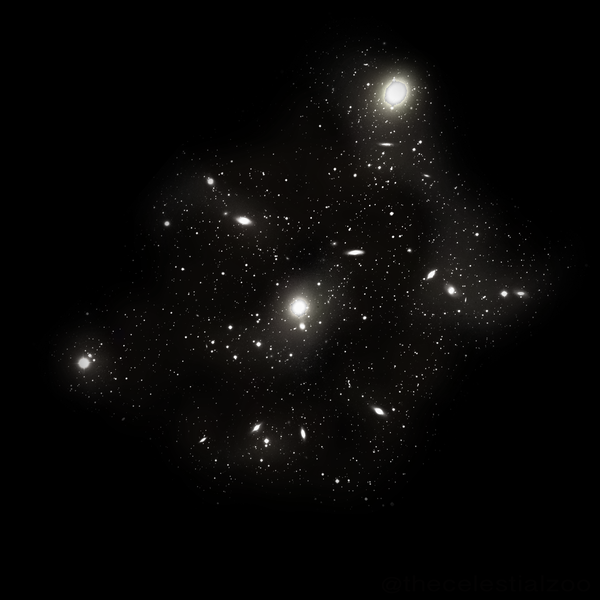 |
 |
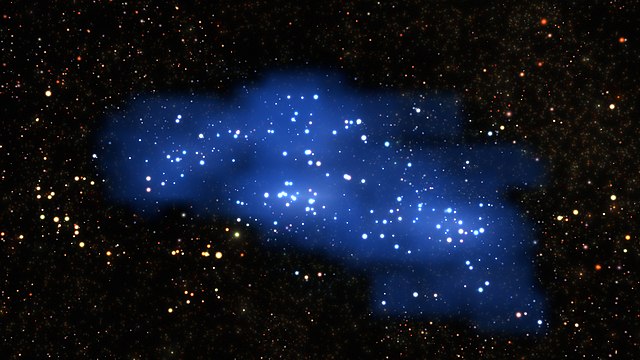 |
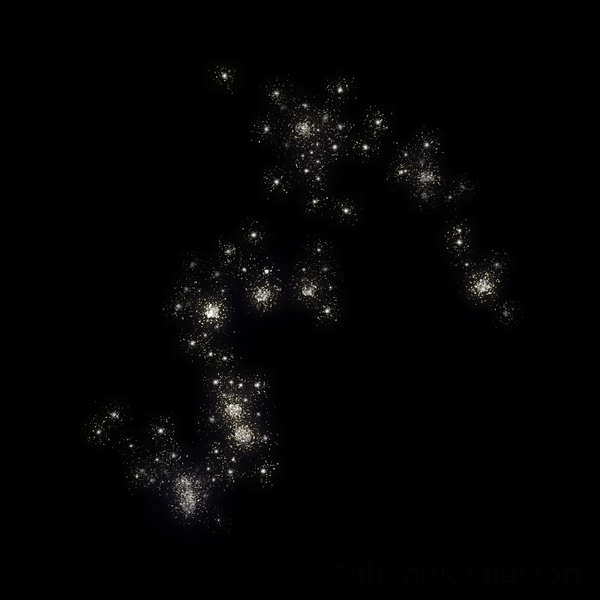 |
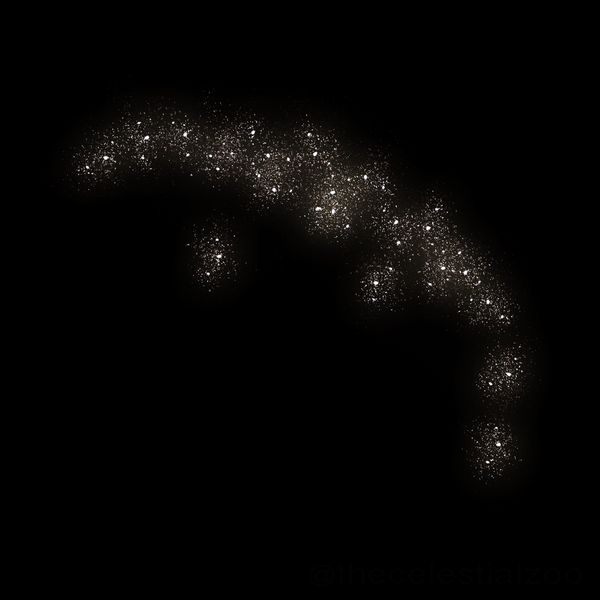 |
 |
|---|---|---|---|---|---|---|
This shows the galaxies of the local group and their radial velocities. Most galaxies are heading in the direction of the Milky Way. Andromeda is headed for a collision with the Milky Way. The LMC and SMC are headed away from us but they will turn around and crash into the Milky Way.
 |
|---|
This shows the Hubble law. Nearby galaxies tend to be moving toward us and distant galaxes are always moving away from us. The farther the galaxy, the faster it tends to move away from us.
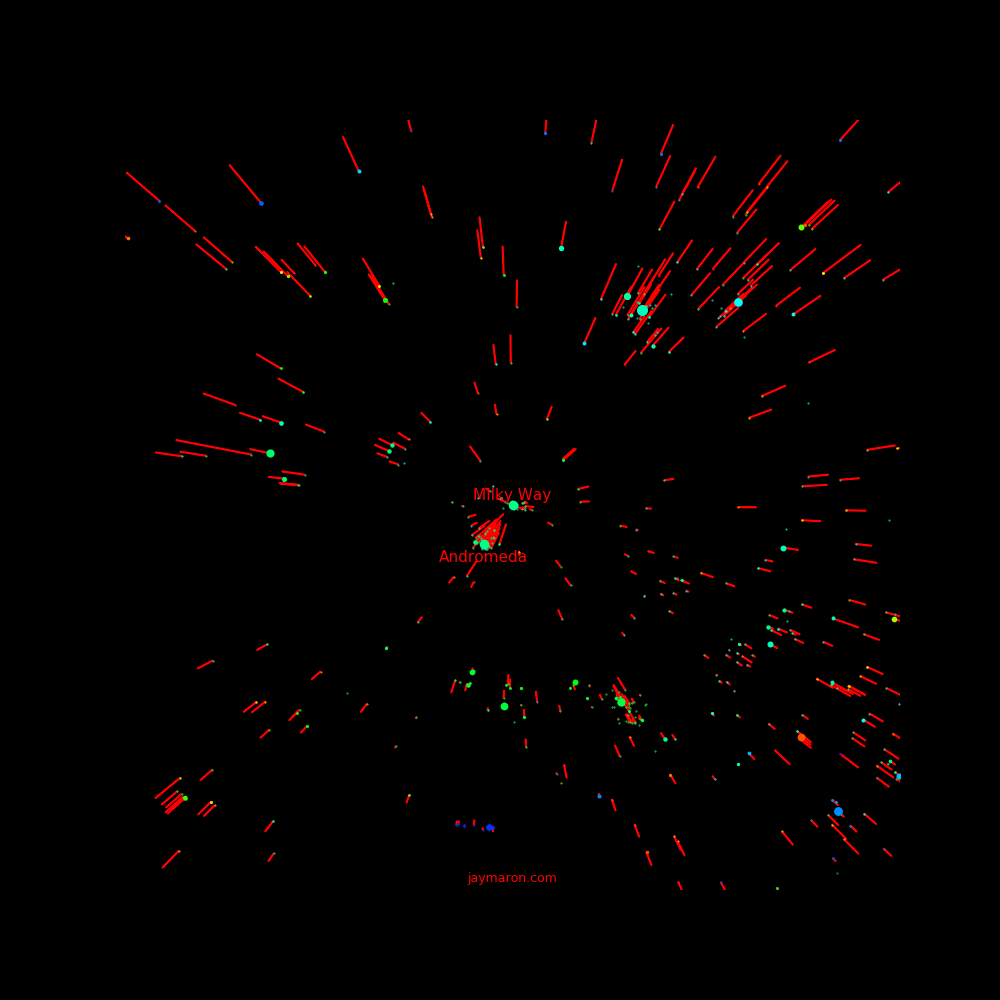 |
|---|
The universe expands according to the Hubble law. If there were no gravity, all galaxies would fall on the Hubble line. Departures rom the Hubble law are due to gravity between galaxies.
For each cluster, we identified the largest galaxies and used these for the plot. Each point represents a galaxy, and the label denotes what cluster the galaxy belongs go.
 |
|---|
 |
|---|
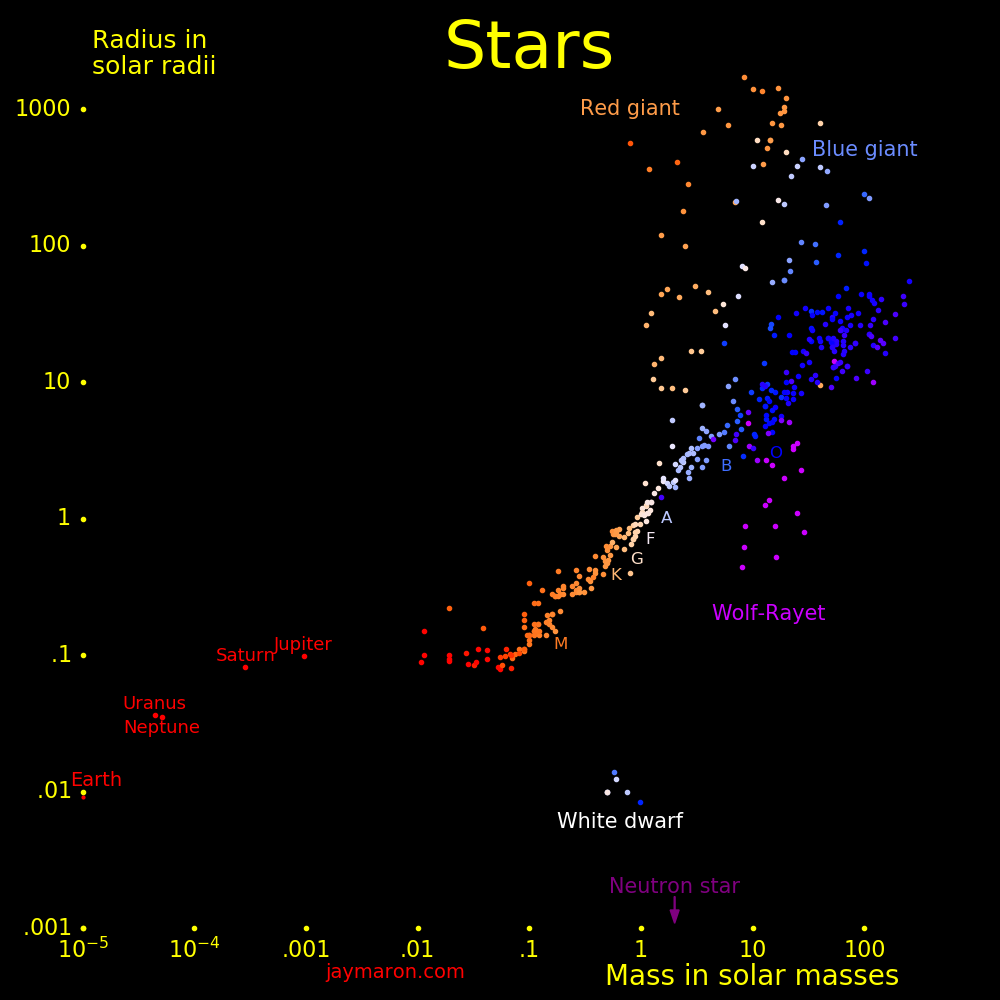 |
|---|
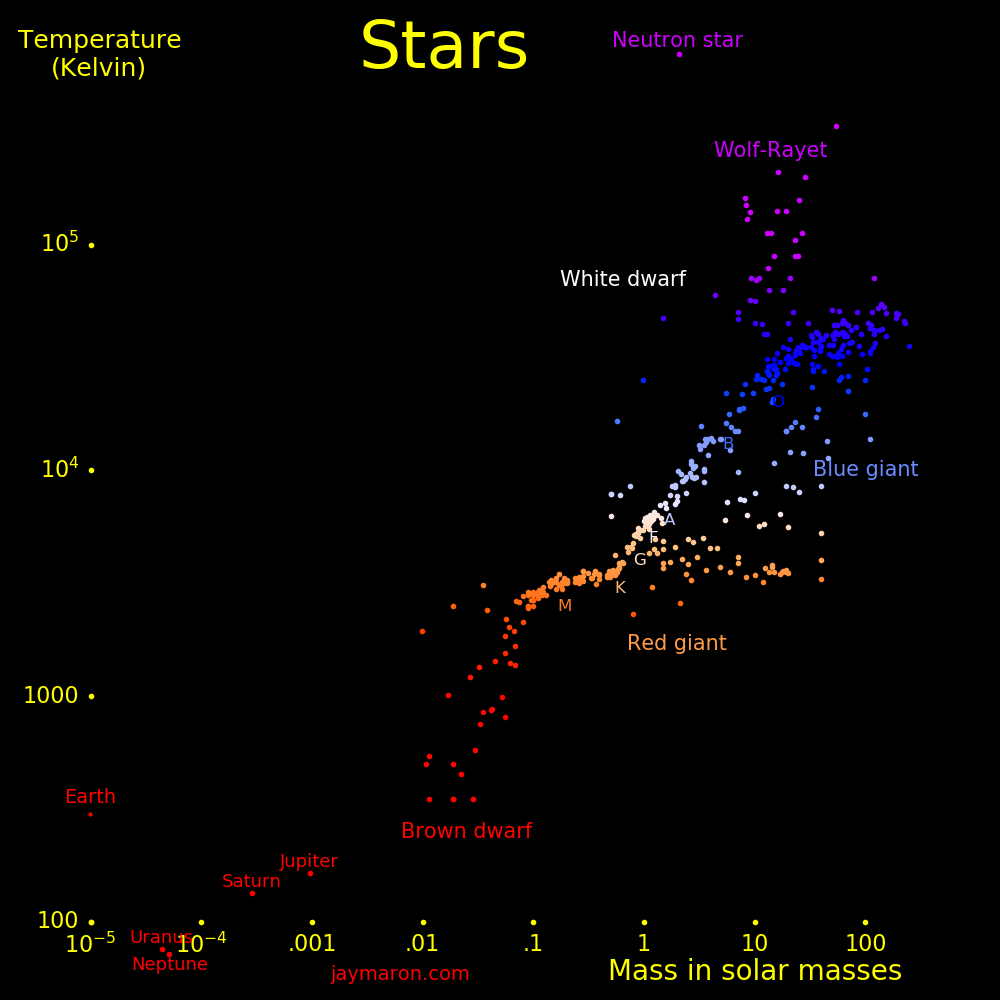 |
|---|
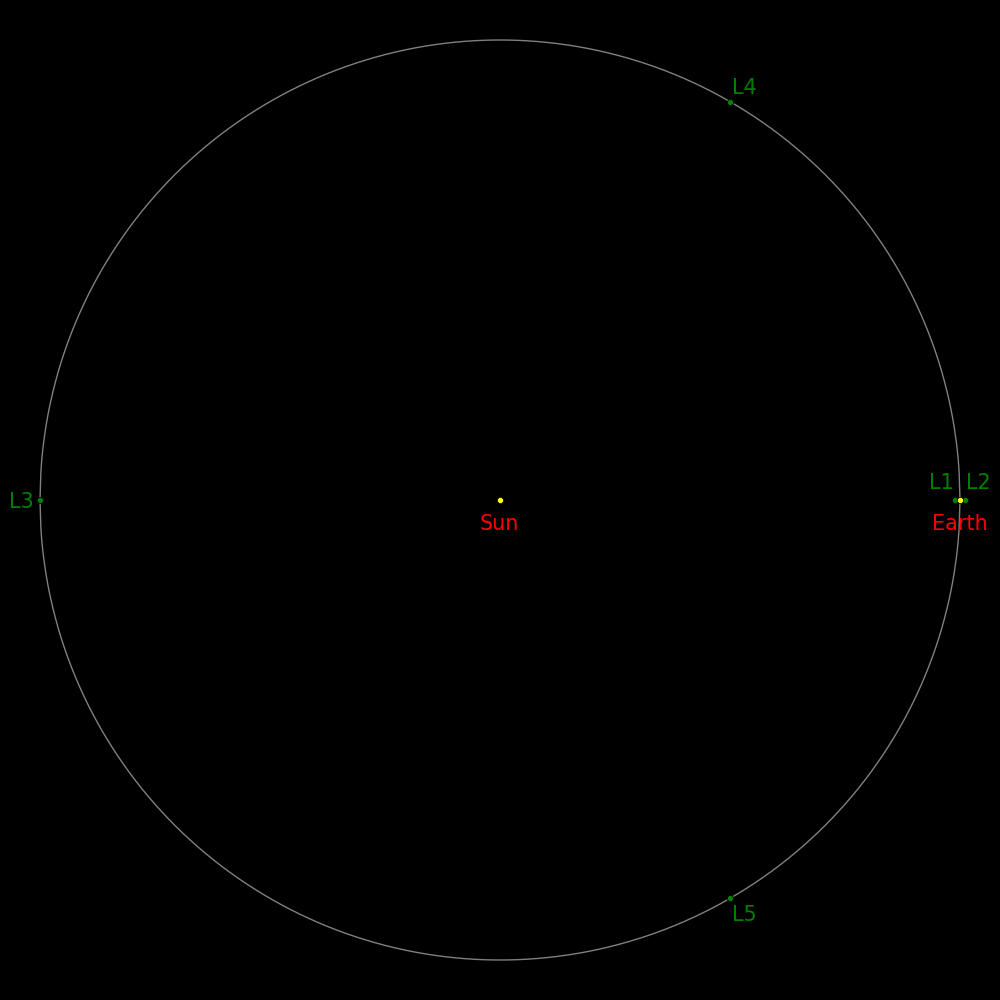 |
|---|
 |
|---|
A nation's GDP and power consumption correlated.
 |
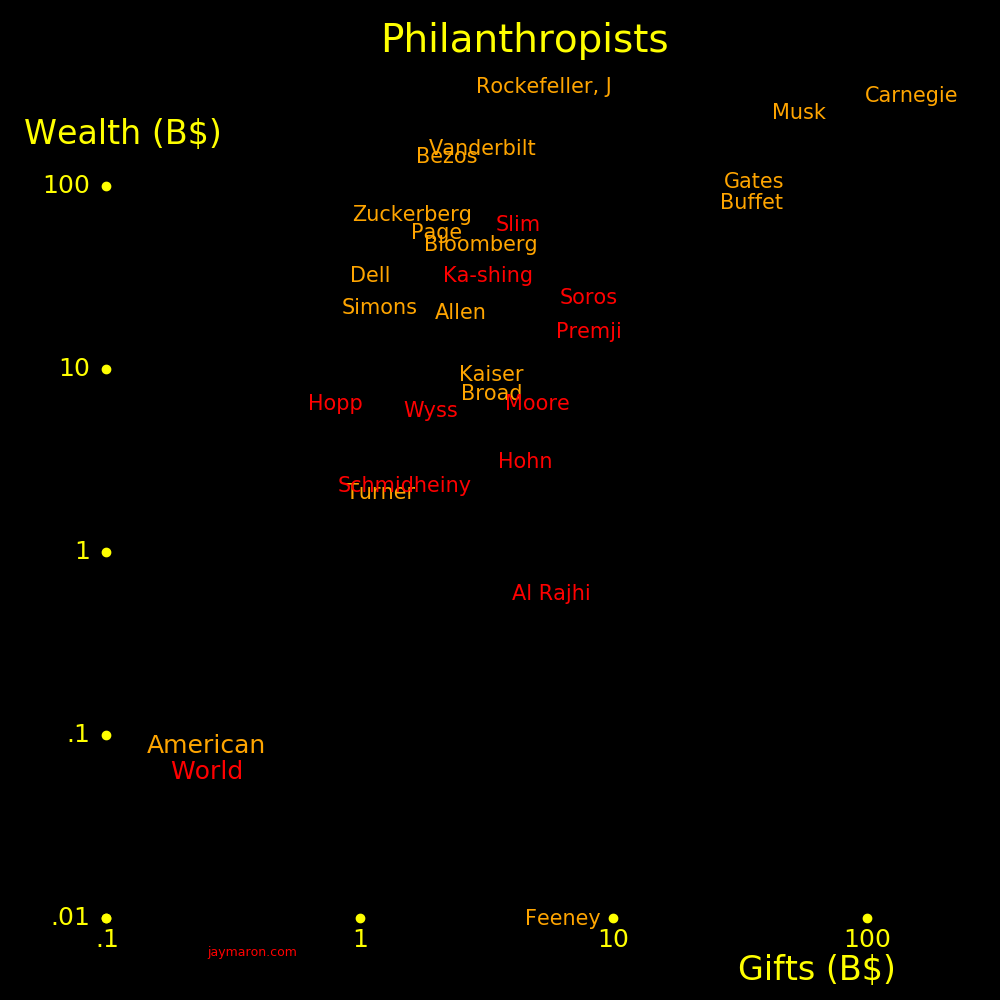 |
The Gini coefficient characterizes a nation's wealth distribution. The larger the Gini coefficient, the more concentrated the wealth.
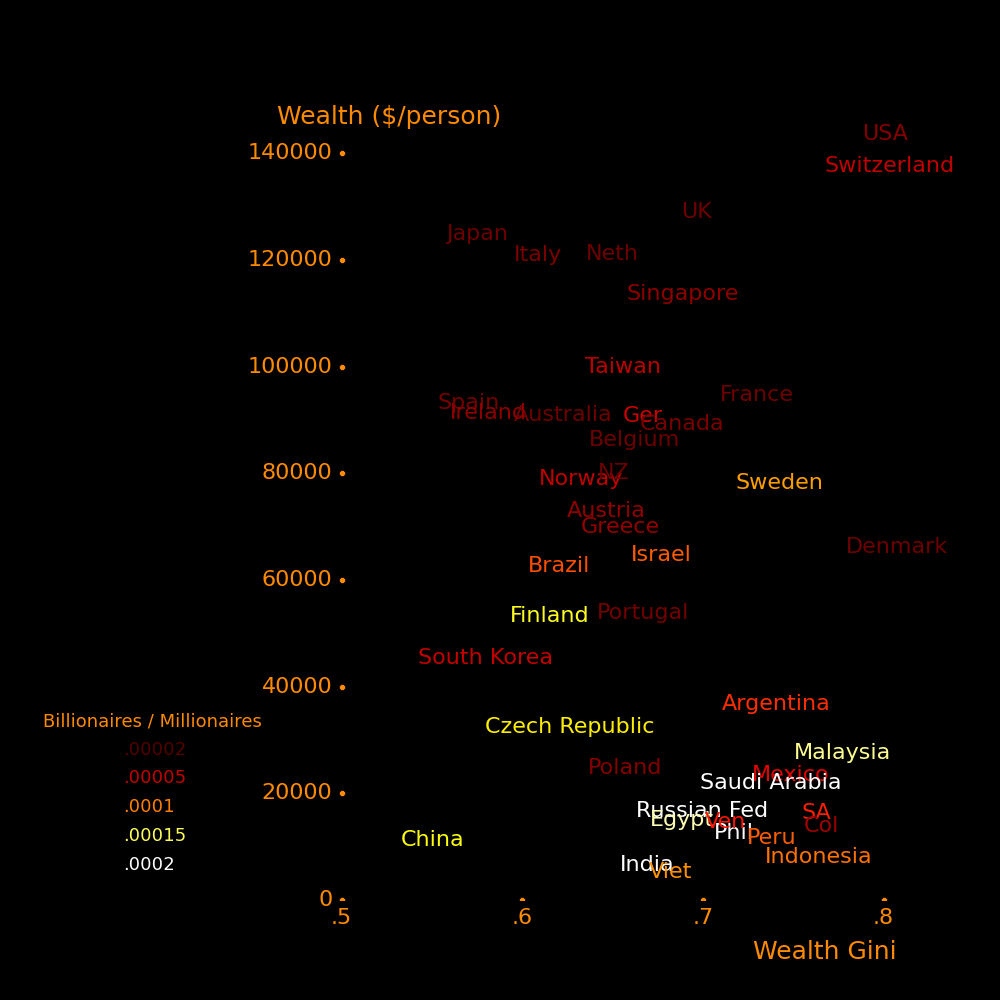 |
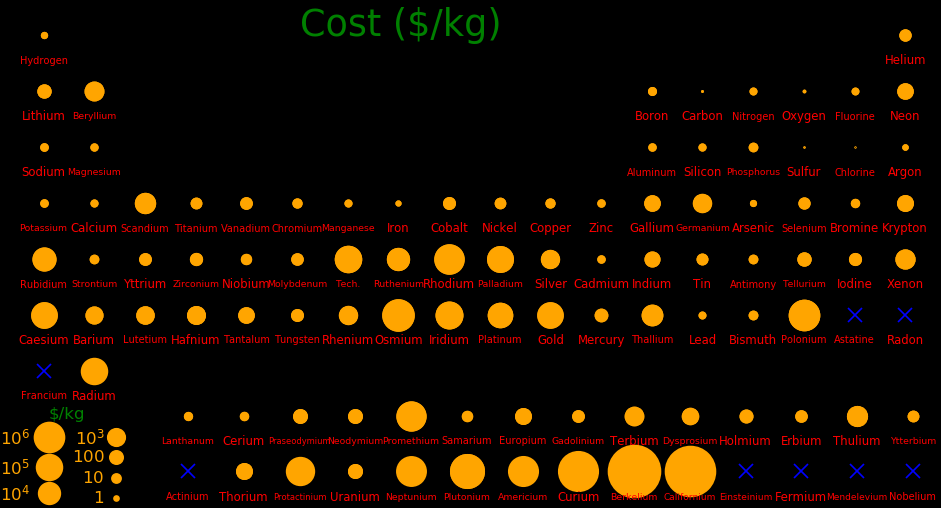 |
|---|
The plot shows the elastic strength of materials Alloys are much stronger than pure metals. Kevlar is substantially stronger than metals.
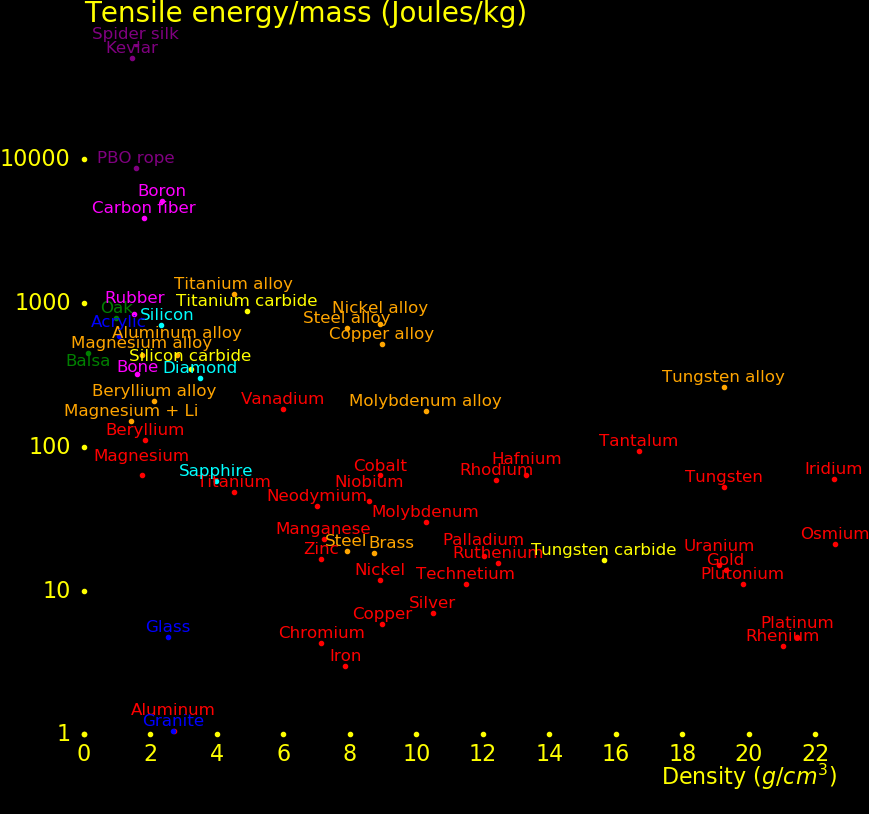 |
|---|
Appendix with more element plots
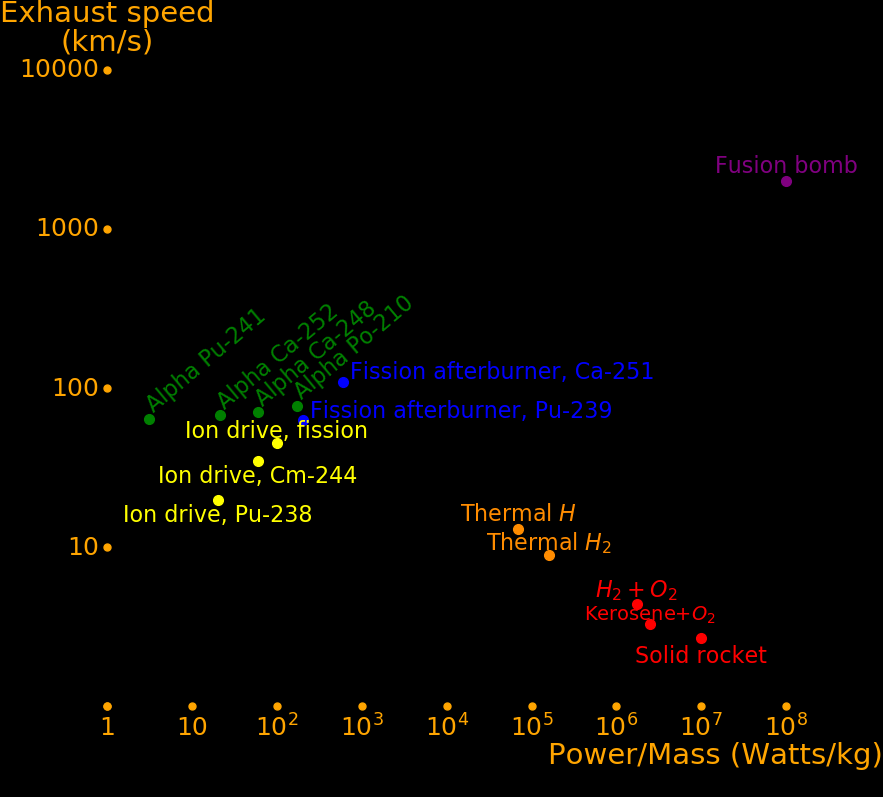 |
|---|
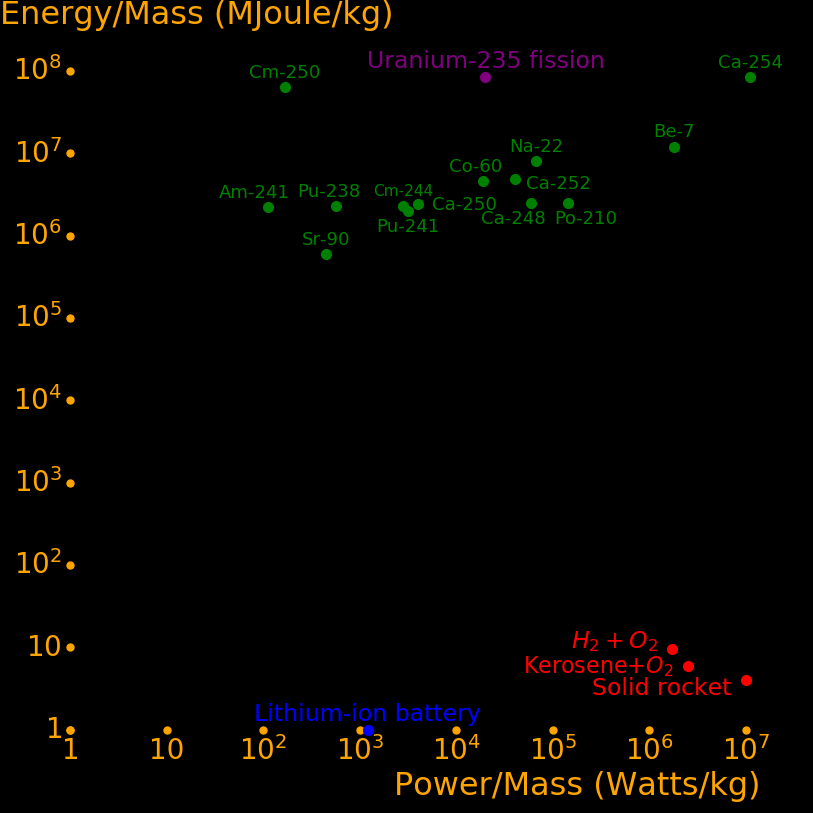 |
|---|
 |
|---|
 |
|---|